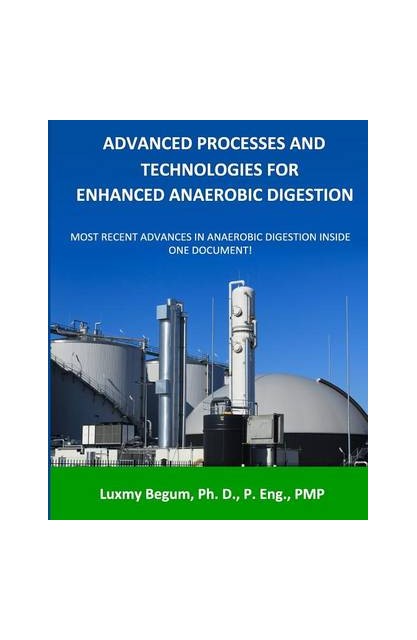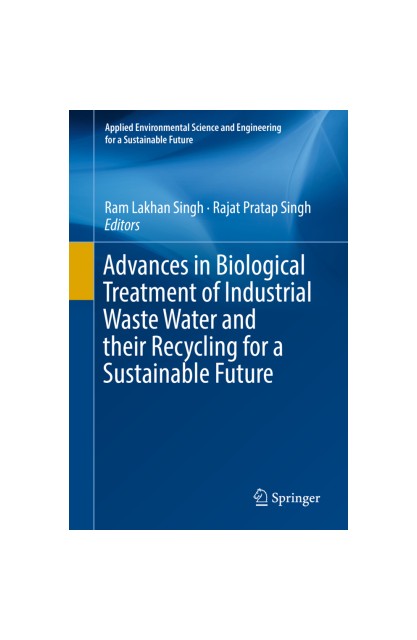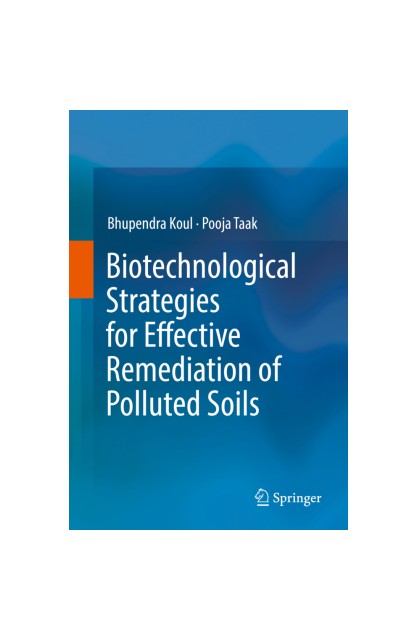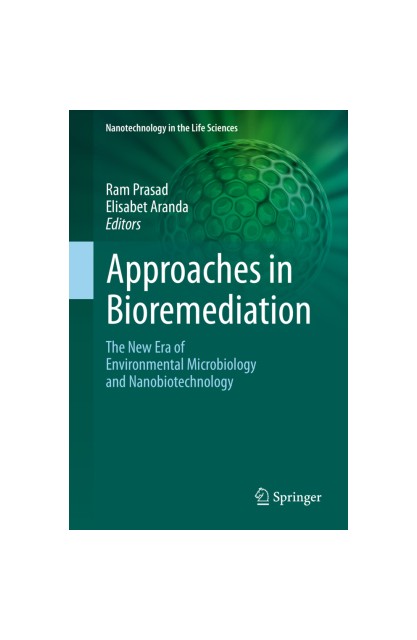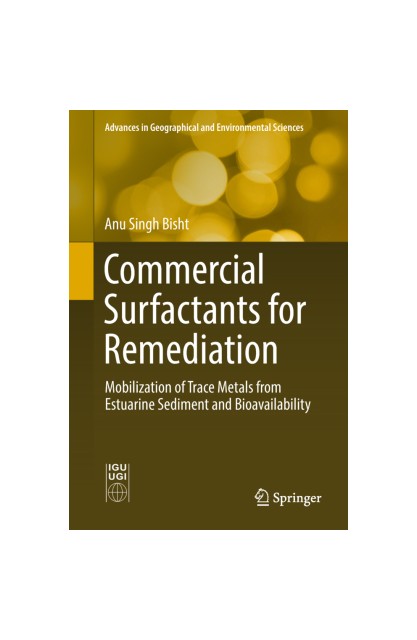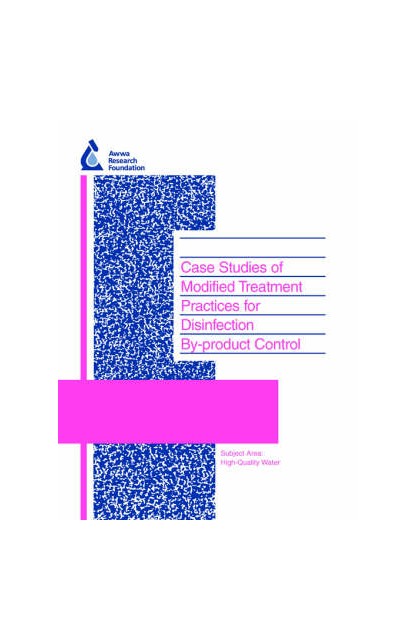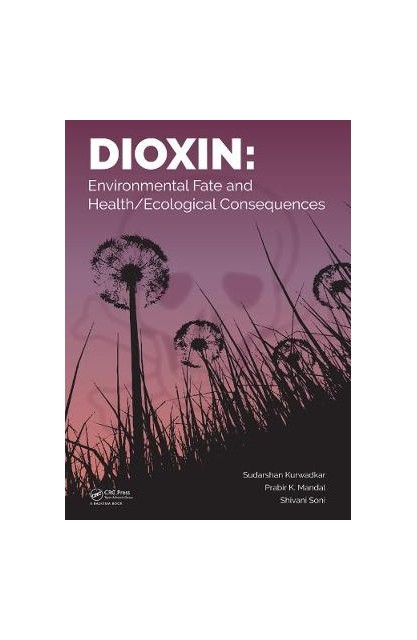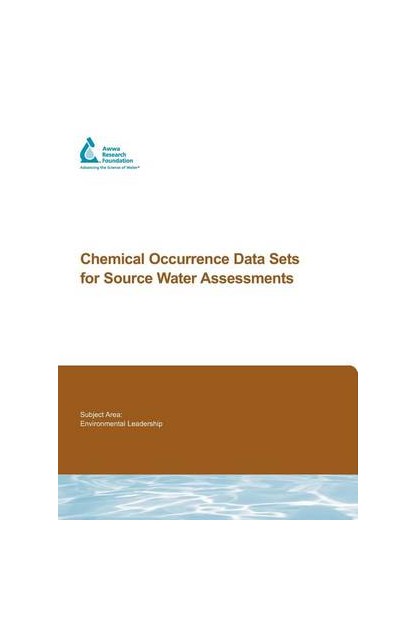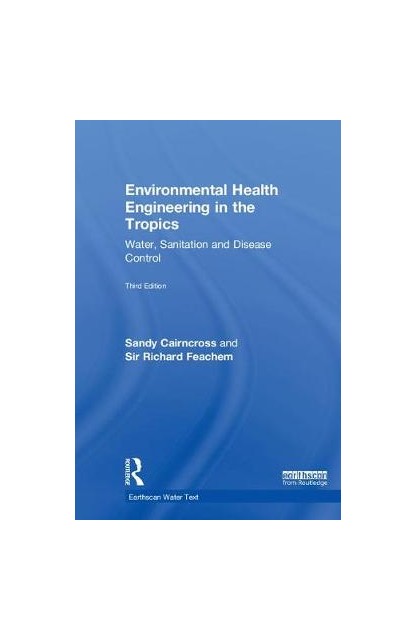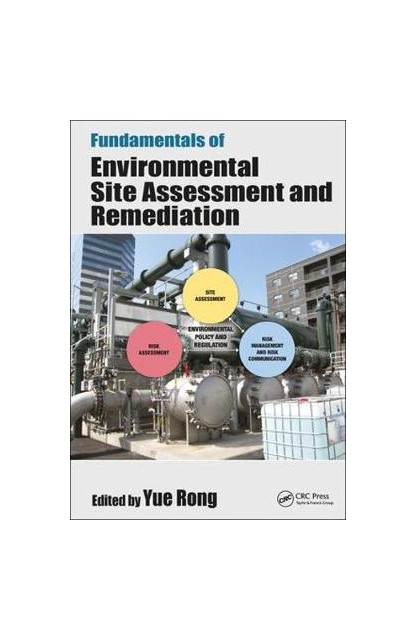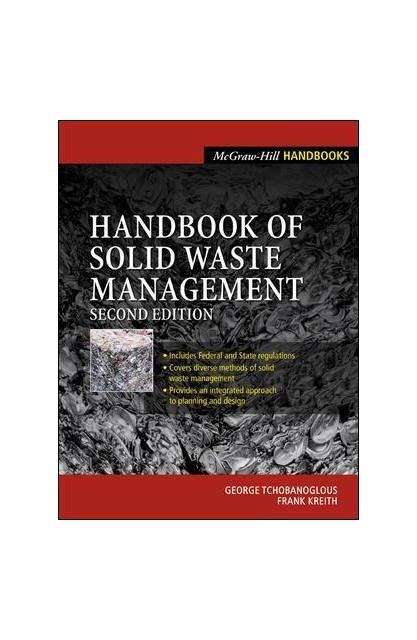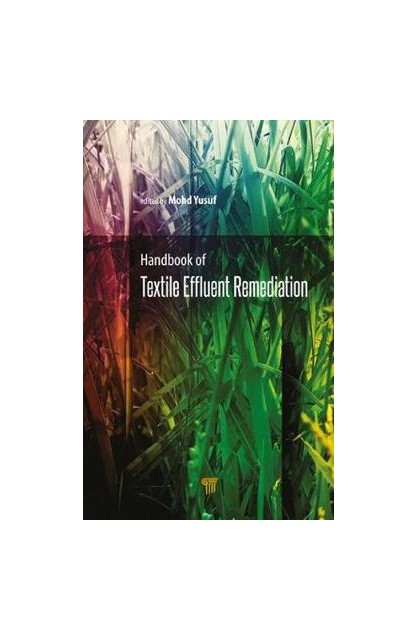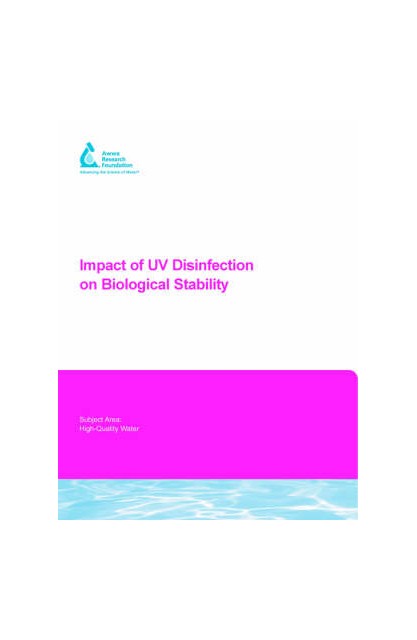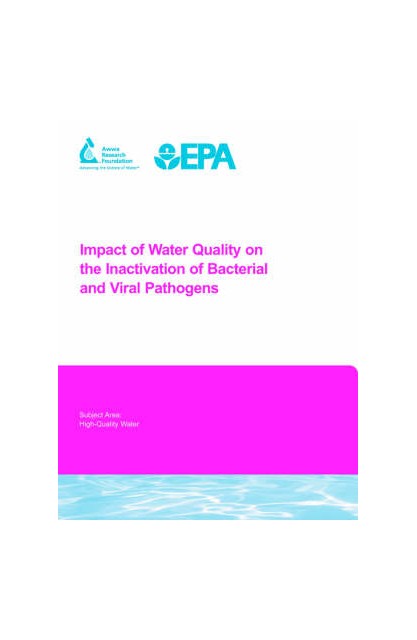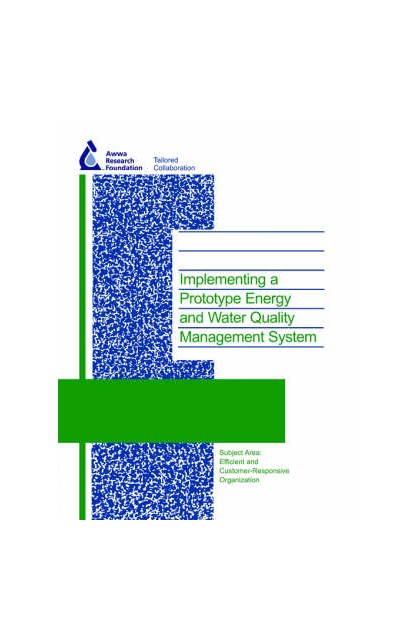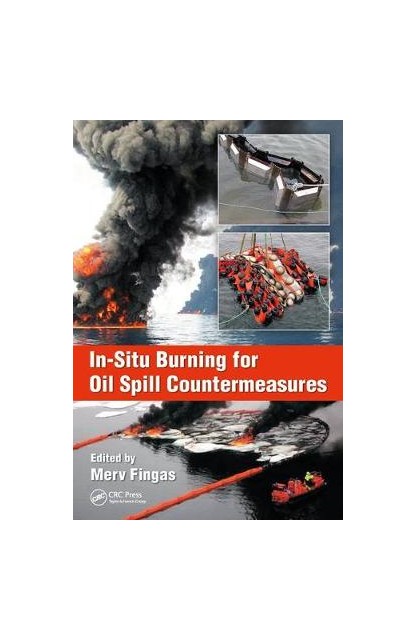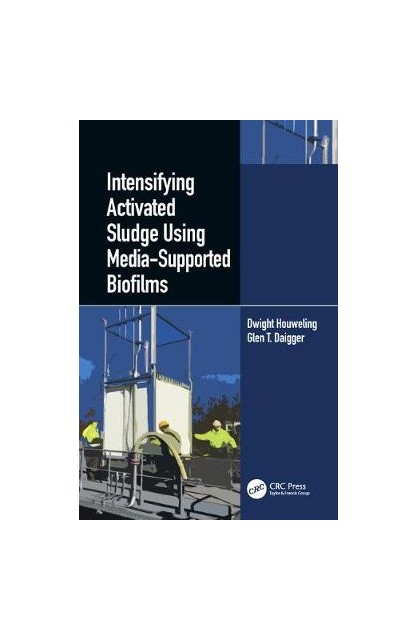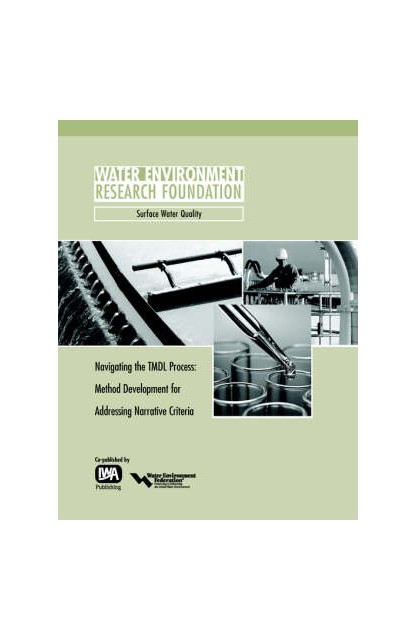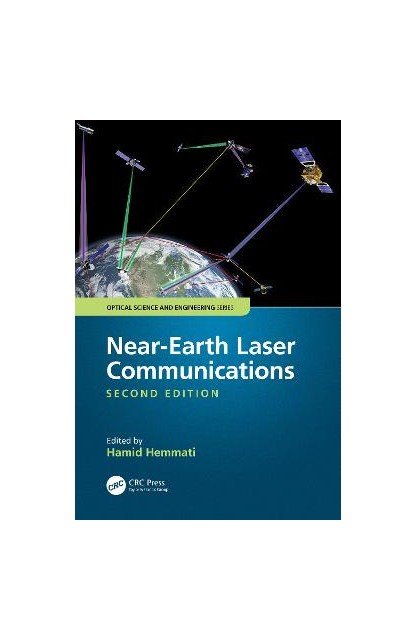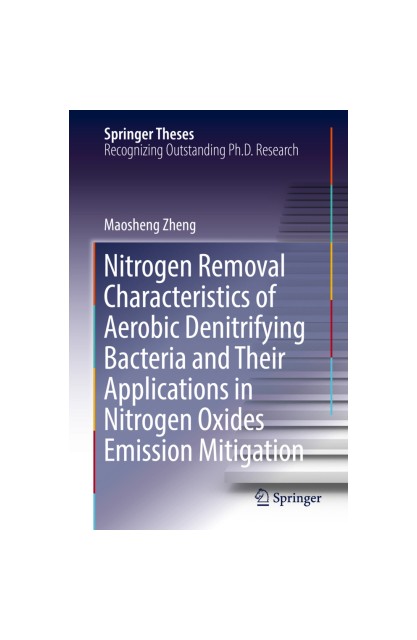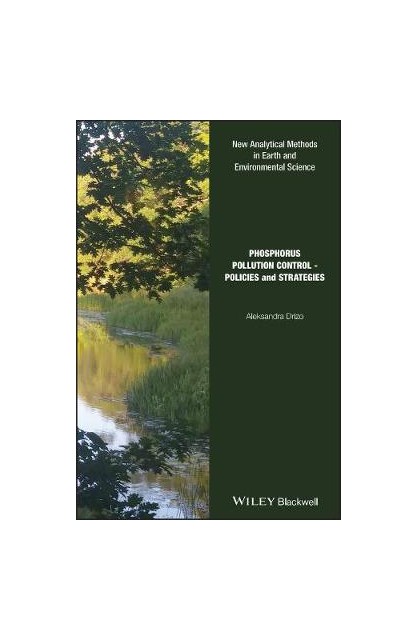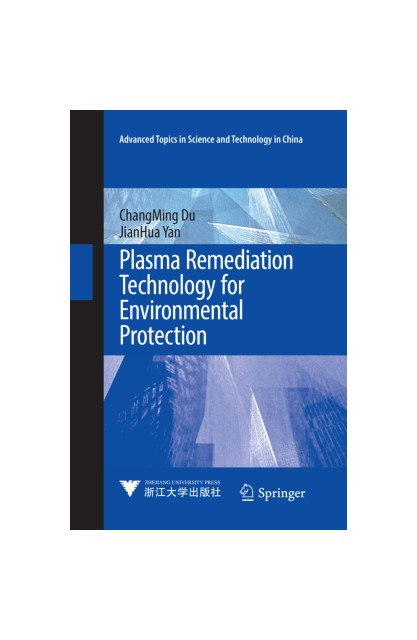Jonathan Herring
Annabelle Lukin
Bjorn Scholz
Claudio Vita-Finzi
Anthony Hope
Bob Tricker
Karen Viney
James McCalman
Chris Britton
James F., PhD, CISM, CISSP Ransome
Ken Lawson
Eng Hseon Tay
Aaron Hillegass
John Gedo
P Eck
L a Aaltonen
Irene Fountas
Caio Lima Firme
William R. Scott
Ruth Craven
Graham Bartlett
G Herrera
M. A. Hayat
Nelson Duran
Kwang Jeon
Bobby Chinn
Scwaibold
P Lynett
Claude Strickland
Gemma Cribb
William Roberts
Jack Smith
D Krasner
A Simopoulos
Angel Gonzalez Urena
Cheryl Simone
David Hernandez
Zarah Ghahramani
C Tuczay
M Price
Mandy Baggot
Matthias Holweg
ICE
Timothy Garton Ash
Gary Mechler
Lorraine Jean Hopping
Michael Panzner
Peter Gehring
Rosalie Callway
Joanna Reed
A Zullo
H Fritsch
Cinzia Trenchi
Simon Langley-Evans
Jim Arlow
D Djokic
Steven Barnes
Robert C Atkins
Claudio Cepeda
Sam Knight
Rory Nugent
Damian Williams
Hideo Takabatake
Angela Stancar Johnson
Christopher Barker
Colin Sterling
Mattias Belting
Frank Miller
Agnieszka Sękowska
Anthony Mescher
Garth Marenghi
MOWEN
Roger Lundblad
Baidar Bakht
Jacques Biton
Brian John Tomlinson
C.S. Forester
R. Dobie
Ranjit Roy Chaudhury
Ade Lokiki
Richard Feachem
John Steinbeck
Vicki Beeby
Debra Meyers
F. H. Kayser
Connor Gorry
F F Orsucci
Srinivasan Chandrasekaran
Katie Gutierrez
Dale Angell
Norgina Wright Penn
S. Rajachandran
Sara Humphreys
Arne De Keijzer
Carmelo Mesa-Lago
M Blair
Boris Pleskovic
Paweł Lenarczyk
. HBO
Nick Waplington
Detlev Zwick
David Levithan
Susan Echaore-McDavid
Kyle Mawyer
Alexandre Vital Tilman
Annie Auerbach
Ervand Abrahamian
Patrick Wood
Frances Moore Lappe
Thea Kuppens
Jacek Betleja
Annette Smith
Christopher Chapman
Ingolf Salm
Andrew Peitzman
R Subramanian
J Walker
Vesna Kadelburg
Lauren Gardiner
P Chang-Ho
P Chopra
Frederick Burwick
John Winterson-Richards
Louise Carruthers
Kate Wiles
etc.
Sokoloff A
Bernd Lauterbach
James Howe
Herman van Leeuwen
Elizabeth, PhD, MT, CLS PhD, MT, CLS Zeibig
ARTHUR CONAN DOYLE
John Kraska Jr
Uwe Goehring
Phil Molyneux
H Bruyninckx
Clive Spiegel
Editha Platte
Steve Rawlins
James Joyce
Linda O'Keeffe
Terri Sjodin
P. H. Cullum
Hedy Cleaver
Mark Kaiser
Katherine Russell
Cooper
John Clancy
Anthony Trevor
B V Hony
N.C. Jagan
Chris Seddon
Wieczorek A.
Myint Win Bo
Iain MacRury
R Pazdur
Iraj Sadegh Amiri
Andrew Raftery
Diego de Merich
Ching-Hong Ho
Rebecca Shaw
Dan Meegan
Jacob Cammarata
Professor Catherine Fieschi
Ivar Lodemel
Cathy Doherty
Charlotte Sweeney
Yanan Yin
Xin Chao Wang
Homer MD
Chris Hadfield
Lauren Jones
Barry Buzan
David Forsyth
Forest David
Colleen Ryan
Katrin Juliusdottir
Siamak Shojai
Julian Kitching
Andrzej Marszałek
Sharon McFarlane
Korina Miller
Shelby Van Pelt
Ann Francke
Ray Randall
Edward Mowlam
Matthew Meadows
Mark Green
Simonetta Manfredi
Office for National Statistics
Alma Harris
Robby Riggs
Brigid Laffan
Lawrence Ross
Eric Brousseau
Vanessa Rebecca Sasson
Gary Adams
Andrew Newberg
Sally Hayden
Wendell Odom
Ian Stannard
Rodney Boyer
Yehiel Yeshaia Trunk
Brian Reid
Fadhil Rahma
I. A. Potts
Bernard Mees
Ofer Mendelevitch
Marc Glucksman
Cathrine Degnen
Liang-Jiu Jia
Mark Dix
Zhe-ming Wang
D. H. West
Srinivasa Sivakumar
Ross McGill
Jane Lawes
Cutting Edge
Allan Headley
B Armstrong
Michael Hanlon
R Virchow
Steve Berry
Tay Eng Hseon
Zygmunt Gryczynski
Elyssa Dimant
Merlin Stone
Kang
Bill Adair
J Manuel
Lawrence Freedman
Daniel Chow
Derek Bok
Lauren Myracle
John Hareas
Peter Fitzroy
Jerome Henry
Paul Geraghty
Tony Plummer
Andrew Fish
Micki Krause
Fadzil Noor Gonawan
Regina Obe
Anja Mutic
Janice Nairns
Andrew Lichtman
Boris Pilneiiak
Charles Wilkinson
Zupagrafika
I Damjanov
Takuro Sato
Bin Zhou
O.Ray Whittington
Robert Jeffress
Jaroslav Legemza
Herman Melville
Rebecca Martinez
Rajesh Biswas
William Murray
Jilly Cooper
Jeanne Reardon
M Horninger
Pamela Ganshow
H. Cohen
Scott Shafer
Jan Etherington
Gregory Sand
Hershel Raff
Roger Mason
Jonathan Allday
Andrzej Białynicki-Birula
Koyoharu Gotouge
Peter Lunenfeld
Elizabeth Watson
Jan Tumlir
George Beech
Anita Woolfolk
Brigid Brophy
Ben Harris
Crawford Kent
Christopher Fox
Josep Llados
Nilanjan Dey
Mary Phillips
Clare Firth
Evgeny Polyakov
Vera Zamagni
Melina Costi
Jon Hinton
Gerard Hodgkinson
Danny Dorling
Jack Ziegler
Abby Fox
Taro Noguchi
Scoular Anderson
Matthew Homewood
Caleb Dayley
Anthony Iaquinto
Thomas Menkhoff
M. Hernandez
F Rose
John Beckford
Robert Gunther
Deborah Pavan-Langston
Laurie Mullins
Ralph Weisheit
Jim Cummins
Zidong Wang
Gina Hill
Srinath Srinivasa
Liang Cheng
Edward Harris
Satoshi Horikoshi
Richard Havers
Lee Hean Lim
Alan Wall
Dmitrii Makarov
Anna Płatkowska
Alexander Milson
Colby DeRodeff
Paul Wrangles
Tom Nairn
Sabaratnam Arulkumaran
Guy Bass
Yvonne Colin-Jones
Rob Kraus
Max Brooks
Lynn Langfeld
Andrzej Sapkowski
Virginia Ruehlmann
Clip Art
Rupert Butler
Sadhguru Jaggi Vasudev
Balaji Hiranandani
Jonathan Garner
Carlos Gomez-Rodriguez
Allan MacGregor
Chase Mitchell
Libby Martinez
Carl Lygo
Pamela Oldfield
John Black
Mohammad Vasef
Eschle
Hanhua Zhu
C. J. Skuse
E. Schulte
Max Parasol
T.J.T. Spanos
Ed Madison
Shirley Becker
Lee Johnson
Thiam Tan
Ciecierska Joanna
Damian Warburton
Manuel DeLanda
C.P. Conlon
Dawn Saunders
Mary Wollstonecraft Shelley
Stephen Graham Jones
Mary Maloney
Adriaan Th. Peperzak
John Washington
Karoline Thomas
Robert Brier
Penny Thorpe
Marcos Pizarro
Joanna Weinberg
Diana Dwyer
Monique Calisti
Ronald Barr
Charlie Jane Anders
Matthew Manning
Samrat Mukhopadhyay
Fifty Lessons
Lesly Huxley
Laura Gurak
Jon Fosse
Heather Wiseman
Hazel Bennett
Conway Lloyd Morgan
Coleen Degnan-Veness
Susan Gates
Gary Watt
Brian Murphy
Mitch Edelson
E Aryeetey
Yuming Bo
United Nations University
Anthony Garratt
Raymond Briggs
Alicia Christensen
M Duldig
Anne McAteer
Greg Attwood
Vincent T., Jr., MD DeVita
Lynne Gaetz
F Cogswell
Holly Moore
Morsi M. Mahmoud
Terry Krieger
Dimitris Margaritis
Erkki Brandas
Lynnette Kent
Sandeep Saxena
. Anonymous
Yucun Zhou
Jason Schmitt
Jim Marion
James Lee Burke
Teofilo Lee-Chiong
Lisa Chen
Wojciech Noszczyk
Suzanne Amador Kane
Timothy O'Leary
Paul Barrow
Mark Beasley
Paul Freedman
Basel Solaiman
Sydney LeBlanc
Curtis Frye
Charlotte Jean Sandhu
Pamela Kyle Crossley
Jason Heller
T.Grandon Gill
Judith Evans
Vishy Mahadevan
Daljit Gill
Manuel Ramos-Casals
Ulrich Jaehde
Kurt Jensen
Hans Hirsch
B.K. Kleinschmidt-DeMasters
Margaret Powell
Russel Hibbeler
Sean Coughlan
Tom Sandham
Kristiaan Demeyer
Christine Roussel
Angela Dowden
Leslie Hoffman
M.J.T. FitzGerald
Ernst Haeckel
Pisarenko Yury Andrianovich
Piotr Zaborowski
Joel Gallant
Themin Suwardy
Roestenburg Raymond
Walter Kempowski
Anhony Forster
Stojan Bracic
Sarah Baxter
Buckley
Dee Unglaub Silverthorn
Dann McDorman
Harry Finestone
James Butler
David Katz
Guoliang Wei
International Monetary Fund
Anne Wyn Clark
Graham Kennedy
Sheridan Titman
Guillaume Lang
Yingren Zheng
Kiang Hwee Tan
Grace Reilly
Jo Dunkley
John Mackinlay
Elaine Chiew
Patrick O'Neil
Alan Langford
Lee Roach
Cynthia Plotts
Nikolaos Stavrou
Margret Amatayakul
Melis OEzdel
Rod Fricker
Douglas Cumming
Gary Soto
John Micklethwait
Kurt Wolff
Jill Kirsten Robinson
Melissa Morgan
Katherine Bridge
Moose Peterson
Stephen Wynkoop
John Riesenberger
Tim Pruzinsky
B Smith
Avijit Gupta
Deepak Kakadia
Carol Lillis
John Wyndham
Robert Graham
David Sinason
Joanna Hampton
Margaret Leitch
Jacalyn Lea Lund
Patrick Fafard
W Schaper
Jan Harrington
Yash Chavda
M.Neil Browne
John Ridley
L Alexander
Neerav Goyal
Rafael Luque
Trevor Harvey
Jorge del Rayo Ramos
Alastair Smith
William Stratton
Rebecca Orr
Pippa Mattinson
Graham Macklin
Christopher Gostout
Daniel Fernandez
Margaret Atwood
Graham Davies
Francois Hebel
W.-H. Steeb
Susan Waggoner
John Hornsby
Alden Cass
Heinrich Klebes
T.K. Taylor
George Freedman
D A Turner
John Daniels
Richard Greenwald
Wayne Vogl
Roderick McKenzie
D Kerr
David Griffiths
Christopher Holloway
Richard Goering
Casey Wall
Vilk Patricia
Conrad Hughes
M Tokoro
W. Grayman
Michael Cunningham
Ewa Leseure
Christine Lagorio-Chafkin
Agnes Vandome
Ivan Radovanovic
C Scarpignato
Eric White
Scott Mariani
John Cameron
James March
Gary Porteus
Mark Watson
Professor Alma Harris
LJ Ross
Ed Sanders
Langton
Sue Hendra
Mike Daugherty
Spencer Anthony-Cahill
Heather Morris
Marina Lewycka
Shang Yang
Chloe Mayer
David Adlam
UNIDO
Suk Pannu
S Mendelsohn
Continuum
Lucia Ganieva
Amy Bates
Penny Johnson
Philip Alston
Stephen Weatherill
Corine Wegener
Stephanie Muir
Ralph Stahl, Jr.
Antonia Clare
Giovanni Piersanti
Vladimir Nabokov
Evan Osborne
Chris Barnard
Andries Beziudenhout
Tomie dePaola
Norton Greenberger
David Welch
Roger Blanchard
Paul Moran
Jelena Wysokińska
D. H. Lawrence
R. J. Palacio
Alan Katritzky
Paul Axelrod
A J Cronin
Allan Mitchell
Hehua Zhu
Stavros Kromidas
Mary Ann Young Von Glinow
Anand Halve
Dilara Nagib
Larry Viehland
Sarah Jo Brown
Paul Hoang
Paul Peter
Jackie Keddy
Gareth Peter
Anton Pavlovich Chekhov
Dana Stabenow
Lewis Holloway
Bill Spencer
Emma Damon
Roy Berko
B Davis
Georges Hubner
John Woody
Gerald Zarr
Jim Blythe
Joan Holub
Henryk Dancygier
Edwin Neave
John O.S. Wilson
Charles Taylor
Sidney Eve Matrix
Jesus Ferreiro
Casely Hayford
Nancy Dent
Tim Wilmhurst
Tom Murphy
R. Pardo Avellaneda
Marta Uminska
Rex Miller
Arvin Singh Uzunov-Dang
Pierre Colinet
Dug Cubie
Zhe-ming Wang
D McManus
Kids Collins
Ric Messier
Ross Horsley
Brijesh Iyer
Stefan Wölfl
Tarek Ahmed
Perry Mehrling
Hisashi Kashiwai
Jim Heid
Tom Ang
Robert Boyd
Tariq Mughal
Rebecca Gilpin
Karen Perry
Helen Goworek
Morrow
Esma Dilli
Alexis Averbuck
Michael Eysenck
Joanne Harris
James Nestor
R. Kohli
M. F. Chernov
S. Abudbaker
Holly Webb
Steve Carter
Yared Bayissa
Magdalena Komorowska
Aaron Woland
Alagappa
Institute Worldwatch
Teju Cole
Hao-Hua Wu
Richard Maun
Maria Arbatova
Robert Narloch
Matej Bracic
Jeffery Deaver
Steve Forbes
Andreas Neumann
Mary Width
Gerardo Huertas
Emily Matchar
Lee Child
Deborah Weiner
Ben Pastor
Nick Devas
Adrian Jones
Andrew Stone
Sue Moorcroft
Paperscapes
Claudia Thomas
W Ułan
Pierre Choderlos De Laclos
Becky Ohlsen
Chris Harris
Anthony Hooper
E Norman
Enrico Lavagno
Elizabeth Rayson
Mariam Gates
Philip Webster
Brian Jacques
D Ward
A. O. Bolivar
Nic Harris
Patrick Delaney
Hitomi Masuhara
Rajendra Chayapathi
D Batton
Jyotismita Chaki
Alex Carroll
Cathy Cassidy
Susan Kahn
Bedford
Harvey Cantor
Roger Zelazny
Sergey Dorozhkin
Christopher Watts
Emily Broente
Walton Roth
G Misra
Ragnar Löfstedt
Sheridan Le Fanu
Urszula Ciesielska
Anna Goodhart
Eric Wiebe
Andy Lancaster
Asim Kurjak
Tatsuya Shimoda
Helena Sęk
Neil Hanney
John Goodfellow
Daniel Short
Bridget Kendall
James Sanders
Mark Hampshire
Andrej Kielbassa
Barry Ager
Bryan Wilson
GRABBE
Louisa Jones
James Altucher
Sanjay Sharma
Matt Hall
Elizabeth Laird
Rolf Fjelde
J. Nicholson
Charles Lamb
Kenneth Miller
P.S.R.F. Mathijsen
Neil Hanney
Semakula Maroa
T.V.N. Persaud
Teo Banica
Constance Classen
Macmillan Adult's Books
Stephanie Dimond-Bayer
Robert Hostetler
Stephanie Lawson
A.V. Vyazmin
Daniel
Barbara Buchholz
Brauer
Martin Moynihan
Richard Frankham
Basant Puri
Brian MacPherson
Nam-Trung Nguyen
Tony Boyle
Dr David Lewis
Gill Thompson
Glenn Brookshear
Dieter Fensel
Steve Brown
Michael Goodman
Christopher Nobes
John Tarachine
Ela Bryson
Uma Jha
Graeme Kent
Philip Linsley
Vicky Shipton
Val McDermid
Helen Murray
Ron Petitte
Fernando Sanso
A Goldberg
Joseph Conrad
Patricia Thornton
Tomas Hult
Witherington Shanks
Kevin Raub
Matthew McCartney
Jeanne Ellis Ormrod
Michael Moser
Michael Drager
Suzanne Shelley
William Hachten
C. Ronco
Mark Edward Soper
David Bailin
David Nahmani
Richard Ericson
Wiesław Żylski
Aileen Ormiston
Lori Haskins Houran
Jessica Barker
Noland White
Andrew Mosier
Stephen Pascucci
Anna Holmes
Gregory Makowski
Berit Smestad Paulsen
Raina Robeva
Victor Burleigh
M Możdżeń-Marcinkowski
Albena Arnaudova
Karen Gleason
Tse-Lok Ho
Allen Burton
Jesse Kellerman
Suman Beros
John Forrest
Baignio Pinna
Rosella Cappella Zielinski
Geraldine McCaughrean
Philip Kazan
Paweł Babicz
Gui-Juan Cheng
Chatfield Tom
Alexandra Keller
Alan Saunder
Mildred Pitts Walter
John Man
J Peterson
P Bonda
Rachel Mulvey
Endre Kruger
John Kenelly
Michael Field
Nevil Shute Norway
G Mancia
Yousef Gargani
Jean Botha
K Booth
Maeve Binchy
Fred Danserau
S Gaines
Donald Gray
Marcel Croon
Becca Blond
Martin White
Ian Rutledge
Ingrid Wisniewska
Dwight Houweling
Andrew Dennis
Arnold Wilson
R Moreland
Jon Aster
Sara Cate
Archie Carroll
Tuncdan Baltacio Lu
Karina Paulina Marczuk
P Duret
(Sofia, Zhelyazova
Eva Rice
Frederic Baumgartner
Eunice Price
Munther Haddadin
Rob Williams
Elizabeth Gaskell
Robert Fabbri
Russell Powell
H Anheier
Mary L., Ph.D. Trump
Richard I'Anston
Duncan Cramer
Joanna Quinn
Nick Iuppa
Peter Davis
Muhamad Noor Harun
Sally Lesik
Markus Hattstein
Catherine Barnard
Ann Holmes
Ketevan Chkatarashvili
Jim Clark
M. Buchfelder
Sarah Hawkins
Jennifer Prah Ruger
Jan Pienkowski
Katharina Wilson
Ravi Murthy
Ingolf Tuerk
Dave Kirkby
Joseph Gambone
Douglass North
Jean Egmon
Vladimir Fridman
Paweł Krause
Richard Benny
Dorothea Wild
Terry Sincich
Michael Mulholland
Yonghai Gao
Clyde Haberman
Roberto Sassi
Professor Alex De Ruyter
Sebastian Faulks
Rajendra Sisodia
Lindsay McGregor
Curt Bartol
Crysfel Villa Roman
M.F. Reiser
Joe Ben Hoyle
Katerina Ruedi-Ray
Juan Vargas
Nadey Hakim
Andrew Abel
Fred Spier
Linda Chapman
Alberto Moncada
R Lakhani
Lewis Dartnell
Emilie Hudig
John Gray
Dora Thornton
Linda Rottenberg
Nicola Upson
Helene Druvert
R Magazine
Sanjay Kumar Shukla
C Brunk
Alexandre de Vogue
Jani Ilkka
Mengxi Liu
Tina Rae
Eric Prystowsky
Michael Morpurgo
Eva Mozes Kor
Judith Rugg
Justine Clark
Kara Lysandra Ross
I Herbert
F Carvalho
K Rummery
Kenneth Mattox
Rachel Lella
Marcio de Souza-Santos
Jeurgen Kessler
Storey
Kate Armstrong
James Homer Wright
Edmund Dickinson
Martin Mueller
Ian Warwick
Jinkun Liu
Debra Hiom
HQ Who
Julianne Pachico
Sandee Cohen
William Wilson
Stella Brzeszczyńska
S Heing
Khaled Hosseini
Ann-Helen Laestadius
O Ochoa
Thomas Herzog
Jenni Hendriks
J. Petty
Honghua Tan
Kirsty Logan
Kate Bradbury
Dominic Upton
J O'Donovan
K Koehrmann
Ann Turnbull
Nicolas Petit
A Galasinska
Nicki Jackowska
Finbarr Bradley
Markus Sebastian Braun
Patrice Tetreault
Emmanuel Melissaris
Janey Pursgrove
Donal O'Regan
G. Ananthakrishna
Igor Gaissinski
Carol Turkington
Ernest Aryeetey
John Suchocki
M Crool
Christopher Ah Wah Chan
British Red Cross Society
Andy Taylor
Simon Walters
Elizabeth Joseph
Joe Merlino
Ligang Zhang
Chris Ould
HERRERA & PINKLEY
Barry Buzan
C. Bouchard
David Wall
B Turner
Robert Rupiński
Jailan Zayan
Ross Montgomery
John Blankenship
Edwards Posy
Glenda Larke
Edward Bańkowski
Paul Rogers
John Wright
Elizabeth Cody Kimmel
P Dew
Evelyn Julia Kent
Vijay Anand
B. Johnston
Jani Ilkka
Orin Thomas
Luis Raez
Angela Burt
L a Peacock
Johan Hjelm
Alain Damlamian
F Kaihura
S Standring
Mocchegiani
Gustave Flaubert
Anita Ganeri
James Borg
Jacob Marcus
Masahira Anesaki
Robert Rivard
Jorge Luis Garcia-Alcaraz
Andrzej Krocin
Jacqueline Paris
Alan Dershowitz
Raimund Mannhold
Stephan Stuerwald
Will Mabbitt
Giles Calver
Sergey Lopatin
Praveen Pattathil
E. McCollough
Krzysztof Kandut
Sian Rees
Scholastique Mukasonga
Owen Hughes
John Sevic
Amira Ashour
Bjorn Munkvold
Dr Elizabeth Christopher
Walburga Appleseed
Ben Donald
Winston Groom
Colin Wiggins
Kate Davies
Zidong Wang
T. Orr Munro
Dave Chaffey
J. D. Isaacks
Paula Bruice
Thomas Croft
Catrin Brown
Morganne Walker
Sean Bartram
Wiley Larson
Jane Koutnik
Chris Sanderson
David Holmes
Ben McFarlane
John Sinnott
Ridgway
Calvin Trillin
C Clubb
Jay Bonansinga
Wojciech Sadurski
Nikki Grimes
Annaliese Soros
S. B. Thool
Joseph Hoeffel
Steve Wilkes
David Harris
Rand Morimoto
Donald DeWitt
Annie Altamirano
C.A. de Quadros
Ladybird
Andrea Hoffmeier
Jason Gartner
Ruth McCall
John-Henri Holmberg
D Stellmacher
John Santrock
Fritz Haake
Martin Rowson
Rajagopal Chakraborti
Mark Seddon
Steve Cui
Barry Render
Renata Grunwald-Kopeć
Jonathan Doh
Patrick Wen
Woon Siong Gan
Peter David
Meredith Belbin
Paul Baccas
Barbara Coloroso
Stephen Morillo
Jaroslaw Dobrzynski
Francesca Gavin
Jeroen Wielaert
Rathan Subramaniam
Jack Grimwood
R.Scott Granneman
Mick Finn
M. E. Rose
Martin Herbert
Stephen Perez
Rob Percival
Peter Darman
Nancy Soderberg
Beschin
Ben Kiekenbeld
A Gregory
Georgina Blair
Kazimierz Jaśkowski
Elżbieta Rudomina
Stephen Jones
Ross
David Machin
Jonathan Doherty
Conrad Gamble
James Robb
Roberto Osti
Thomas Cahill
Alan Russell
Susannah Bowen
Nigel J.H. Smith
Sue Heaser
J. D. Murray
Shirley Barrett
Evangelos Spyropoulos
Anthony Fauci
Tim Alexander
Parks Coble
Dan Jones
Stephen Raab
Amy Bass
Cecil Bozarth
Dale Maharidge
John Grisham
James Buchan
Mirjam Pressler
A Bettley
Susan Ritchie
Kenneth Agar
Nicola Tedman
Frances Jenkins Olcott
Mohsin Hamid
Jonathan Cole
B.W. Sellwood
Arkady Ostrovsky
John Spelman
Rebecca Ross
Hishaam Aidi
Beryl Bainbridge
Cynthia Cornelissen
Kim Laidlaw
Peter Dragicevich
Thomas Stanton
Nina Hjelde
George Kouvaros
AO Publishing
Kabelitz
Stephen Gribben
Sai Ding
Adele Parks
Gerald Shapiro
Tchórzewska-Korba Hanna
Dongxue Han
Encyclopaedia Britannica
Annwyn Avalon
Brian Scott Dickson
John Townsend
Beth Sims
Mark Dapin
Kendall Martin
Carolyn Henly
Geoffrey Cordell
George Spiro
Judith Herdin-Winter
John Stuart Mill
Joseph Disa
Tapio Salmi
Chris Eaton
Workman Publishing
Routledge
Jean-Jacques Rousseau
Adedeji Badiru
Michael Rabow
Joseph DiPiro
Roger Haywood
N Aery
Stefan Mumaw
Christiana Spens
Christopher Wlezien
Chad Corbin
David Moses
Verne Meyer
Christopher Paolini
Ben Midgley
Kenn Mark
Erlet Cater
Ralph Stair
Miguel de la Guardia
Helmut Peitsch
K. O'Leary
Nicolas Barrall
Sook-Bin Woo
Claire Norton
Margaret Lial
Jos Van Rozen
Joann Elmore
Mariusz Biliniewicz
Robert Zoellick
M.B. Friele
Nigel Cross
Colin Graham
Magdalena Droste
Louis Sandbak
John T Edge
Laurence Sterne
Christopher Preble
Susan Stephenson
Mackenzie Davis
Ed Neville
Michal Malinowski
Gabrielle Pritchard
Charlotte Greig
Anneli McLachlan
A.K. Mulford
Peter DePasquale
Srijoni Sengupta
Homer
Torsten Bert Moeller
Jim Eldridge
Thomas Keneally
Philip Zimbardo
Tom Rowley
John Helliwell
Pietro Aretino
John Doe
Jeff Lindsay
Alfred Russel Wallace
Andreas Fuhrmann
Madan Mau
Juliet Alderson
Kathryn Szabat
David Faulkner
Jill Koyama
Dominic Pulera
Jerzy Ignatowicz
Janusz Danecki
Ahmed Afrose
Misha Petrovic
Dianne Wolfer
Lisa Porter
Nate Blakeslee
Jules Verne
World Of Information
Pierre Bourdieu
James Maivald
Harry Holt
Samer
Ch. Bail
Kent Matthews
Martin Bajus
Mark Hammer, Jr.
J.F. Rosenbaum
Henry Spencer
Paul Clikeman
Ronald Worsham
Chris Mocella
Martha Abell
Jennifer Moore-Mallinos
Angela Jowitt
Worldwide Education Cisco
Kerry Wilkinson
Leo Wang
Marcia Cornett
Ian Sinclair
Camille Nebeker
Sarah McWilliams
S Hughes
Jean-michel Dubernard
Dr Laura Schlessinger
Katie Daynes
Bożena Romanowska-Dixon
David Chestnut
H Lange
Mark Freedland
Michael Martin
John Sharp
Scott O'Dell
Haidi Hammel
Shirley Sagawa
John Sorrell
Maryla]ne Stock
Nigel Bullock
Lis Green
Geoff Black
Dominick Gray
Geraint Fuller
Pavel Karen
Clive Agnew
George Beahm
C. A. Plaisted
Edward Towpik
Gill Budgell
Todd Brewster
Directors Club Art
Colby DeRodeff
Jose Antonio Garcia Sanchez
Gołąb Bogusław
Fabrice Douglas Rouah
John Gibbs
James Clawson
Ann Jorissen
E Long
U Aksoy
Jan Randall
Alexandra Stross
Amitabh, MD Srivastava
Kathy Glass
Peilian Guo
Heinrich Mattle
Frank Ling
Writam Banerjee
Paul Quintas
Davor Solter
Ron Gompertz
Jamie Coleman
Frida Ramstedt
Manuel Velarde
Stephen Maddox
Fazal Sheikh
Don White
Joel A., PhD Vilensky
Osamu Dazai
Aline Templeton
Uche Nnaji
Leandro Carneiro Fonseca
Francois Guerquin
John Halksworth
Ruth Kelly
Harry Max
E Lysoe
T. G. Ashplant
Helen Jarvis
Frederic Martini
Maggie Mason
Roger Dassen
S Dutta
Joanne Weinberg
Vladimir Bychkov
Stephen Goldberg
Richard Chizmar
Nina Stibbe
Miles Hudson
Stefan Grissemann
Aman Gupta
Roman Kozierkiewicz
Kiefer Lee
Ian McDonald
HALLIDAY
Basma bint Talal
Matthias Loehr
World Health Organization
Peter Flaschel
Keith Harding
Alvino Fantini
Małecka Agata
John Rittinghouse
Terry Goodkind
Karin Sixl-daniell
Robin Williams
Jeffrey Jackson
Satyajit Das
Fiona Beckett
F. E. Higgins
Heather Wiltse
Deborah Phillips
Alon Avidan
Neil Blitz
Carlo Pellegrino
George Klein
Igor Vintizenko
David Rifkind
Christiane Gunzi
Raymond Blair
Peter Hom
Kathy Burke
Erik Kostelijk
T.R. Harrison
Kevin Bampton
George Roussos
Chee Khiang Pang
Alina Iacob
Dr Maureen Duffy
Willy Vlautin
R Hilman
M. Criado-Sancho
Jane Crossin
Stillman
Robert Gildea
Mills
Paul Kennedy
Danielle Steel
M Cadnum
Mary Albert Darling
Daniel Dunn
Janet Strachan
Bert Bates
Wade Hudson
Werner Kahle
J Stockand
Matthew Stubbs
Jim Simon Plumtree
D. N. Panigrahi
Ann Macaskill
James Crabtree
Maria Hanna Niżankowska
Nicolas Mera
David Almond
Jean Michel Boucheix
Anthony Richards
Nnedi Okorafor
Chris Barker
Bruno Cignacco
Kent E Neupert
Ashis Banerjee
Zhanchang Wang
Justine J., Ph.D. Reel
Tom Marcus
Earl Stice
Richard Power
Janusz Książyk
Vincent Escande
Michael Dempsey
Mitch Albom
National Research Council
Alix Carey
P Koopman
German Advisory Council On Global Change (Wbgu)
Thomas Cashman
Lola Akinmade Akerstrom
Donald Goellnicht
R. M. Zinkernagel
Arlette Emch
Jim McGrath
Jane Dyer
Edogawa Rampo
Robert Davis
Paul Goldberger
Priyabrata Ghana
Steve Trimper
J.K. Rowling
Reinhard Bork
Rosalind Malcolm
A Mattoo
Marek Świerczyński
Niamh O'Keeffe
James Kavanagh
Philip Auerswald
Herbert Farjeon
Contemporary
E Ludwig
Peter Howells
Dan Poblocki
David Landau
Paul Richard
Maggi Payment
Sandra Wesseling
Nowicka Irena
Dawn McMillan
Scott Jeffrey Miller
Russell Winer
William Schwab
Dale Henkes
Przemysław Polański
Ben Woolley
Botanic Gardens Kew Royal
John Steele
Roy
I H Tuncer
Gwendolyn Kaltman
East
Ian Wilkinson
Golder Wilson
John Hancock
Christopher Surie
Michael Moffett
Liam O'Callaghan
Ralph Stahl Jr.
Peter Vardy
Janice Baniukiewicz Stickles
M. Hoppe
Chih-Yu Kuo
V Getov
Karl Misulis
Alison McClean
Elizabeth Partridge
Clifford Odets
Nicholas Schonberger
Donnal Baker
Katherine Lewis
Sukey Tarr
Voenix
Cass Sunstein
Anne Hellman-White
Peter Tait
Joseph Friedman
David Turner
John Towsend
Bruno Dubois
International Accounting Standards Board
Gregory Bernarda
M Bury
Ronald Anderson
Sibeal Pounder
Barry K.B Berkovitz
Joe Hoover
Po-Hsin Shih
Luke Gibbons
Dennis Connolly
Henry Frank
K McMullan
Fyodor Dostoevsky
Andrew Ashwin
Angela Lane
Virginia Maxwell
Charles Hackett
Jacob Goldstein
Bao Bu Chi Rou Rou
Jane Reece
R Mattick
James O'Brien
H. Leopoldseder
C Rawlings
Shida Bazyar
Moshe Dror
A Berlin
Kathy Kacer
Emma Lewis
Marty Stepp
Melissa Broder
Jonathan Safran Foer
Joanne Silvester
Cq Researcher
C Bangma
Mark Gladwin
Andrew Creed
Lindsay Clandfield
Pam Fisher
Hassan Khawaja
Thomas Kohnstamm
Beverly Hashimoto
John Sutton
John Anderson
Stephen Harding
Frederick Gault
Lukasz Sadowski
Michael Miller
Stephen Shmanske
David Kroenke
MaDonna Maidment
Iain Maitland
Bartosz Michalowski
Debbie Eccles
Professor Richard White
Doug Bowman
Todd Swanson
Mathilde Janier
Tracey Ullman
Joseph Valacich
Wendy Tabrizi
F Woude
Dave Wanta
L. Puig
Life Magazine
H.J. Kretschmann
Yuri Baranovsky
Sytems Inc. Citrix
Stephenie Meyer
John O'Reilly
Rachel Ren Russell
Thiam Chye Tan
Fiona Sussman
Lawrence Burns
Millar
Ian Markham
Ian McEwan
Sandra Bernhard
William Walters
Thomas Schoenbaum
Mary George
Johanna Spyri
Michael Anthony Steele
A Adams
Richard Hall
I Press
Britna Helena Mikkelsen
Leif Hertz
Tipton, Krause
Steve Fallon
Andrew Schafer
Henk Beentje
Claire McGourlay
Heather Dawson
H. Kunachowicz
Thomas Garite
Raphael Gellert
L Nagarajan
Eileen Ahlin
Tughluk Abdurazak
Lucy Clarke
Carol Vorderman
John Bachtler
Helmut Föll
Anthony Sattin
Krishan Vij
PhD, Ransome
Grant Morrison
Valerio Massimo Manfredi
S S Agrawal
Perle Besserman
G. F. C. Rogers
Leslie P., PhD Gartner
Rosie Danan
John Mongillo
Susil Baral
Thomas Lee Pearcy
Katarzyna Dorota Kopeć
Alias
Akira Toriyama
James Poterba
M. H. Gold
Ewa Turska
Silvia Bertoluzza
Nicole Taylor
Terry Hayes
Rafiq Elmansy
Cabi
P Bavoli
M Lisboa
Cristian Bonetto
Jill Poole
George Miles
K Anderson
Libor Jansky
Jan Mühlfeit
Anne Gilroy
Glenn Morgan
Resmaa Menakem
Olivier De Goursac
Laly A. Pothan
R Giulianotti
Peter Collin
Aitber Bizhanov
Ben Clothier
Ronald Henry
Yvonna Lincoln
J. Leparc
DARA (Development Assistance Research Associates)
Jennifer Lyall
Yoram Wind
David Berger
J Cech
Joseph Martocchio
Emma Grange
Andrew Pressman
John Gimlette
N Gilbert
M. Pittiruti
John Sergent
Nick Serpone
The Rolling Stones
Lay Leng Yeap
C. P. Cooper
Susma Bhattarai Gautam
Migena Zagonjolli
Yuan Gong
Michael Gregg
Alice Oseman
M Zayani
Pratap Kumar
Amir Ranjbar
Marcus Chown
Duncan Richards
William Manners
Tom Hardy
Ari Marmell
Nadya Peterson
Dover Publications Inc
William Punch
K van Golen
K. D. Tripathi
Jeremy Bullmore
Casseres
S Piro
Daniel Ratner
Greg Bevan
C Smith
Jean Belliveau-Dunn
Steven Corbett
Keith Wrightson
N Freeman
Randy McGonegal
Katie Khan
M. Schunke
Andreas Economou
Nathanael Tilahun Ali
Richard Drake
Stefan Sell
Gabriela Weiss
of Directors Institute
Yang Jizhou
Justin Scroggie
James Sinopoli
Eric Mazur
Sergio Germani
Lesley Ferkins
Richard Kadrey
Gerhard Meisenberg
Pearson Education
Ravi Prabhu
Benny K.G Theng
Adam Kay
Celia Dale
Arthur Cronquist
T Brabazon
Sylwia Firyn
John Quinn
Thomas Krueger
Mike Chen
Stephen Wiacek
Dr. Adnan Khalil Pasha
Thomas Zdeblick
Jacob Covey
Stefano Zuffi
Siobhan Curham
H. E. Sales
J.Charles Alderson
Grażyna Francuz-Ornat
Avi Loeb
Kim Smith
Lisa Webley
D Warrell
Timothy Murray
D Turner
David Stefancic
Sima Motamen-Samadian
Kevin Lee
Michael Quinion
Stephen Roth Institute
Claudia Kreuz
Erik Kostelijk
Bronwen Moran
Steven Rosenberg
Jan Kabili
Jeffrey Cogswell
Daniel Graham
Eliga
James Bethune
Ilia Yampolsky
D Sims
Scott Grunneman
Will Faurot
John Karnay
Janet Larsen
Jane Miller
David Loose
E Johansen
Vahid Mohsenin
Brad Johnson
Prins
Grzegorz Orłowski
Thomas Edmonds
Patricia Seybold
Chris Hogan
H Huh
Roger Blanpain
Sibte Hadi
Mark Cooper
Vivian Head
Steven Hirsch
Clifford Edward Clark
Michael Goldstein
Tony Clarke
Paul McGillick
Ivan Damjanov
Ricardo Cubedo Cervera
Roland Radziwill
Leonardo Dagdug
Otto Kaser
Melike, Pekmezci
Amit Rawal
A Colon
Yijin Wert
Michael Glynn
Nuel Emmons
Joseph Stiglitz
Fiona Beddall
C Brundenius
Estomih Mtui
Gilles Neret
John Murphy
Peter Huxley
Singiresu Rao
B White
Anna Dover
Anton Chekhov
M Cheung Chung
Simona Strnad
David Holt-Biddle
Michael Wagner
Cherith Baldry
Lesley Eames
Michael Shugrue
Józef Opara
Keene
Jorge Herrera
Irene Barrall
Fiona Lucas
Claudia Girardone
Cesar Marolla
Claire Freedman
Tao Chen
Stephen Robbins
Graham Masterton
Michael Hayman
D Pfaff
Rider Haggard
Cornelia Funke
Jonathan Weyers
Andrew L.-T. Choo
Ian McMahan
Ian Christopher Fletcher
Amy Lee
Michael Blain
Emma Donoghue
James Halteman
Erika Tamar
Stephen Blackwell
Genevieve Taylor
Gregory Raymond
Elizabeth Lindsay
Marcus Wagstaff
Larry Rockoff
Bill Ferguson
M. Natesh
Anne Price
John Sloman
Clement Coic
James Kirkpatrick
Spear
John Thomas Dygdon
Sanjay Mahajani
William Arens
Chunling Du
Anders Ericsson
Mark Marinella
Nimaria Lee
Alan Sangster
Mariana Trusson
Andrew Zureick
Lucien Dhooge
John Dunn
L.G. Alexander
David Bernstein
Yaser Dahman
Alison Stacey
Chris Crutcher
Cheryl Evans
Roy Casiano
Patricia Mertin
Geralyn Frandsen
Carl Wu
Ian Norton
Trent Swanson
Louise Pile
Stuart Soroka
Dominic Bradbury
Sawday
Siamak Khorram
Doug Turnbull
Brian Shaw
Deborah Kespert
Emily Shaw
Carlos Moore
Janet Barnett
Daniel Sullivan
R Schexnayder
Karen Marcdante
Slings
Marcantonio Spada
Eric Baker
Sergey Glebov
Ivan Roitt
Nicola Mabbott
R Reichl
Michelle Coxall
Piotr Hofmański
S. Ranade
Rosalind Dixon
Fred A., Jr. Mettler
Kate Ellis
Ronelle Alexander
Donald Gibson
Martyn Palmer
(University Bailin
Henry Morris
Jorge Barrio
Nic Cicutti
Pascal Hesse
H.A. Domanski
James Dwyer
A. K. Blakemore
Amanda Welch
Jean Racine
Paula Manning
W. Bruce Cameron
Dean Ramsay Appling
Anne Booth
Ceridwen Dovey
Daniel Blythe
Sardar Islam
Stephanie Kaiser
Randall Peffer
Jacqueline Grima
Miroslav Nincic
Roger Dunn
Nick Best
Helen Kent
Eli Ruckenstein
Ryan Goodman
David Harvey
Anouar Majid
Marek Kwietko-Bębnowski
Abhinav Karan
J. J. Wilson
Sally Hulks
Dick King-Smith
M Ignatieff
Peter McGregor
Rob Lambert
Barry Epstein
Roger Smalligan
Reshma Shah
Sharon Paice MacLeod
Pooja Taak
Andrei Linde
Jacqueline Wilson
Cheryl Wilhelmsen
et al
Alvin Evans
Emma Spitzer
Trish Deseine
Roberta Bosco
Michael Blain
Cheol Eun
Vinita Bhargava
Ken Powell
Brian Barber
Louise Wickham
Maria Cristina Mariani
David McGeary
Elizabeth Aylott
Russell Ware
Louis Jordan
A Stilman
Damian Maye
Kim Cavanaugh
Roger Horberry
Lizabeth Allison
William Pariseau
Viviane Gontijo
Clare Yarwood-White
Darlyn Wolvin
American Academy of Pediatrics
Stephen Eisenman
Scott Budde
Antonio Lo Faro
M Ranke
Adam Doble
David Kitchen
Simon Hewitt
Oprah Winfrey
D. F. Wittenberg
Patrick Woodward
C Montgomery
Mahdi Moosazadeh
John Terrell Fry
Eleftherios Dounis
Deborah Malpas
Kitty Kelley
S Ballum
Craig Schiller
Elizabeth Creamer
David Wright
Omer Aydan
Jeff Hoffer
Nikolaus Sifferlinger
Anna Frackowska
Carol Ann Duffy DBE
Laurell Hamilton
Leslie Gartner
Mohamed Fahad AlAjmi
Bjorn Haugen
Ella Mae Matsumura
Jason Murgatroyd
Malinda Lo
Piercarlo Valdesolo
Lucien Young
Fumikazu Yoshida
Mikhail Kuzmin
Jonathan Berk
Ian Moore
Bonnie Spanier
Aiman Zaher
Andrew Nystrom
Dan Eldridge
Julian Kilburn
Julie Murphy
Danaher S.
Karl Jones
Edgar Lerma
Wotug Technical Meeting (26th 2003 University of Twente)
Ray Fair
Antonio Parra
Bryn Caless
James Conroy
Pratima Bajpai
Jodi Smith
Mara Vorhees
David Mankin
Roger McGough
Polly Horvath
Jill Abramson
Iarc
Phyllis Richardson
Roger Kirby
Paresh Shah
Judy Galens
Yibing Li
Thayer Scudder
Charlie Higson
Alex Irvine
John Finnerty
L.David Hillis
John Bowen
Robert Wearing
Studd
Edward Allen
Linda Ferrell
C Ng
KD Tripathi
Edward McQuarrie
Ewa Jagoda
Catriona Hall
Robert Kreitner
Andy Smart
Anthony Haywood
Christopher Breward
S Koch
Stuart Smith
Barbara Ingham
Robin Haffner
Baligh El Hefni
Adam Zagajewski
Mark Vonderembse
Latha Ganti
British Museum Press
Ronald Dahl
David Brown
Polly Sentance
P Hooser
Rashid Khalidi
John O'Neal
Mortira Natasha Vanpelt
Henrik Johan Ibsen
Edwin Cooper
S. K. Acharya
Kathleen Botham
Scott Berg
Stuart Smith
Andre de Zanger
Mala Gupta
Torsten Bert Moller
Noel Sheehy
Alan Axelrod
Susai Rajendran
Lesley Bowker
Martin Evans
Oakie Williams
Mark Haynes Daniell
Facts & Comparisons
David Nicholls
Giada de Laurentiis
Elliot Page
Angela Murray
Stuart Sim
John Hartley
Goutam Saha
George Eells
Sara Gibbs
Tony Gaddis
Becky Albitz
M Antonia
Lewis Holloway
Troy Lanphier
Megan Goldin
Jackie Willis
Janina Koscialkowska
Georgia Hambrecht
Richard Pike
Regis St. Louis
Helen Fisher
Eric Carle
Aarthi Ravikrishnan
Dennie Heye
Marie Kondo
Lucas Vidgen
Kshama Kaushik
Janet Godwin
Michell Aspell
David Safier
Agnieszka Kowalewska
Frances Eales
Christopher Pollitt
Kraut R
Dijiang Huang
Carol Atkinson
Sanjib Chandra Sarkar
Keith Barker
Justine J., Ph.D. Reel
Jeffrey Hoffer
Jennifer Sumner
F Baader
Elaine Ives
The Worldwatch Institute
Bernard Marr
Heekyeong Lee
J T Willerson
Paul Burton
James Dollins
Marvin Zelkowitz
Sandra, FBA Fredman
Anurag Kumar
Carol McCullough-Dieter
Melvin Bishop
Penelope Hawkins
Ruud Schropp
Kevin Deans
Hubert Bromma
Hans Koppel
Kim Sperduto
Susan Cline
Christopher Hanzie
Edwin Brady
HarperCollins
Peter Laws
Małgorzata Paszek
M Siegrist
Eleanor Lawrence
Kerry O'Halloran
Ming Kon Yii
James Hamilton
Kurt Andersen
Dorothy Irene Sack
Sibte Hadi
Rob Barton
Carg
Iris Reed
John Bennett
Singapore_WEE
David Shrier
J.R.R. Tolkien
Amy Balfour
Serge Berthoin
James Flint
Francis Yammarino
Rosemary Adam
Emily Wilcox
Jan Awrejcewicz
A. M. Chandra
William Banks
Suzanne Gay
Włodzimierz Stankiewicz
John Bird
Mark Wellington
Hanna Alwas-Danowska
Thomas More
Richard Mitchell
Marcel Proust
James Quick
Tundan Baltaciolu
Chris Rees
C. Nickel
Dave Prowse
Martin Griffin
G Griffiths
Marion Berbineau
Annette Huber-Lee
Lee Frost
Keith Carabine
Andrey Platonov
Zara Mirmalek
Hueston
Ann Braun
Dan Gabriel Cacuci
Scott Doggett
Monica Ali
John Gerlach
Dag Lubitz
Andreas OEchsner
Benjamin Farrand
Jo Nesbo
M. P. Furmston
R Lee
Luc de Wulf
Steve Potter
Lou Kuenzler
Hank Preston
Albert Link
Mai Jia
Steven Weingartner
N. F. Billups
Simona Rabinovitch
Belverd Needles
Calvin Hobel
Jonathan Ferrar
Laura Fredricks
Richard Thompson
Allan Farnsworth
Nigel Foster
Sy Taffel
Kenneth Laudon
Gerald Zelenock
Zhiyuan Wang
Malgorzata Lekka
Joachim Schnier
Sean Blitzstein
David Wingrove
Femida Handy
Meryl Cole
Marc Melitz
Jerome Litt
Xin Min Lai
Harvey Rosen
Moorad Choudhry
Dariusz Hajdukiewicz
Huang-Cheng Chang
Dean Croushore
PhD, CISM, John Rittinghouse
Kathryn Mannix
Amy Fine Collins
S.R. Lakhani
P G Harris
Raymond Kelly
Sergio Armenta
R. B. Parkinson
D Johnson
Anna Burns
Sidney Goldstein
Dutt
John Wild
Tim Bewer
Jean-Charles de Vogue
Alex Galis
Elizabeth Tudor
Stuart Butler
Lonneke Dikmans
Michael Wardle
Andrew Ross
Marion Billet
Lyons
Potter Style
Pamela Wojcik
Sukhendu Dey
Carolyn Barraclough
Dingermann
Gary Horner
Raffaele Landolfo
H Bartsch
Phillip Dellinger
Setsuo Ichimaru
Professor Johnjoe McFadden
Dan Green
Anne Stephenson
Thomas Koehler
Fennell
Nathan Marz
Steven Zaloga
Nadia Bulkin
Dionisio De Niz
Bernard Lewis
Louis Rosenberg
Yabin Sun
Alicja Żarowska-Mazur
Delphine de Vigan
Susan Wittig Albert
Willie Hirsh
Ji Ho Lee
Karen Hodges Miller
Michelle Galindo
James Ellroy
Kamala Harris
Eric Esquivel
Alice Tapper
Steven Johnson
David Goldberg
Lesley Cookman
K Grabska
Kate Spohrer
Dietmar Sternad
TOY
Michael Cain
James Penner
Jill Rutherford
William Glendinning
I Sinclair
Sylvia Wolf
M. A. K. Halliday
William Lazonick
H.Douglas Brown
William Pallister
Farhad Huwez
Robin Mama
David Grant
Nick Jones
James Halderman
Kate Wrightson
Chaim Roifman
Peter Weisenseel
Barbara Hojel
Dr. Daniel Innerarity
Elliot Gindis
Brian Speer
Robert Dickson
Anne Chang
Leonardo Pinheiro
Aref Jeribi
Paul Ali
Jon Sopel
Daniel Butler
Lars-Magnus Engstrom
Prof. Andrew McGee
Zhigang Li
Chris Lynch
Adam Jolly
Philip Lewis
Theodore Schwartz
A. MacLullich
Alex Galis
Charles Pluta
Sian Ellard
Peter Rees
Editors of Klutz
Paul Kimmel
I. Lefkovits
Michael Mednick
C Townsend
H Berger
J. Bhatia
Jianhua Yan
Putnam
Anthony, MD Chang
W R Crocker
Joachim Schröter
C. Q. Press
Matityahu Clark
Surya De
Terri Apter
Stanisława Szlachta
M Ashok
Jodi Picoult
Tsugumi Ohba
Stephen Kuby
G Demiris
Gaylon McCollough
Emma Cline
V. T. Farewell
Karin Nordin
Steve Baron
J Tam
Jagatheesan Kallannan
Jocelyn Potter
Rabbi Nilton Bonder
Dirk Cussler
Derek Franklin
Selcuk Agca
Douglas Smith
Safal Ghimire
Edward Tarbuck
Bonnie MacBird
Simon Hickie
Sascha Sardadvar
Ulrich Nehmzow
David Zastrau
Marc Woods
Michiko Aoyama
DK Travel
Laura Engel
Inna Feldbach
Kermit Heartsong
Suzanne Bell
Susan Easton
Elizabeth Wilcox
Nicholas Sammond
Jim Malone
Audra Diers-Lawson
Dan Smith
Jean Grugel
R Kyte-Powell
Foster
Bradley Barnes
Hampton J.
John Pierce
Mathias Risse
Jeffrey Shapiro
Carmen Armillas
Cindy Laura Mitchell
Jason Butler
Shari Last
Elizabeth Tudor
Stephen O'Connell
Christopher Stave
D Rajagopal
John Mattone
Steven Lattimore McShane
Anthony Adams
James Fleming
Jeff Biddle
Terry Fry
Ji Qi
Wendy Abrams
Shaul Bartal
Nicholas Aquilano
Felipe Korzenny
Laurie Baum
Paul Volberding
Udo Kreickemeier
Larry H.
Michael Moore
John Dryzek
Design Gmbh Forum
Christopher Crockett
Barry Crocker
Jeffrey I., MD Cummings
C. F. Iggulden
Kate Binder
Alasdair Blair
Ernest Naylor
Lucas Dietrich
Joseph Pearce
Joel Schechter
Thomas Schmitz
J Mulshins
Evripidis Kaltsonoudis
Henry Emblem
David Parker
Nigel Kelly
Liz Croft
Paweł Piątkowski
Allan Chochinov
Plato
H Hansen
James Chambers
Brian Hardin
Peter Bennett
Frank Zoellner
Lou Dubose
Helena Page Schrader
Norway) Scandinavian Conference on Artificial Intelligence (8th 200
Katherine Lemons
Olga Tokarczuk
Gretchen Davis
Thor Heyerdahl
S.C. Basappa
Dennis KASPER
Kristin Loftsdottir
Christian Nagel
Kirsten McDougall
William Young
Radhavinod Raju
Paul Baccas
Fabio Ausender
Emily Bronte
Yoko Akiyama
Mary Habeck
Ramkishen Rajan
Sachiko Toyozato
Nathalie Nahai
Bill McRae
Nishioka Kyodai
Pat Barker
Alan Schatzberg
R.A. Spicer
Fred Hoffman Rhodes
Roger Smith
Cara Hunter
Adam Luedtke
George Cole
Doug Lansky
Bill Baker
David Cotton
Douglas Cameron
Andrew Goudie
Cinar
Geoff Sumner-Smith
Randall Bruins
Adam Karlin
John Knight
Robert Louis Stevenson
Judith Taylor
Markowska Renata
Susan Coolidge
Roberta Grobel Intrater
Marina Catallozzi
Jeff Savit
Simon Forty
T Ozben
Wysokińska Jelena
Michael Solomon
Professor Greg Anderson
John Richard
International Spring Fuels & Lubricants Meeting
Ines Hofbauer-Steffel
Colin Mason
Dr. Arun Gosain
Michel Barsoum
Paul Zikopoulos
Mike Searle
Tony Scott
Joel Lacey
Hiroshi Okada
Bob Hastings
Terry Schwinghammer
David Lowe
Homayoun Tabandeh
Jane Chisholm
Mario Triola
Kenneth Barclay
Aria Danika
Margaret Ryan
John van Rys
D Dougherty
Patric R Delaney
Piotr Jakubów
Mitoseriu
Grzegorz Kolodko
Philippe Ciarlet
C Ronco
Merle Reeves
Frederic Worms
Eun-jin Jang
K Applaum
Jennifer Carroll
Nicola Husing
Dorothea Wild
Gerald Falchook
Edward Said
Jacek Holowka
Abdul Nassir Bin Ibrahim
Robin Illingworth
Veronique Tormey
Jatin Agarwal
C Fu
Spero Cataland
Museo de Arte Contempor Aneo de Castilla y Le on
Nancy Haliday
Sri Ravishankar Sri
Thomas Harris
Raymond Forgue
Hank Green
Robert Clymo
Lloyd Alexander
Christine Coulson
Tolison
Ali Mufit Bahadir
David Kent
Emil Reif
Philip Reeve
Gareth Rubin
Geoff King
Trevor Montague
Rappert
T Sullivan
David Auer
Elise Kova
Adam Lashinsky
Giancarlo Cravotto
Anne Coombes
Andrea Bonetti
Liang Gao
You-tien Hsing
Henry Spiller
Rocco Versaci
Nilton Bonder
H A Meek
David Klebanov
Benjamin Senauer
Louise Schofield
Arthur Lyons
Gunn-Young Choi
I Abu Arafeh
Bernard Burnes
Gary Borkan
Russell Chun
Robin Abernathy
Lee Krajewski
Sam Hepburn
Peter Lourekas
Russell Powell
Courtland Bovee
Rosalinda Alfaro-LeFevre
E Butler
John Ostrom
Malcolm Sargeant
Sheng-Lin Chang
Schwiebert
Pat Criscito
Val Runge
Benvenuti
Wieslaw Krajka
Professor Vera Zamagni
John Nofsinger
Martin Bates
Noah Zimmerman
Christophe Mathoulin
Raymond Ian Gilbert
Sam Baer
David Niven
Sue Mongredien
Lance Fusarelli
Jamie Pittock
Harry Pardue
Sophie Repp
ODPM
Jeffrey Aven
Margaret Davidson
Renee Skelton
Glenn Shepard
Frank Sochacki
S Douglas
J Lindsay
Bonnie Bader
Jane Barrett
Randy Shih
Michael Lieberman
Rachel JaDean Pinnow
James Hanlon
Zhenbin Liu
Marco Mumenthaler
Maryanne Maltby
Benjamin Steinberg
International Committee for Social Science Information and Documentation
Carol Traver
Thomas Schultz
Duncan Richards
Ed Kemp
D.A. Kazenin
Sharon Propas
Volker Barth
Andrew Roberts
Professor Christopher Chapman
Benjamin Hubert
Jonathan Gabay
Alwyne Wheeler
June Payne-Palacio
Tetsuya Ikeda
Tracy Traynor
Posy Lovell
Chris Fehily
Friederike Jin
Frank Muller
J. D. Denniston
James Lull
Seong-sun Im
Rick Hayes
Maja Pitamic
John Browne
S.M. Tuli
Robert Adams
Jack du Brul
Ta-Nehisi Coates
Judith Tillson
Tom Charity
Faisal Mahroogi
Rebecca Stevens
Peter Jones
Brian Leavy
Mark Sanders
Sheila Dignen
Richard Sterling
Joe Bindloss
Alfred Greiner
Edith Nesbit
Andrew Livesey
Agata Małecka
John Rittinghouse, PhD, CISM
Lynda Juall Carpenito-Moyet
Johan Redstrom
Kevin White
Samuel Nelson
Olha Hrytsyna
Aneta Szymkiewicz
Brad Meltzer
Nag Mani
Mary Hoshiko Haughey
R Hoppe
Joachim Zuther
Vince Flynn
Neil Botten
Robert Peters
Sam Lightstone
Samuel Brownstein
Josh Loveless
Maria Dolores Echeverria F.
Empel
Peilian Guo
Fred Lopez
David Sagar
Joe Manausa
Sriram Bhat M.
Strokes International
Karen Harman
James Lever
Luke Ferretter
JJ Wilson
Jorg-Wilhelm Oestmann
Eric Nussbaum
Jan Harold Brunvand
Kim Tasso
Paul Marino
Mike Rossiter
Ida Flynn
Pam Krueger
Hans Katen
Taylor-Gooby
Frank Wilson
Richard Brenner
Matt Harrison
Dee Silverthorn
Zbigniew Rudkowski
Samuel H., Associate Professor of Ph LiPuma
Paul Behrens
John Pinel
P Naster
Zoe Diana Draelos
Piotr Trojański
Mark Podwal
Annie Vinter
David Garson
Irene Chan
Julie Moore
Andrea Hoffmeier
Priscila Destro
Vladimir Lumelsky
Anatoliy Bataev
(formerly Wragg
Caitlin Schneiderhan
Maryanne Mowen
Anthony O'Brien
Dimiter Alexiew
Sara Rich Dorman
Karen Whalen
Reverend Richard Coles
Ann Parson
Vesna Maric
Klingensmith
German Advisory Council on Global Change
Misty Vermaat
Mike McCormack
Donald Weber
Anna Beltrami
Jeff Brown
Rachel Wilson
Naomi Norman
Michael Gilbert
Glenn Rand
A Guest
Naomi Lewis
E.O. Chirovici
Alan Poulter
Mark Freedland FBA
Mike Molan
Ellen Hamilton
Łu Żarnowiec
Terry Lynch
Roger Priddy
Mordechai Kreinin
Eric Hill
Witold Gombrowicz
Derek Chen-Becker
Sarbuland Khan
Harold Pinter
Devin Fan
Dean Leffingwell
Phyllis Chesler
Sean Condon
Irena Nowicka
Julie Mitchell
Frederick Burwick
George Bodnar
D. Berg
Eric Hunley
Ioannis Economou
Avijit Gupta
Frank Collins
Karl Turekian
Rajinder Kumar Dudrah
Vincent Del Casino
Mary Coleman
Nduka Okafor
Allan Millett
William Ganong
Christine Brentani
Stephen Allen
Simon Schaaf
Robert Darvas
Rakesh Kumar
Alan Garner
Richard Berman
O. Kohler
Yih-Chin Tai
Steven Withrow
Kurt Drickamer
Stephen Coppel
Garrison Keillor
Andrew Motion
Alex Johnson
Clifford Bennett
Jennifer Thibodeaux
Professional Engineering Publishers (PEP)
Jeff Doyle
John Paul Mueller
I Lee
Jacek Malejczyk
Wayne Alexander
W. R. J. Waite
Abraham Castellanos-Silva
Philip Scheltens
Yulan Qiu
Patricia Papadakos
Yoko Akashi
Alexis Maybank
Barry Turner
G.R. Holland
Jens Muller
Peter Smudde
Jacques Ranciere
Jean-Louis Halperin
John Tomes
S. E. Hinton
Christopher Batchelor-McAuley
Robert Gildea
Christian Bryan-Zaykov
Franklin Garcia-Godoy
Rana Conway
Li Wei
Jennifer Hartmann
Charles Corwin
A.L. McLeod
Sarah Harte
Sy Taffel
R. I. Pocock
Rebecca Kuang
Professor John Mukum Mbaku
Niels Hagoort
Rakesh Donthinenini
James Hansen
Catherine Coe
Freya Marske
Beatrix Potter
Deborah Clayton
David Lucas
R Leger
Neil Wilson
Anne Layne-Farrar
Philip Kerr
Geoff Brookes
Dariusz Mrozek
Kevin Kwan
Kerry Christiani
David Gerber
Leila Patel
Berit Smestad Paulsen
William Briggs
Rob Jones
Gary Rosenzweig
Gayle DeLong
CHAMOT & DEMADO
Paul Drain
Rajiv Mehta
Grzegorz Klimek
Tanya Shields
Adrian Holliday
Joseph LaViola
D Windus
Gary Rozanc
Louise Nicolson
Philip Kotler
Catherine Aird
A Hill
Terry COLLINGS
Ramesh Bansal
D Lipsker
Wolfgang Weinrich
Merv Fingas
Inc. Citrix Systems
Elizabeth Kay
Dan Oja
J Pulver
Tan Kim Teng
Maria Rabiej
Dan Stone
Chris Pierce
Maria do Carmo Coimbra
David Bradley
Richard Grant
Joseph Pugliese
GrandMasters
Rod Downey
Frederick Day
Allan Zullo
Jenny Hamilton
John O'Brien
Claude Kanaan
J Johnson
M Mattson
P.R. Bunker
Hersh Chadha
Norbert Bacyk
Theodor Adorno, Else Frenkel-Brunswik, Daniel J. Levinson, R. Nevitt Sanford
Y Quintanilla
Liqun Chen
Beata Przygoda
David Felten
Tom Tyler
A Jain
L Honnefelder
Tienlon Ho
James B., Jr. Comey
Anna Crowley Redding
Peter Wostner
Andrzej Karcz
Patrick Minford
Bob Woodward
Jr., Munns
Angus Donald
Gordon Reece
S.S. Agrawal
Anita O'Day
H. I. H. Saravanamuttoo
(Gilmour, Hertz
Tina Baker
John Montgillo
Larousse Khosravi Khorashad
Dongliang Chao
Eva Barreira
Christos Panteliadis
Hideyuki Furuhashi
Heinrich Heine
Tiziano Treu
Margaret Heffernan
Giovanni Russo
W Killy
Alex DeMille
Zorana Gee
Lucas Otto
R van der Hoeven
M Feldman
Who
Mark Thompson
Elizabeth Smart
Ann-Marie Szymanski
Nevelina Pachova
S. P. Maurya
Erik Schulte
Jennifer Davis
Kathryn Lasky
Ann Lanchon
Siji Mary
Abid Thyab Al Ajeeli
Wallpaper*
Luca Anceschi
John Viescas
Ruth Carter
P Santrach
C. Mysore
Chris Weston
Irina Zacharcenkova
Ann Ford
George Fuhrman
Jimmy Knight
Paul Glasserman
Lynne Reid Banks
Jim Malone
Douglas Kennedy
Jackie Marsh
O Popov
Rex Forehand
Heidi Swain
Udo Kreickemeier
W Ganong
Peter Holland
Cornel Mulhardt
Christina Lovelock
Yun-Jiang Rao
Brien Posey
George Martin
Steven McGiffen
Rick Glanvill
Charles Nault
N Moussis
Chwan-Hwa Wu
Regina Schoenfeld-Tascher
Albert Saganich
Vladimir Volman
Barbara Freese
Dianne Hales
Don Jordan
Robin Talley
Jamal Hoballah
Mary Grosvenor
C Anyaku
Rodney Rhoades
Mark Horenstein
David Farnell
G.F. Kovalev
Ahcene Bounceur
Donald McQuarrie
Languages Oxford
Szcerbiak
William Ward
Tao Li
K. Wesker
Mark Bovens
Bonnie Shimko
A.Wayne Vogl
Rebecca Mendoza Saltiel Busch
Fernando Aramburu
Edge Women's Research Group Cutting
Lissa Bainbridge-Smith
Harry Turtledove
M Sternemann
Robert Rivas
Isaac Nahon-Serfaty
Danny O'Brien
Cody Goodfellow
Russell Ritenour
Anna Kuna
Jerome Vanclay
Jason Malinak
D Roberts
Gerald Seymour
Nancy Langston
Nasrin Afsarimanesh
Sarah Lewis
Eiri Elvestad
Laura Klos Sokol
Fran Wilde
David Spiegelhalter
Rupinder Walia
Grant L
Silvana Fiorito
Grażyna Kostka
Naomi Alderman
James Martin
Robin Headlam-Wells
Generowicz Grażyna
D. E. Matthews
Stephen Rabley
Aaron Levine
Elspeth Berry
Marty Roth
Andy Law
Alessia Amighini
R.L. Stine
Yongcheol Shin
Alistair Cooke
Jayme Lynn Blaschke
Matthias Leonhardt
Steve Mills
Jack Barraclough
Tommie Norris
David DuChemin
Norbert Herber
Jean-Yves Tadie
Kathryn Hughes
Brian Wood
Lorna Parkes
Rossen Donev
B Mako Hill
Lisa Jane Gillespie
Jeffery Martin
A Moreno
James Hart
Shelley Tischkau
Timothy Cuff
Bram Stoker
John Vacca
S Hiscox
Andrew Lansdown
Bor-Yi Tsay
J Theobald
Arjang Assad
Trevor Harvey
Marczyński Wojciech
Joanna Gray
Matt Fearnow
Amy Williams
Robert Hughes
Neal Salisbury
Beverly Engel
Ming Wang Fu
Ogenyi Omar
Virginia Cullen Reichert
Ralph Wheeler
Józej Andrzej Kozłowski
Vladimir Makanin
Diethelm Wallwiener
Fausto, MD Rodriguez
Luca Anceschi
Patrick Fitzgerald
Federico Milano
Simon Cross
Jey Odin
Worldwatch Institute
Dima Jamali
Laza John
Dennis Bray
Glen Gabbard
C. Balaji
Linda S., Ph.D. Costanzo
Rosanna Bowles
Ann-Christine Albertsson
Alastair Innes
Diane Zak
Karen Evans
Mike Lewis
Richard Fitzpatrick
Franco Battaglia
Robert Forbis
Catherine Cooper
Michael Parkin
Kelly Behan
N Friary
Alison Stacey
James McGrath
Lena Guberman
Trevor Archer
Jay Barney
Yusuf Bhaiji
Yuwei Zhang
Johannes Rohen
Nicci French
Jane Bull
Matthew Dennison
B. Koletzko
A. Sousa
Berdell Funke
Dr. Cortada
Jeremy Whittle
M Sundstrom
Svien Harald Oygard
Steve Voake
Edgar Alan Poe
Frank Stilwell
Jenny Giles
Dan Carrison
Jurij Andruchowycz
E Krupinski
Cecily Von Ziegesar
Massimo Fioranelli
Andrew Faulkner
Conrad George Carlberg
Angus Forbes
Irving Taylor
Glen Arnold
Lily Snowden-Fine
Molly Holzschlag
M Freedman
Marla Goodman
Ganesh Arunkumar Samdani
John Barrick
Philip Smith
Great Britain
B Toffler
Rosemary Gray
J.-Ph. Allal
Lin
Wazir Jahan Karim
Dan Herron
Catherine Gowthorpe
Yolanda Zappaterra
Keith Pringle
Lawrence Norfolk
Erlet Cater
Atkins Health & Medical Information Serv
Karen Brynat-Mole
Islam Herzallah
Martin Dougherty
Shirlee Snyder
Stephen Waxman
David Zakim
Ben Forta
Philip Lynch
S Rankin
Russell McGuire
David Weir
Michael Benatar
Peter Stoneley
Brian Clark
Laura Madeleine
Arno Zaritsky
Tristan Manco
Kyung-sook Shin
John Benson
Karl Wesker
Nikolai Tarkhanov
Mark Zuckerman
Andread Lechner
Beverly Cleary
Han Zhang
K. Stone
Sarah McCartney
Jen Tsi Yang
John Andraos
P. M. Ghezzi
Randy Alcorn
Matthew Housden
Abass, MD Alavi
Tessa Bailey
Stephen Thompson
H K Biesalski
Deutsche Forschungsgemeinschaft (DFG)
C.S. Walther
Adam-Troy Castro
Akwaeke Emezi
Diana Welch
Amy Karafin
Maria Joao Rodrigues
Windy Dryden
Susan Viselli
Louis de Bernieres
Anthony McCarten
Nigel Watt
Arzu Kürklü
Melanie Roberts MS
Luci Yamamoto
Karen Clarke
Donald Prothero
Scott Hansen
Claire Harrison
Zoe Thorne
Dorian Lucas
John Bowers Qc
Jason Ellis
Douglas Shafer
Ruiyan Xu
Andrew Rowell
Daniel Donnelly
Piers Myers
Eldworth
Anita Diamant
Karamo Brown
J Boles
Donald Kieso
Sam North
Mona Sinha
Ree Soesbee
Malcolm Croft
Dave Moore
Mark Twain
Myron Yanoff
Paul Breeze
Phoebe Musandu
Robert Upex
Cyrus Moore
Pep Fargas
Jamie Matheson
Thomas Arny
S Das
Sharon Myers
Rob Kraus
Mi Li
Zarych Elżbieta
Lloyd Byars
Charles Nixon
K Belville
Joseph DeMarco
Tim Kochis
Andries Beziudenhout
Dawn Collins
Celic Danilo
Carolyn Murphy
Jeff Carmichael
Jerry Burger
George Laskaris
Angie Boothroyd
Jerry Goldman
Kay Hooper
Antony Radford
Michael Masterson
Magdalena Ganowska
Kelly Vess
H.George Burkitt
Mary Colson
Scott Garrigus
Michael Berman
Glen Broom
Wendy Foster
Pamela May
K Bland
Brian Farrington
Konstantinos Makrilakis
Michael Seagrove
Bill Carter
RUBINSTEIN
Hyun
Fiona Watt
Clara Mucci
Robert Peters
Ramesh Venkataraman
Tian-You Fan
Hyejung Yum
Professor Fuller
Joanna Nell
Susan Jackson
Mohammad Shahid
Piotr Jędrusik
Tracie Miller-Nobles
P Ardaqh
Paterson Joseph
Board on Behavioral, Cognitive, and Sensory Sciences
Michael Molkentin
Aristotle
Donald Frush
Jarrad Harford
Adam Sisman
Crystal Thrasher
K. A. Bienz
Linda Khadem
Monika Wyszomirska-Łapczyńska
Lyubomir Gruyitch
Zadie Smith
Jason Patnode
S.Sloan
J. Cromwell
Tim Rock
Joel Hass
Francine Blau
Robert Underwood
M Ash
Robert Leo Smith
Radu Puhalschi
Peter Ludlow
Daniel Klein
Karen McCombie
Gertrude Chandler Warner
Chris Foges
K Umansky
S McGrew
Darren M.C. Poon
Graham Sellers
Jessica Bomarito
Mathew Bince
Great Britain: Treasury
Curtis Jobling
Melanie Scott
John Eilert
Richard Page
Tom Gash
Brian Laws
Robert Fitch
Petra Rethmann
Geoffrey Hirt
S Mehrotra
Asta Salmi
Alison Shaw
Teresa Wysocka
Harriet O'Neill
Susan Nolen-Hoeksema
J. D. Robb
Manuel Guilbault
Burnett
Ana Rute Neves
Paul Watson
Daniel Cole
Jeff Tapper
Ferenc Horcher
Alvaro Retana
Friedrich Anton Pasler
Nitin Mishra
John Williams
S. Pedersen
Werner Jeanrond
Stella Bruzzi
Sharon Koomen Harmon
Jean- Paul Morniroli
Wolfgang Bauer
Arno de Klerk
George Eliot
Neil Gaiman
Rakesh Tandon
Victor Rodwell
Amy Hunter
Paul Watson
Andre Zanger
Frączek Agnieszka
Sheng Li
Geoff White
Frederick Boehm
John Hansen
Sarah Smith
Sam McCarter
Fred Voorhorst
P Telone
Anna Alicia
Danny Palmerlee
(Professor, Manjunath
Alisa, MD Peet
John Berendt
Robert Moffat
Sally Featherstone
Satyabroto Sinha
John E., MD Gedo
Hakan Nesser
Teresa Audesirk
Lawrence Fennelly
Hannah Miles
Damian Maye
Richard De Veaux
Ray Shell
Kevin Lane Keller
Mathias Nilges
W Chambers
Teresa Searle
Charles Timmerman
Victoria Hislop
Paul Mason
Carolyn Axtell
Alex De Ruyter
Ross Puffer
Jan Simek
Chris Argyris
A. S. Bhalla
Greg Watts
Craig McLachlan
Joanna Wojciechowska
Gary Lichtenstein
Robert Baldwin
S Tracy
Caio Lima Firme
Stephen Taylor
Barbara McCrea
Benjamin Finkel
ACE, Jacob Bricca
William Greene
D Loewenstein
Paul Cunningham
Jacqueline Cockburn
Jens Henrik Haahr
Ben Bradley
Marc Schniederjans
Stedman's
C. R. Karisiddappa
Richard Flanagan
Paul Wassarman
Jonquil Lowe
D. Manjunath
Bill Hatfield
Graham Saxby
Akhil Behl
Hironobu Umemoto
Michael Murphy
Richard Luckett
Stephen Booth
Mandie Holgate
Josie Rusher
Antony Taylor
Peter Ronner
Mitchell Zuckoff
Jolly
Virginia Woolf
Peltz
Dan Oliver
Sarah Niblock
J Weisend
George Lodge
S E Hinton
Carol Tavris
Sandra Foster
Subodh Gajare
Gus Waschefort
Ronald McRae
Gerald Mandell
Oleg Artamonov
A. K. Legg
Robert Boylestad
Kerry Walker
Marc Moore
Sonia Blandford
Oleg Figovsky
Stephen Aldington
Roger Fisher
Yuriy Pyryev
Cram101 Textbook Reviews
Hitoshi Kanno
Conrad Schirokauer
Stanisław Konturek
Kusuhiro Mukai
Robin Lucas
Hugh Fearnley-Whittingstall
Christopher Harth
Ludger Schuknecht
Pierre Boileau
Donna Dieckman
Muhittin H Demir
Jeffrey Thompson
Douglas A.Van Belle
(Indian Chandrasekharam
Barbara Taylor Bradford
Iris Johansen
Concepcion Allende
Anan Jayyousi
Walter Burgdorf
R Thakur
Gunnar Staalesen
Juliette Kayyem
Cynthia Mabry
Ghy Sampson
Jean-Yves Rossignol
Garrett Nagle
Ashley Herring Blake
Joachim Bernhard Schnier
Stanislaw Jarzabek
Anne M.R. Agur
C Bulletti
David Sang
Vivi Tan
R Caddell
Damien Geradin
Rachel Shuizi Yu
Rod Rohrich
C.J. Box
Vassilis Hatzopoulos
Henry James
Marielle Bancou
Timothy Spangler
Michelle Holdsworth
Rogers Cadenhead
^D'Agnes Kriza
Kirupa Chinnathambi
Kenneth Rivenbark
Jaime Perry
Gary Amy
Frances Quinn
Ganesh Arunkumar Samdani
Kenneth Budinski
Ellin Lieberman
Michael Read
Mark Levinson
William Carlson
Nilanjan Dey
Mark Spragg
Bhagyashree Ranade
Ruggero Caputo
Ralph Budd
Naresh Malhotra
Judith Magee
Peter Rose
A. G. Bole
Stephen Beeby
Yuen Hui
Prix Ars Electronica
Robert McMahon
Caroline Clissold
Gargi Bhattacharyya
Gary Gibson
Sarah Pennells
Matt Stephens
Naomi Alpern
Susan Walker
William Ray
Stan Nicholls
Trudy Kawami
Anuradha Annaswamy
Thomas
Katharina Lobeck
Sophie Gachet
Danny Raz
Luke Woodhouse
Trent Holden
BROOKS
Paul Bright
Ste Curran
Philipp Kiiver
Iryda Grek-Pabisowa
Daniel Gibbs
G Owen
Mengchong Chen
Will Hunt
Sherri Wall
David Tarcy
Mariusz Biliniewicz
Pratap Mohanty
Neal Bedford
L P Hartley
Joseph, Jr. LaViola
Jenike Barbara
Rebecca Huxley-Binns
Paolo Pozzilli
Yves Lecrubier
J.F. Costello
V. I. Osipov
Tananarive Due
Raj Rajkumar
Maira Serra Teixeira
D Palmerlee
Yury Olesha
Naomi Birdthistle
Josephine Tey
Beatriz de la Garza
Donna Brinton
Cliff McNish
Charlotte Fiell
Marie-Joelle Browaeys
Tim Benson
Pig Peppa
Irl Nathan
Leonid Manevitch
Louise Galveston
John Stones
K. J. Maitland
Earl Reitan
Lawrence Phillips
Gillian Morris
Mark Owens
Lisa Urry
Lorna Woods
Alison Page
Eugene Steurerle
Christian Wohlfarth
Jeremy Cassell
Institution of Electrical Engineers
Angelos Dimopoulos
D H Lawrence
Anka Muhlstein
Udayaraj Umasankar
Matthew Shepard
Ana Kolkowska
Maria Froehlichova
Carol Woody
Craig Hunt
D Coulbanis
Ahmet Polat
Joan Saslow
Lior Arussy
Young Cho
Barbara Obermeier
Sarah Laing
Peter Greenberg
Mohamed Soliman
Steve Williams
Raymond Dieter
Daniel Goldberg
Billy Collins
Berit Skirstad
MAROTZ
Lesley Ferkins
M E Kerr
Jonathan Reuvid
Mark N.K. Saunders
Stanford Lyman
S. Turpin
Danny Raz
Olga Londer
Allison Grant
Language Living
Markus Zusak
Alan Baker
T.K. Varadan
E Altman
Brenda Foley
Michal Feckan
Marisol Ramos
Ira Kalb
T. V. N. Persaud
Lynn Cornell
Arne Kalland
M. P. Mokal
Mark Fetherolf
Nigel Piercy
Mark Smith
Jan Harold Brunvand
Larry Thomas
Ashok Mehta
Anne Ballinger
Marzena Cypryańska
Ivan Beale
Johan Redstroem
John Mackay
Gary M., Jackson
HERRERA
Jane Jesmond
Peter Brooker
Gustavo Santana
Friedemann Baum
Rajasingam Jeyendran
(Chair Moatamedi
Priscilla Morris
John Odam
F Brody
Peter Hammond
Stephen Young
Greg Benchwick
Polly Crosby
George Bickerstaffe
T Gakuin
Amy Wilensky
Nan Hua
Frank Cottrell Boyce
Toshikazu Kawaguchi
Sue Unstead
R.I. Pocock
Alan Trei
Charles Lyell
Andrew R.W. Jackson
Sandra Clarke
Timothy Budd
Ella Shohat
Christina Skourou
Si Hussein
John Lee
Paul Mosley
Andrea Camilleri
Kelli Foster
Vincent-Wayne Mitchell
Robert Fay
Kaplan
Suzanne Gay
Harvey Deitel
Davis Chapman
Jacques Vanier
Lien Luu
Ruth Amos
Luke Woodhouse
Mary Elizabeth Brabston
John West
Curt Blattner
Rory Clements
Mary Ann Von Glinow
Gernot Boehme
Max Daly
Ron Sanchez
Artur Nowakowski
Suneel Gupta
Emma Radcliffe
Jacques Vanier
Robert Jacobs
Mike Meldrum
Milet Publishing Ltd
Shelly Janet Prince Stockton
Kingsley Oghjojafor
Chris Hurley
Belisa Lozano-Vranich
Roger Establet
Alnoor Bhimani
Jose Sobrinho
David Jessop
Paul Bierman
Oliver August
Betsy Bruce
Katie Head
Jeffrey Harrison
Daniel Schwartz
N Euler
Simon James
Jose Antonio Rey
Cesar Sequeira
Paraskevi Voulgari
Teresa Sierpińska
P Slack
Peter Bell
William Harris
Frederic Bey
Witold Kołodziej
P.G.W. Glare
Martin Brown
Simon Timms
Edward Barrows
Pankaj Sharma
Sebastian Schutze
David Mamet
K Reichenberg
A Askari
R Mantaras
Maureen Taylor
William Bates M D
Professor Steve Jones
Carolyn Ketchum
Dan Longo
Timothy Hughes
Jon Reid
JA¸rn Lier Horst
Relda Timmeney Kelly
Radovan Hudak
Larry H.
S Stern-Gillet
Frank H., MD Netter
Camilla Bruce
Thomas Piketty
Shandre Thangavelu
Lars Ramkilde Knudsen
Heather Seabrook
Michael Connelly
Italo Calvino
Salley Vickers
Thomas Newdick
H Moss
R Ellen
Hans Andersen
Yomi Adegoke
Ann Weisgarber
Mike Ollerton
De Bbethune Evrard
David Roy
Simon Kent
Douglas Holt
Mark Freedland
Thomas Shevory
Daniel Inman
Wayne Munns
Sarina Singh
Ian Goldin
Mortenson G
Ronald Kessler
Yanlan Liu
Alexander Pushkin
J Aronson
Lisa Zaoutis
Jeff Victor
James MacGregor Burns
Barbara Reimer
Tatarchyk Olga
Paul Clammer
Small
P Vanhoutte
T Richards
Christine Archer-Mackenzie
Gemma Correll
Dr. Babak Mehrara
Louis Theodore
Lewis Tomalty
L Gulati
Edgar Sanchez
Jan Philipp Dabruck
Tony Mitchell
Melis OEzdel
James Donnelly
Roddy Mullin
Jan Gilbreath Rich
Ari Sihvola
Marja Letho
James Kirwan
Robert Hoekman
Basil Mosenthal
Randall VanderMey
John Boyne
Richard Larkin
H Zeichhardt
J Simkin
Angela Orebaugh
John Paul II
Patricia Moffett
Colleen Hoover
John Goddard
Editions Insight
Stanley Brunn
H. P. Lovercraft
Judy Jonell
Andre Boezaart
Joann Lim
Jan Karon
Robin- Lovell-Badge
Sudarshan Bahukudumbi
Jonathan Wyatt
Rosalind Ormiston
Shashi Shekhar Prasad Singh
John Harrington
Song Gao
Paula Briggs
Kevin Scott Hoffman
Jeff Jones
Jeff Garner
Thomas Garman
Matt Hanson
Amy Bishop
(Needham Lloyd
Richard Armitage
Schoun Regan
Emma Hardy
Brian Roadnight
E Farnsworth
J. Waschke
Iain Reid
Alan Fyall
Zora O'Neill
Mark Oxbrow
Joe Staines
Daphne Du Maurier
Parker Huntington
Suzanne Martin
Betty Ashbaker
Guy Lawson
Alicia Phelps
Arungalai Vendan
Adrian Palmer
Michael Rush
D.R. Stokes
Anahita Ghabaian
Andrew Robertson
Oliver Gray
Robert Huggins
Ch Pusey
Bingxi Jia
Halina Ogarek-Czoj
Sarah Ford
Brian Scaddan
Disney Company Walt
John Evans
E Plate
Frederic Mishkin
Rolf Fare
Godfrey Muganda
Steven Hayes
David Hill
Judy Yee
A Haider
Ellen Welch
Rudi van Eldik
Shih-Yang Lin
Carl Wu
Claire Gillman
Nori Graham
Sarah Turnbull
Robin Graham-Brown
Ankur Chowdhary
Ken Pohlmann
Dogan Ibrahim
James Gerber
Susan Jones
Türker Biyikoglu
Daniela Vasiliu
Sid Fleischman
Mary Sebag-Montefiore
Agnieszka Drewicz-Tułodziecka
Baldwin
Falanga
William Sweet
Derek Clements-Croome
Lawrence Rothenberg
Patricia Lauber
Amy Vedder
R Pascual
Jago Cooper
Scott Golas
James Thorpe
Sue O'Connell
Tilo Linz
Gail Herman
Susan Hooker
Yongping Zhang
Ryszard Aleksandrowicz
Lina Trigos-Carrillo
Dr Adam Cygan
Sylvain Neuvel
Marie-Luise Pitzl
James Garden
Ibrahim Assem
G Martin
Errol Hunt
Bob Bates
Marian Burk Wood
Jurgen Muller
A.M. Kutepov
Sara Williams
Wei Sun
Barbara Dingle
Press Waterford
J.D. Hofstra
Elisabeth Smith
Caroline Tee
Roger Wördenweber
Marlies Schuttelaar
Tracey Joad
Ali Hazelwood
A Team
Procacci
K Smith
David Lukas
Kiran Millwood Hargrave
J.G. Kelly
Philip Wallage
Andrea Mathis
Patricia Melo
Leonid Bulavin
Elizabeth Jones
Emma Noyes
Nadia Sawalha
Ryan Jensen
P Slijepcevic
R. Sakthivel
Wolfgang Kuehnel
Laura Oswald
Paola Mattei
Christopher Chapman
Michael Benanav
Darren Moore
Chris Taylor
Martin Peitz
Medding
Yuri Baranovsky
Aurele Parriaux
United Nations Development Programme
David Prowse
Charlotte Sills
Shlomo Tarba
Arthur Cockfield
Bruce Jones
E Schleicher
Ming-Fa Lin
Prof. John Hartley
Joseph Shaeiwitz
Steve Charles
Michael Drury
Simon Joinson
J Kader
Tariq Mughal
Stephen Waxman
Murray Rockowitz
Joseph Freeman
Gerardo Otero A.
Urs Eiholzer
Guodong Zhao
Susan Stone
W. B. Seal
M Pitts
Katarzyna Górlaczyk
Laura Loeber
Dan Gabriel Cacuci
Carolyn Mackler
Emma Sutton
Anonymes
Michael Bowman
A Mendez-Vilas
Noel Sheehy
Sally Garratt
Kristin Malaker
Erika Johansen
Ann McIver McHoes
Peter Aitken
Jakob Pinkster
Richard Watkins
Sherry Biggers
Melvin Berger
Gunner Langer
Tom Kirchmaier
Paul Auerbach
Tim Hornyak
Michael Conlin
Tom Parkinson
International Labour Office
Ken Rosenthal
John Scherer
John Sandford
Vassily Olegovich Manturov
Del Quentin Wilber
John Patrick Green
Liz Dilley
Hemen Dutta
Maria Lucyna Zaremba
Sigurd Wagner
Harold Chung
Morsi Mahmoud
Lindsey Davis
Marc Lieberman
Charlene Cabot
Iman Hosseinpour
Andrew Pressman
Bernard Mees
Max Luther
Hans Tuch
George Nazi
Shaul Arlosoroff
Julia Heaberlin
Thomas Floyd
Sam Blake
J. R. R. Tolkien
Karina Coates
Michael Pauls
W S Kuniczak
Karla Zimmerman
John le Carre
Luke Ahearn
Jim Servin
Shalila Sharamon
Nora Miedler
Robert Murphy
Nicola Kountouris
Steve Foster
Sergo Vashakmadze
Jacqueline Brine
Jiang Liping
Stuart Eames
Carol Graham
Gavriel Savit
Krasicki.
Tyler Weir
Bertrand Guillonneau
Nicholas Brasch
Terry Fan
Daniel Benjamin
Masie
Pico Iyer
Mark Granick
Aaron Wilkes
Glenn Barenthin
Bernard Taylor
Mark Dambro
George Koutitas
Mahmoud El-Halwag
Olav Slaymaker
Robert Casanova
Dr Helen Likierman
Dipankar Gupta
Diana Liverman
Kostas Nikolopoulos
LJ Filotrani
Forschungsgemeinschaft Deutsche
Stephen McPhee
John Savage
Arzou Ahsan
Maurice Gagnaire
G Menil
Neil Blitz
Helen Dunmore
Debra Blakely
Eric van Lustbader
Roberta Valtorta
Peter Jonas
Pamela May
Jill Cook
Linda Polman
Chuck Klosterman
Richard Cooke
Linda Wooldridge
Alek Wek
Sabine Haag
Loren Bell
Michael Hyman
Voltaire
Carr
Spencer King
Marie-Laure Delvallee
Ioan Doré Landau
C S Lewis
G.M. Fichtenholz
Yves Pigneur
Miyuki Tomioka
Michael Sughrue
Michał Tymowski
William Navidi
Andrew Hayes
Jochen Bundschuh
Michael Joehnk
Guenter Kahl
Surendra Gupta
Garcia Marquez Gabriel
Richard Compton
Alan Hawley
Alan Law
Christine Nathe
Anjali Priyadarshini
on Disability Determination for Individuals with Hearing Impairments Committee
Salman Rushdie
Carl Dahlman
A Finley
Richard Dannatt
Ali McBride
Carol Ann Duffy
Sarah Bernstein
B J Guzzetti
Jean-Michel Cohen
Kuba Jałoszyński
Kim Hiatt
Andrzej Marciniak
Chetna Maroo
Dr. Seuss
Jonathan Ling
David Guterson
Corey Rosen
Russell Hibbeler
Jorge Padilla
Jim Scrivener
Corinna Cartwright
Fotios Moustakis
Alan Henry
Nicola Williams
Gordon Anthony
Deborah Barton
Aram Rafaat
Bernard Gillett
Margaret Rees
Peter Atrill
Ingo Walter
Don Whitecar
Sara Pirtle
Elliot Anders
Małgorzata Szalewska
Christine Taylor-Butler
James Lull
Ivan Poupyrev
Ali Shirkhoda
Gareth Moore
Bräuer L.
Marc Oliver Opresnik
Jacob Kloprogge
David Harris
Steve Hunger
Huston Paschal
Andrew Little
Pnina Bat Zvi
Patrick Saint-Dizier
Frederic Hartwell
Duncan Bannatyne
Minter Dial
Damien Harper
T. Pepper
Johannes Hell
Betsy Byars
Tony Axon
Alirio Egidio Rodrigues
Nerida Jarkey
Andrew McCarthy
Paul Mark Mattson
Nelson Ruest
Miroslav Krstic
Aiman AL-Maimani
John Coy
William Bacha
Tjibbe Veldkamp
Charlotte Vignon
Heather Hardy
B. Zhelyazova
Olav Egeland
Robert Ward-Penny
Roger Sessions
Martin Milanic
K Kishimoto
Shaopu Yang
Melanie Mauthner
Hieronim Bartel
Zhang
Deborah Shain
Helmut Buschmann
Peter Popham
Cynthia Anfinson
Shelly Meltzer
Robert Denhardt
Nivaldo Tro
Joseph Chase
Barbara Jarosz
Jr., Stahl
Joanna Margaret
S. H Burton
S. K. Gupta
Athiya Agarwal
Paul Straznicky
Elver Sena Sosa
Helen Paris
Morris Cohen
Ali Rafiei Miandashti
Wojciech Pawlina
Laurie Rosenberg
Dilip Patel
Mel McGrath
Clare Roberts
Mary Humphries
Robert Johnston
Nalini Chandar
Gabor Mate
Ant Middleton
Niki Foreman
M Pilling
Eliza Williams
Colby Dickinson
UNAIDS
Richard Kidner
Martin Hannibal
Eli Bartra
Uglow
N. P. Singh
Wayne Cass
Geoffrey Rivlin
Alan Gratz
Philippe Dupuis
Sabu Thomas
Asim El Sheikh
et al.
Nicola Acocella
Andrew Abbate
William Mischo
Mary Higgins Clark
Edward Leonard
Randall Lane
Taishi Matsushita
Michael Cummings
Rebecca Jones
Idries Trevathan
Sebastien Vidal
Collins Kids
P.R. Bunker
Jack Ross
Charles Chien
M Pawar
Robert Brandt
Kathryn Stolp
Lindy Woodrow
Bill Tillery
Michel Syrett
Hugue Ouellette
Elizabeth Tanner
Jeremy Pickett-Heaps
John Karnay
Daniel Silva
Ben Tippet
J.R. Dyson
Usha Baveja
Charlotte Reed
Marianne Celce-Murcia
John Rickards
Don Jones
Tony Burke
Cheng Hsiao
Robert Fairer
Anton Tchekhov
Gordon Cumming
M Lievens-de Waegh
David Aaker
Abdul Samed Bemath
Derrick Kourie
Jason Payne-James
Shaun Gamble
Sean Hargrave
Gerlach
Luis Camnitzer
Oxford Languages
Hernandez
Steven Lay
Tzvelev N N
Benjamin Joseph
Daniel Wildenstein
Corinne Maier
Lawrence Dworsky
M. G. Nadkarni
Jacqueline Mulvaney
C. J. Clegg
Kent Pryor
Vanessa Diffenbaugh
A. R. Mount
Christine Adams
H Widdows
John Blewitt
Katie Flynn
Mary Alice Statkiewicz-Sherer
Agnieszka Wroczyńska
Frederic Blin
Valerie Peterson
P C Cast
Cormac McCarthy
John Cahill
Subhas Chandra Mukhopadhyay
Elvis Fosso-Kankeu
Charles Thompson
Stacia Varga
Leslie Pinckney Hill
Philip Noyce
Michael Manley
D C Palmer
Joseph Smith
Paweł Struciński
Lindsey Kelk
C Wankel
Andrew White
Masłowska Małgorzata
Oded Bar-Or
John Hughes
Miguel Cunha
Sylvia Hargreaves
Romand Coles
Richard Hammond
Francesco Giavazzi
Anne Agur
David King
Jonathan Zittrain
Amy Den Ouden
Changkuan Zhang
Farfor
Joe Petran
Norman Udey
Alexander Tarnowski
Mikkel Aaland
Carl Herakovich
M Haak
Arek Dreyer
Anna Claybourne
Alexander McPherson
Dr.Diane Lapp
Luciano Adorini
Carlo McCormick
G Moore
V.L. Mazur
James Groff
M Brierley
R.H. Mohiaddin
C Welt
Agnieszka Drummer
Aled Rees
Stanley Brue
Anuradha Dayal-Gulati
Theo Nichols
Thomas Schneider
Luke Wing
Johan Hjelm
Stephen Northcutt
Janice Anderson
William Pride
Nancy Woloch
Karen Horcher
Lin Fa Peng
Karen Karp
Elizabeth Zeibig
Maria Tsyurupa
Prestel
C. Chauret
Hans-Peter Mueller
Tarik Tihan
J Lebowic
Marie McCullagh
Boel Flodgren
Louise Hawley
Rex L., PhD Forehand
Larry Hamberlin
Joakim Zander
Brunton Laurence
Robert Merck
Taschen
Bagher Eftekhari-Sis
Eilidh Rose
James Frey
Krzysztof Wiszniewski
P. McKieman
Conway Morgan
Ash Monga
Matt Harvey
David Soper
Michael Chazan
Clive Bell
Cathy Sharp
Rob Howard
Alexander Fandakov
M Song
Lee Widdows
Arthur Keown
Claire Keegan
Roger Donaldson
Matt Avery
Ken Capland
David Chhieng
Roger Fawcett-Tang
Santa Montefiore
Emilia Pardo Bazan
Anatomical Chart Company
John Vail Farr
Clifton Jr.
Keely Rogers
Josh Lerner
J. M. G. Le Clezio
WARKENTIN
United Nations: Economic Commission for Europe
Laxminarayan
Chad Hintz
Julian Alworth
Andrew Kelly
Mary Clarke
Nitesh Patel
Peter Murray
Angie Sage
Alison Cooley
Kelly Anton
Wilda Rinehart
Suzanne De Janasz
S R Page
Chad Zutter
Mark Breach
Anthony Bedford
Maurizio Fava
Shawna Lockhart
Kevin Ruse
John Robinson
Eli Ruckenstein
J Bell
H Rubin
Mark Wild
Alain Golay
Anne Kauhanen-Simanainen
Professor Yves Balasko
Nancy Kubasek
Newton Braga
Kelley Erb
Gregg Andrew Hurwitz
D. D. Tanna
James Ker-Lindsay
A Health
Sandra Glover
David Lough
Fredric Busch
A Alcazar
Raina Robeva
Beatrix Potter
Rui Maximo
S Kline
Tami Hoag
Edward Lebar
Susan Falls
Jack London
Norman Scott
Gilly Ford
A.G. Riddle
S Karch
Conan MacDougall
Kristina Stoeckl
A Sabbadini
David Russell
Dantar Oosterwal
Narkiewicz
Mark Little
Steven Roman
Aviv Ben Zeev
William Stallings
Thom Forbes
Chris Anderson
Wu-Pei Su
C. Ronco
Neal Humphrey
Ivan Bentchev
Matt Baxter-Reynolds
Natsume Soseki
Neil Norton
D Bartlett
S Chhabra
Zaven Danoyan
Tunçdan Baltacioglu
A S Byatt
John Bevere
Rafael Wlodarski
Sophie
J Nicholas
David Eimer
Jeanette Winterson
Charles Madigan
S Radhakrishnan
Harry Hammond
Anita Llewellyn
Alison Bing
Laurie Gilmore
Michael Howard
Cheryl Shrock
Timothy Hornyak
Stewart Binns
Thomas Hardy
Jeremy Lewis
Sophie Repp
E Countryman
Liang Low
David Whitby
Suzanne Collins
Liz Wiggins
Martin Booth
Ari Goldman
P Urguila
Veera Boddu
Less Antman
Daniel Fernández González
Bryan Bledsoe
John Wolohan
Scott Robinson
Janet Simmons
Morris Gleitzman
Paul Marsden
Jerald Smith
Andrew
N. Bahal
Various authors
Sean Egan
Kristin Loftsdottir
Charles Futrell
Rajul Padmanabhan
Keying Ye
J. L. Valverde
Lynley Anderman
Myles Pensak
Benjamin
Ciaran Rogers
Jayanta Sarkar
Jonathan Borwein
Michele Primi
Edward Webster
Chris Lewis
Kevin French
Claire De Than
Greg Podgorski
Jeff Carlson
Ralph Moss
Frank Rodgers
Roberta Alexander
Robert Hendel
David Smith
Johnny Go
Clare Dunkle
Peter Stadler
Dr. Meghan Vicks
John Gray
P.H. Collin
Katarzyna Hryćków-Mycka
Etain O'Carroll
Lugassy
Ben Harris
Martin Barnes
B Raffel
Jerry Spinelli
Marta Tienda
Ralph Nach
Rod Smith
Georgina Ayre
Clive Quick
Olly Phillipson
Alina Margolis-Edelman
Maurizio,,Trenchi,Cinzia Cusani
Marek Szydło
Ann Kronrod
David MacFadyen
Harlan Coben
Maurice Adams
Panagiotis Tsapogas
Janet Rees
Jean Sasson
John Radzilowski
Jong Hyun Wi
Sandra Fredman
Claire Medwell
Arda Isildar
Elena Favilli
Michael Scheunke
Małgorzata Malec-Milewska
Christopher Goodall
Stephen Ronson
HANSEN
James Rich
Adam Fergusson
Struan Reid
Hitomi Masuhara
Celia Walden
Division of Behavioral and Social Sciences and Education
Steven Ovadia
W Brandes
Cirncross
Emilio Galli Zugaro
Hannah Hendy
Dorothy Hodgson
Johannes Eckert
Tom Brosnahan
Kiare Ladner
Peter Bernstein
Jonathan Coe
Nik Rawlinson
Bernard Silverstein
D. Owen
Green
Maurice Weir
Alok Bhargava
S Pirani
Ivar Kolstad
Dariusz Fuchs
Nicolae Vasiliu
Campbell Books
Dani Rodrik
Andrew Smith
Contemporary Books
Arie Perry
John Hajek
Word Girl
Emmanuel Kowalski
Stephen Kochan
D Lappe
Bince Mathew
Carl Dawson
Karen McManus
Anne Boden
Dorothea Matthaeus
Timothy Fabian
Morrison
Michael Griffin
Paul Fannon
Phillip Cribb
B Blanke
Avik Ghosh
Rolf Schütze
Gisela Meier
Hilary Braund
Tim Raine
Charles Hill
Alexandra Sokoloff
Jens Gottlieb
Eithne Shortall
Jacques Buffle
Adrian Thatcher
CHARLOTTE ARMSTRONG
John Kraska
Danny Fuller
Russ White
Oliver Nachtwey
John Kenny
Musa Hambolu
J Waxman
Therese Feiler
Ivan Vartanian
Taz Tally
P H Cullum
Deborah Cleaver
Glenn Handwerk
Rebecca Mallery
Aref Jeribi
H Deng
Bertram Katzung
Louise Burnham
N C Jagan
Jean-Christophe Zufferey
Anna Wieczorek
Jeffrey Barrett
Giles Clark
Vishnu Moorthy
I Gladman
Andrew J.K. Ostor
Jane Hall
Thi-Nga Do
Dieter Stummel
Myla Goldberg
Iain Anderson
Antoine De Saint-Exupery
Leon Mann
Catherine Doherty
Fleur Bothwick
Jianlong Wang
James Samet
Christine MD
Simon Mason
Stephanie Sullivan
Amitav Acharya
Okan Arikan
Tom Stevenson
Robert Gould
Paul Cleave
Siamack Shojai
Sue Bastian
Krzysztof Krzystyniak
J McFarlane
Celeste Brash
Jessica Knoll
Charlie Green
Fiona Patterson
Jessica Guth
Geoffrey Lancaster
Abass Alavi
Savita Kumra
Colin Read
Judith Gunraj
Kelly Riggs
Judith O'Reilly
Edward Lamperti
Robin Mansell
Vanessa Sasson
O. V. Nogovitsyn
F Johnson
Mary Thompson
Jason Rich
Hiroko Oyamada
Herrera Mario
Clinton Curle
Chris Goosen
Saif Muneam
I A Potts
Fiona Moffatt
Douglas Eadline
Raminder Nirula
Paul Pandian
Hanbin Ge
David Goetsch
Philip Kazan
J. C. Schouten
Doug Seven
David Smiley
Berni Gardiner
Cutting Edge Women's Research Group
Rajeev Srivastava
Keith Moskow
Tracey Brown
Nancy Snow
L.J. Smith
Tan Thiam Chye
Ignacy Gryczynski
Anna Carey
Bryan Foss
BBC
Tarun Patel
Annwyn Avalon
Stephen Oppenheimer
G Venkov
Owen Connelly
Maureen Johnson
S Robinson
M. Hiscox
David Hanes
Kaori Fuyuto
Mark Francis
Malcolm MacLachlan
Jim Williams
William Irwin
Leo Hsu
Guyan Mitra
Howard Johnson
Abul Abbas
Beatrice Colin
Peter Scanlon
A L Pombeiro
S Falkow
Schweers
Zhonglin Xu
Ruth Hogan
Deirdre Rainbow
Maria Froehlichova
Gerry McGovern
Lyndal Roper
Andrzej Januszewicz
Ms Elaine Ives
Fiona Barnett
Charles Pearce
W. Shakespeare
P Ganschow
Van Belle
Jack Meredith
Jodi Ellen Malpas
G.W. Sand
James Findling
Almudena Solana
Wolfram Sterry
Fiona Goble
Hirohiko Araki
Frits Pil
Bradley Franklin Marple
Mieczysław Korzyński
Nicola Twilley
Malcolm Hughes
Sara Pascoe
Corey Hilz
Kent Crawford
Francine Foss
Maurizio Cinquegrani
Robert Landon
Judith-Anne MacKenzie
Paulene Denyer
Lev Freinkman
D Nolte
Philip Kennedy
Pierre Le Gall
Dennis Mueller
Karen Sotelino
Michael Thompson
Katie Davies
Emmanuel Monnier
Karen Wallace
Saul Estrin
Brendan Dayley
Gus Lee
Dietmar Hildenbrand
S. Dow
James Holland
Anthony Daniels
Colin Crook
C Langston
Kell Black
Frank Morn
Betty Thorne
Jacques Buffle
Gina Hall
T. K. Bhaumik
David Bostwick
Mark Genovese
Jun Fukushima
Kieron Connolly
Myint Swe Khine
W. O. Dineley
Ron Elber
Przemysław Kocielski
Sukhdev Chatu
Johnny Long
Cherri Moseley
Paul James
J Lonner
Rakesh Kumar
Graham Colin-Jones
Mike Borkin
Richard Hobbs
Bill Sanders
Robert Rankin
Helen Steiner Rice
Philip Dick
Stella Pilling
Cheryl Simone
Vandana Balaji
J.G. Garner
Castelli
Helena Smith
Corey Glassman
Cary Fagan
June Granatir Alexander
Dina Matar
Anatol Mirowicz
Aaron Auerbach
Prof. Wragg
Yu Zhao
J Barter
Bernhard Siegmund
Dr Ben Whitham
Christian Schnee
Ben DeJarnette
Mengqi Fu
Mark Gress
Kim Tan
Barbara Jenike
Chris Turner
Stewart Whyte
Akira Nishimura
John Philpott-Howard
Mary Shelley
Christopher Golden
William James
Adriaan Peperzak
Vipin Tyagi
Martin Dunford
Steve Dunn
Josephine Cox
B Garza
Marguerite Ann Snow
Clare Charles
Peter Fiell
Kevin Duncan
Saladin Ahmed
Tom DeFalco
Bapan Adak
Yuli Starosvetsky
Jim Albert
K Mommsen
Adrian Hyland
Glyn Volans
Margaret Sangster
Theo Vermaelen
T Torres
Tim Harford
Ian Loveland
Sergey Bylikin
William LiPera
Bill Buchanan
Anu Singh Bisht
Scholastic
Anthony Garratt
Melvin Burgess
Michael Greenstein
Louis Shuntich
Kelly Ward
Harry Smith
Peter Laws
Daniel James Gullo
Arthur Pfund
Martha Taylor
Morsi M Mahmoud
Cay Horstmann
Shawna Grosskopf
John Sabin
Gavin Powell
S Sandeep
Justine Reel
Nurhidayatullaili Muhd Julkapli
Robin de Graaf
McGraw-Hill
James Burke
T Lee
Edyta Płońska-Gościniak
Gary Born
Boris Gelman
Linda O'Leary
Ronald Alsop
Alvin Arens
P. L. Freedman
Eloi Bosse
Alden Cass
Timothy Johnson
Sophie Kay
Pamela Crossley
Marie Lu
Grandon Gill
Cheryl Dangel Cullen
Harold Ellis
Ayesha Nathoo
M Casals
Ireneusz Kunicki
Luxmy Begum P Eng
Matthias Beckmann
Isaac H., MD, PhD Solomon
Brian Moeran
Chris Hamper
Cassandra Golds
Mirosław Jarosz
L. Delmulle
W Institute
Terrence Priestman
Tori Haschka
Youssef Jabri
Max Kirsch
Carlos Ariel Cardona Alzate
Heather Wiltse
John Bartlett
Walter Harrison
Bill Timberlake
Satoshi Miyagawa
Timothy Edmunds
Doreen Mastandrea
Brett Atkinson
R Yeyendran
Simon Commander
Erin Watt
Mok Heng Ngee
Rolf Gates
Ilan Caspi
Derui Ding
Chris van Uffelen
Molly Green
Albert Boonstra
Fredric Menger
Antoine Thomas
Yuanxue Liu
Sylvia Day
Jordan Peele
Thomas Piketty
A Alao
Caroline Moine
Glenn Barenthin
Harry Mountain
Richard Stone
Margaret Coleman
Julius Ndumbe
Margaret Amatayakul
Frances Trought
Tom Griffith
Margot Horspool
Paul Jennings
Robert Jordan
Damian Piotr Muniak
Jill Robinson
Susanna Davidson
Conrad Schirokauer
Sam Alapati
Ed Tittel
Gary Knight
David McIntyre
American Historical Association
OEmer Aydan
Deepack Kakadia
Priscilla LeMone
S Roaf
David Dyker
Robert Ramsay
Peter Tait
Isobel Charman
Jacalyn Lund
C. Burt
G Barbaro
Dan Cruickshank
Anjali Priyadarshini
Linda Barkacs
Heather Barnwell
J Heer
David Goldenberg
Hollie Overton
Christopher Burgess
Jorge Ramos
Susan George
Jeff Schatzberg
Rolf Isermann
Lucy Easton
Narin Suleyman
Gregory Ginsberg
Jesse Liberty
Willy Russell
Augusto Graziani
Andy Wyatt
N.H. Euler
Gordana Ivetac
Callie Daniels
Alan Kanuk
Florence Benoit-Rohmer
Feminist Review Collect
William Powderly
Nicky Winder
Virginie Tourenne
Gleb Derujinsky
Adam Mitchell
Henry George Liddell
Stephen Oppenheimer
T Gherardin
J. Christopher Holloway
Hazel Dockrell
KC Santosh
Robert Overstreet
Marc Hamer
Institution of Mechanical Engineers
S. Conrad
Laurence Packer
Piotr Grudowski
Alexander McCall Smith
Frederic Miller
Dragan Bujosevic
Henning Mankell
Karli Watson
Lana Kortchik
Sheila Sorrentino
Ondrej Volny
Chris Hurley
James Stock
Dr Judith Gunraj
Hannah Lynn
Pollard
Charles Prince of Wales
David Williamson
Chris Thomason
Lars Wentrup
Russell T Davies
Sarah Blake
Sun Tzu
James Houff
Leanne Logan
Mark Levesley
Neil Lancaster
Joan Shireman
C Ross
Suman Jha
Mariela Affum
Helmut Strade
Philip Alston
Peter MacNeilage
Karal Ann Marling
John Merchant
Ralph Stahl
John Noble
Kenneth Reinert
John Updike
Roberta Rosenthal Kwall
T Bamet
Akber Ayub
D Adler
Robert Burakoff
Joseph Nye
Patrick Cullen
Lingea
Liauchuk Volha
Randall Boyle
R J Palacio
K Maramorosch
Elizabeth Brubaker
Nist
Jenny Stencel
Dr. John, MD van Aalst
Elliot Anders
C.Thomas Wu
G Shivakoti
David Edgerton
Hwa Lim
Lisa Jacobs
Brooklyn Beckham
J.Paul Peter
Clive Johnson
T Vazao
Dan Butin
Marthe Le Van
Margaret Sangster
Duncan McAlester
David Fairhall
Kevin Ryan
Steve Lopez
Janice Roehl-Anderson
Andrew Hoffman
R Carmona
Luke Tredinnick
Lois Frankel
D. P. Stark
Frank Milne
John Wilson
Joel Meyerowitz
Norman Miller
Philip Arestis
G Peters
Franck Viort
Jennifer Meadows
Robert Kaplan
Ulrich Martin
Patricia Reilly
Mark Richard Miller
Arvin Singh Uzunov Dang
Gary Patterson
Zygmunt Gryczynski
Alessandro Stroppa
Viv Evans
Nick Schonberger
Carl Warren
David Gauntlett
Walter Sinclair
Lin Wang
Dariusz Muszer
Maria Mariani
Catharina Ingelman-Sundberg
Hugh Young
International Labor Office
Brian Speed
Richard Wilmot Schwester
Simon Zadek
Walter Mosley
Stephen Wanhill
Atousa Yazdani
Elizabeth Akesson
Christoph Buettner
Ned Friary
Ross Kemp
Jorn Lyseggen
Atul Kohli
Emily Bone
Liming Zhang
Mark Guzdial
Richard Rosenbaum-Elliott
Lee McGowan
Michael Walsh
Karen Lee Street
Antonio Sausys
Jan Adkins
Brian Harney
Gillian Cross
David Buchanan
Jeffrey Solate
James Ransome
Jonathan Kellerman
Ulf Lagerkvist
Tom Shannon
Ron Kitchens
Matthaus
Dimitris Margaritis
Frank Netter
Matthieu Villatte
NONE
Mitch
Hermann Scheer
Cherry Gilchrist
Toby Teorey
Ngoc Thanh Thuy Tran
M A Hayat
A Bourdain
Graham
Sasha Issenberg
Graham Johnston
Sandeep Pisharody
Anne Street
Norman Edward
Fabio Bourbon
Christine Starkman
zbiorowa Praca
Leslie Hamilton
Louise Cooper
English
Eliza Chabros
Dabir Viswanath
Yale Hirsch
Luis Felipe Verdeja González
Robert Porter
D Ferguson
Arnold Vedlitz
S Mani
Allan Ahlberg
Dr Susan Kahn
Beekman G.
K.Frank Austen
Andrew Papanikitas
Raymond Reilly
Shaheen Awan
Shirley Lehnert
Paul Insel
R Bagga
Ragnar Loefstedt
Elof Axel Carlson
A. Piaggesi
Anna Goodhart
Gary Robert Bertoline
Sean O'Meara
Sanja Kupesic
Craig Zacker
Mark Oppenheimer
David Gibson
Ronan Dardis
Joel Martinez
Jonathan Martin
Emily Taylor
Toby Malina
Rudolf Beer
Martin Carver
William Kentridge
A. A. Milne
Amber Lincoln
Gary Gastineau
Melissa Brown
Judith Wilson
Andreas Spillner
William Shakespeare
Jean Littlewood
Charles Craver
Krzysztof Krasucki
Professor Erika Szyszczak
David Gibson
Freddie Inambao
Jens Waschke
John Voight
Eric Evans
Yinkori Toun
M Fullan
Veronica Wong
Stephanie Lawson
A. V. Vyazmin
H. C. Lin
Kate McGrath
M Hai
C.s. Lewis
David Briscoe
Heather McKee
Andrew Cooper
Toan Dinh
Jason Schmitt
Dr Margaret Leitch
Karen Hamilton
Charlotte Spencer
Reuben Jueyuan Yeo
Michael Booth
Buster Benson
R Blanpain
Greg Jackson
Lars Kroijer
Paul Roland
P Wade
Yury Zabashta
UN-HABITAT
Debbie Macomber
Sam Maggs
Barbara Kuhn Timby
Mirko Reguzzoni
Sarah Arron
Arthur Doyle
William Ocasio
David Griffith
H Shanks
Paul Harding
Pryor Greenwood
Jeanne Ormrod
Joel Waldfogel
Lucinda Davenport
Victor Edwards
Michele Lackovic
Nesya Rubinstein-Shemer
Mark Soper
Friedo Zolzer
Yaakov Weber
D J Penslar
Zenon Hendzel
Lyn Fraser
Avi
Mariana Ortiz Sanchez
Saundra Ciccarelli
Dai Kohara
Mieczysław Uszyński
Claire Bateson
Steve Taylor
Lifeng Ma
James Kirkwood
Louise Rooney
Daniel Innerarity
Hawys Morgan
Hind Benbya
Patricia Peyton
Tao Le
Angela Wilkes
Katie Ledger
Livia McRee
Sviatoslav Steve Seteroff
Neil S., PhD Norton
C Anderson
Fiona Sussman
Maria Grodecka
Yuri Tsvetkov
James Mayers
Kyra Landzelius
Jane Fox
R Wallenfels
James Fergusson
James Petersen
Timothy Davison
Judith Done
Ataur Rahman
Cynthia Harris
Marjorie Weinman Sharmat
Nevil Shute
G Bol
Nelson Fausto
Alex Landragin
C Perez
D Kligerman
Peter Russell
Neil Sadick
Lewis Carroll
Wicher Bergsma
Brian Bell
Michael Timmons
Peter James
Kate Ruttle
Glen Daigger
Trish Colley
SH Soratur
Vishal Pall
Ken Livingstone
Xiang Tong Xiu Mo
A Buchholz
Burcu ADIVAR
M Brykczynski
Mat Santamouris
James Tysome
Louise Candlish
Cecilia Macdowell Santos
Jefferson Wang
Franklin Fisher
Raymond Roestenburg
Douglas Giancoli
Jacky Colliss Harvey
Richard Coyne
Susie Walker
Mary Trump
Michael Coyne
Andy Steel
Eric Ambler
Nicholas V Iuppa
Didier Grumbach
Mohd Al-Fatihhi bin Mohd Szali Januddi
Stefan Silbernagl
Robert Davison
Catherine Barnard
Stuart Burnett
Mukesh Chawla
Philip Bradfield
Anthony Bruno
National Geographic Kids
Jennifer Prah Ruger
Nadia Aguiar
Christopher Wilson
David Madoff
Guenter Janetschek
Ruth Merttens
Edward Klatt
Roger LeRoy Miller
Terrence Deal
Danny Wallace
Jan Simister
Inns of Court School of Law
Heidi Nelson
James McClave
Keith Lillemoe
Pat-a-Cake
Otto Lucius
Manuel Roy
Dr Martyn Brown
Valerie Muter
J Seth
Paul Robbins
Anne Bartol
Armando Gonzalez
Heather Patisaul
Timothy Doupnik
Katerina Ruedi Ray
Linda Margaret Hopkins
Jean-Michel Dubernard
B Colletta
Andrew B., MD Newberg
Wendy Wren
Judith Blau
I.O. Ellis
Chris Erwood
Hagen Münkler
Federico Venuta
Jonathon Bate
Chris Brogan
Barbara Kingsolver
Vassiliki Tzomaka
G Fong
Tahsin Ali Kassam
Satish Bhargava
Bernard Shaw
Frederick Hirsch
Nicholas Sparks
Trevis Certo
Robert O'Rourke
Terry Grimwood
Lisa Rojany Buccieri
D Parry
Debbie Phelps
Frederick Ross
Jerry Wellington
B Pasche
K Patterson
Mark Evers
Diane Lapp
Elizabeth Berry
Miguel Valcarcel
Patricia Wiltshire
Edward Morse
Frank Burr Mallory
Richard Guy Compton
John Grabinar
Ray Speakman
Wei He
Jan Peter Toennies
Research Council National
Anne Toole
James Rubenstein
Huixuan Zhang
M Razzaque
Patrick Marnham
Victor Isakov
Robert Galbraith
Gilda Ochoa
Christina Fotopoulou
Ted Caplan
Ewan MacIntyre
Rebecca Miller
Gabrielle Zevin
Stephen Moss
Emma Preece
Ersun Kurtulus
Jon Guest
Hazel Maskell
Nicolas Petit
J Macleod
Clare Painter
Andre Laurent
Marek Woch
Andrea Schulte-Peevers
Emmanuel Melissaris
Ruth Miskin
Cristina Flaut
Joel Stidley
Alan Deardorff
Andrzej Huczynski
Mark McNeilly
Nancy Lee
Marie Croll
Karen Stern
Karolina Szuma
Sarah Snashall
Associate Professor Vanessa Joosen
Matthew Fischer
Zohara Sampson
Brijesh Verma
Gilles Mingasson
Diane Pinkley
Amitav Acharya
Ian Witten
Jay Greenspan
Sanam Roohi
Margaret Collins
Carol Kennedy
Walter Niedermayr
Joseph McPartland
Posy Edwards
Rupert Read
Jennifer Iacopelli
William Thomson
Thomas Rosenau
Cody Kimmel
Ch Ollington
Elaine O'Reilly
Melissa Daley
Brooke Shields
Frederick Hirsch
boB Taylor
Alan Craig Houston
Ken Brown
A Griffin
K David
Doina Cioranescu
Jean-Pierre Masclef
R Drake
Paul Mark Mattson
Bernhard Maschke
Ph.D., Joe Cecil
Belinda Waldock
Herman Servatius
Kevin Caffrey
Christopher Finch
Jose Roberto Diaz-Reza
Małgorzata Grodner
I Inamuddin
Earl Lewis
Joerg Holenz
New Addition
William Duckworth
J Berger
Madeleine Taylor
Avinash Balakrishnan
John Lewis
Ruprecht Fadem
Planet Lonely
Bryan Washington
Tagaki
M Shirsat
Syed Ali Mujtaba
Anne Desmet
Andrew Mark Thomas
Sarah Stovell
West Publishing Company Editorial
Katarzyna Czajkowska-Matosiuk
Tracy Chevalier
Sarah Courtauld
Rough Guides
Sam Holland
Paul Bocij
Ellie Laycock
Brunon Hołyst
David Buchla
Omar Santos
AM Saturday
Julia March
Frances Lloyd
Davenport
Martin Raymond
John Dean
Nicholas Hopkins
R Hildyard
James Ridgeway
Trillin Calvin
T Akamatsu
Dan Freedman
Wojciech Sadurski
Elizabeth George
Josie Iselin
S. L. Sinha
Helmut Quaritsch
Michael Smith
Ed Bates
Omar Droubi
B DeWitt
A Cyr
J.K. Andrus
Kindersley Dorling
Ron Burch
Kit Man Cheung
Virginia Alcott Sadock
Dan Burstein
Ana Moise
Isabel Allende
Sven Gnutzmann
Peter Beaumont
C Lister
Francis Beckett
Lianzhong Ai
Chuck Munson
Liz Schaffer
Anita Millspaugh
Jeremy Rees
Jeffrey Archer
Nations University Press United
Nicholas Maxwell
Arno Theron
Campbell
Abdelmayek Sayad
Ellie Franklin
B.B. Rewari
Chris de Bode
Jorge Barrio
Liane Moriarty
Paul Dubois
Martin Elliott-White
Robert Johnstone
Paul Williamson
Arthur O'Sullivan
X. Ding
Leonard Lilly
Brian Katulis
Lechner
B. J. Kiekebeld
Gregory Andrews
Kirsty Taylor
Uday Patel
M Peschke
Olivier Compagnon
Bywater
L Yueh
Jean Salencon
Henry David Thoreau
Daniel Porter
Jacques Levesque
Lance Armstrong
William Putsis
Suzie Hayman
Nigel Smith
Williams Christopher Williams
James Murray
Waris Dirie
S Sim
Raphael Hellwig
Kenneth Isman
Steven, MD Agabegi
Makoto Shinkai
Dana Marie Grzybicki
Stephen Fairbrass
Lawrence Chan
Jessica Bruder
Arthur Clarke
Adrienne Young
Mark Baker
Dijana Jelaca
Janet Hontoir
M Samuel
James Fenimore Cooper
Clement Moore
Michael Middleditch
N Kanie
B W Sellwood
The Secret Barrister
Gregor Clark
R.F. Kuang
Steven Woodworth
Neill Lochery
Kulawik Teresa
Caroline Hall
Miriam Raphael
Armenio Rego
Charlotte Goumalatsou
Antonio Negri
James Underwood
Jose Maria Castane
Keith Moore
Sai Ding
William Morris
Edward Rielly
John Beckford
Ben Jonson
Dave Wilkins
Matthew Harvey
Gary Combs
James Milke
Harper Lee
Ulrike Haak
Alan Evans
Professor Panicos Demetriades
Sidonia Fagarasan
Michael Hamilton
Tilar Mazzeo
Stuart John Butler
Kevin C, MD, MS Chung
Jyri-Pekka Mikkola
George Baklarz
Brian Solomon
Ed Europa
David McCluggage
Przemysław Wolski
Maxine Papadakis
Campbell McConnell
Alicia Loffler
K Jakobs
Gary May
De Berg
Graham Davies
Michelangelo Capraro
Donald James
Anderson
Clive Prince
Nancy Vonk
Ken Mark
Carl Cater
Kenneth Baldauf
Sergio Armenta
Thomas Carlstedt
G. Gagnon
Antoni Kurka
Karen Thompson
Mark Donnelly
Raymond Greenwell
Marshall Beier
Richard Ziegler
Stoker Bram
Robert Zeollick
M. B. Friele
Keith Parker
Michael Clancy
Odd Arne Westad
Pinnaduwa Kulatilake
Tom Downs
Julia Stix
John Glaser
Julia Dmitrieva
George Tchobanoglous
Diana Buchanan
Michael Malinowski
Simon Beaver
Luis Alvarez Satorre
Alison McIndoe
Gill Sims
P De Pasquale
Tamalika Das
B. K. Mishra
P Burckhardt
Pearson Longman
Paul Auster
Frode Svartdal
David Nichols
Martha Gill
Merv Fingas
Bernard Smith
Lynda La Plante
Wallace Alfred Russel
Alessio Malizia
Madan Mall
Castaneda
David Levine
Prakash Singh
Andrew Greeley
Pascal Covici
Theodore Wildi
Suri
Cesar Obediente
Gary Hamilton
Meredith Thomas
Narda Alcorn
Fiorella Padoa Schioppa
Mark Janssen
Kogan Page
Shinichi Suzuki
John Cruise
Randy Bellet
Mohammed
Jarosław Woroń
Kenrick Mock
Mikki, PhD, RN, PNP-BC Meadows-Oliver
Mark Hammer
Lawrence Labbate
James Novak
Damian Kelleher
Connie Weaver
John Conkling
Chambers
Michael Bright
Pam Jones
Peter Meindl
Michael Wolff
Sandeep Bansal
Troy Adair
RSGB
Daniel Karlin
Peter Webster
Eric Novik
Thomas Carlstedt
Joe Scarborough
Philip Webb
Barbara Jakubowska
Roman Nowicki
Loewy
Paul Davies
Philip Marsh
Pat Richard
Richard Atwater
Thomas Rockwell
Deborah Jospin
Lustig
Karl Stock
Michael Nathanson
Keith Pledger
Mahmoud Al-Kilani
J Gaffard
Ian Bone
Charles Morgan Evans
B.C. Southam
Paul Rauber
Allan Todd
Andrzej Szawłowski
Peter Lucantoni
Ciszek
Marta Pellerdi
Daniel Federman
Sufiya Ahmed
David Hensher
Buntara Gan
Ulrich Heisse
Andrae Middleton
Rodrigo Magalhaes
Victoria Payne
Yukio Mishima
Leo Wang
Paul Marsden
Christopher Falzon
Woody Woodmansey
Dr Guido de Graaff
Angela Carter
Elizabeth Ames
Dorota Litwin-Lewandowska
Tonya Reinhard
George Saunders
Piera Chen
Andrew Child
David Carlson
Tyler Oakley
F Vivanco
Michael Doherty
Karen Miller
B P Walter
Sandra Lawrence
Catherine Ingrassia
Anthony Waine
Pieter Vermeulen
Jose Van Mil
Richard Geddes
Glenn Meade
Nagendra Prasad Pathak
Nelson Duran
Tarek, PhD, PE Ahmed
Helen Ward
Jhumpa Lahiri
Nikos Theodosakis
Eric Lyse
Nuzhat Ahmad
Martin Walser
Daniel Allen Cox
Mike Maden
Peter McGoldrick
Keith Brumpton
Claudia Krebs
Laleh Khadivi
Joe Skrakowski
SJI Holliday
Simon Beecroft
Moon
Brigitta Burger-Utzer
Youssef Alammari
David Baldacci
Steve Carter
Eduard Brau
Geoff Williams
B Al-Talal
Enrique de-Madaria
International Agency for Research on Cancer
Peter Flaschel
Peter Viney
Calum Chace
Ian Worthington
James Ransome, PhD, CISM, CISSP
Paul Calver
Mark Haynes Daniell
Christian Keur
James Davis
Adrian Thatcher
S R Hamilton
Gay Su Pinnell
Johan Redstroem
William Scott
Constance Hirnle
Amjad Inamdar
Flora Faleschini
K Jeon
Leandro Carneiro Fonseca
Geraldine Freeman
L. Rigo
Ray Blair
Rodger Griffeth
L Hollaway
Aurele Parriaux
E Braunwald
Clive Peedell
David McIlroy
Chunling Du
Helmut Telle
Sadhguru Jaggi Vasudev
Walter Dean Myers
Robert Hillman
Jose Casas-Vazquez
Nations University United
Daniela Irrera
Tsvi Bisk
Domenico Gallipoli
Ash Garton
Susan Guevara
Bob Hugel
Tony Campolo
Hannah Wilson
Jan McHarry
K J Arrow
praca zbiorowa
Michael Frotscher
Stephen Scoffham
Mathew Stubbs
Ila Neustadt
D N Panigrahi
Liz Day
P Abrahamsson
Christophe Klimczak
Katarzyna Kobylarczyk
Barbara Strauch
Emmanuel Bigand
John Heartfield
Colin Pierce
Kathrine Hume
Karan Surana
Robert Grant
Stephen Rubesin
S Johnstone
Committee for Social Science Information and Documentation International
Patricia Cornwell
Michael Diamond
Christopher Burgess
Aftab Mufti
Jacques Bitton
Girls Rebel
Louisa Morgan
National Academy of Sciences
Nirmal Kumar Gurbani
Benet Brandreth
Sir Richard Feachem
HRH Princess Michael of Kent
Tim Sullivan
Francis Njubi Nesbitt
Fritz Kayser
Julie Jares
Franco Orsucci
Gillian Dyer
Elizabeth Strout
Mark Galer
Carolyn Morton Starkey
J Westwood
Hans Blomquist
J. K. Rowling
Carmelo Mesa-Lago
Peter Luxton
Bertil Tungodden
Natalia Łojko
Insight Editions
Fionn Davenport
Laurence Gormley
Eleanor Farjeon
S McDavid
Graham Stanley
Keith Bain
H Brewer
Rosalind Dixon
Jim Fitzgerald
Bonnie Burn
Henriette Prast
Wieruszewska Dorota
Beverley Randell
Todd Davis
Fraser Seitel
Michael Rhodes
James Galbraith
Glyn Jones
Stephen Ward
Lauren Gardner
Elearn
R Samaddar
Surendra Verma
Gwen Snyder Kaltman
Deborah Gibbon
Kate Wiles
Finklestein
J. R. Ward
Stefan Sauer
David Eiteman
Mike Cronin
Wayne Munns Jr.
GEORGE KIMBLE
Barbara Proko
F. Gulyassy
Roy Osherove
Dirk Kurbjuweit
Thomas Head
Dawn Ades
D Steiner
Ernest Lehman
Calum Gordon
Vincent Catalano
P.h. Cullum
Don Nicholson
M Billiau
Zbigniew Brzezinski
Desgrippes Gobe
Paul McNicholas
Clive Ballard
B.V. Hony
C Lakshminaryana
Jeffrey Cummings
David Adams
Bernd-Olaf Kuppers
Kyra Landzelius
Helen McNab
Allan Johnson
Barry Berkovitz
Aggie Hirst
Chiun-Yan Lin
Jean Fisher
David Cheal
Francois-Marie Banier
Prof Anusuya Chinsamy-Turan
Heather Trickey
John Thompson
Sergey Gorbatov
Fred Spier
Weidong Wu
Franciszek Papież
Delia Cai
Jean Dickey
Gary Mabbott
Leslie Ikemoto
Fred David
Rebecca Wong
Anna Smaill
Tsvi Bisk
Ric Sims
Sarmila Sahoo
Rachel Hawkes
Stuart Reges
Hwang Bo-reum
Heazel Geatches
Ivan Robertson
A Pryor
Peter May
Warren Keegan
Simonetta Manfredi
Daniela Gabor
Sue James
Epic Software
Jane O'Mahony
Karen Timberlake
Peter Morris
Eric Hirschhorn
Hilde Barsett
Fred Gault
International Academy of Pathology
Sean Wilkins
David Coen
Mary Fitzpatrick
D Maidment
Brian Svidergol
Denis Anson
Deborah Herridge
Nina Olsson
Casey Stella
Sandra Kim
Domer
Mel Clark
Paul Riley
Mehmet, Ph.D. Yavas
J Carr
Thiru Thangarathinam
Terence Sheppey
Daisy Meadows
H. J. Kretschmann
Vlad Baranovsky
Robert Armstrong
Tom Wood
Tomasz Grodzicki
Ruth Wielockx
Kim Teng Tan
Zygmunt Gryczynski
Veronica Roth
Neil Woodcock
Christy Lohr Sapp
A. Kaveh
Bruce Beresford
Marcantonio Spada
Daniel C.K. Chow
Noah Feldman
L. M. Montgomery
G Korman
James Hulbert
Gonzalo Salgueiro
IARC Press
Britha Helene Mikkelsen
Janice Rymer
Harold Tipton
G.P. Talwar
Lee Goldman
Sarah Andrews
Jeff Kenner
Shiv Pillai
Boris Pilnyak
Michael Foley
Raphael Gellert
C Richter-Landsberg
Knut Koschatzky
Amiya Kumar Lahiri
Maggie O'Farrell
Jeffrey
Ivan Gratchev
Helmut Foell
Guido Stein
Krishan
Charles W., Jr. Kegley
Denzil Meyrick
Wendy Saul
Scott Kennedy
Arun Kumar Gupta
Andrew Nix
(Jawaharlal Dwivedi
Coco Mellors
L Knafla
Michael Gaudio
Mason R.
Sarah Skeate
Christopher Baker
Kohei Horikoshi
Monroe Price
J Krug
Lilla Lachowicz
A. Hughes
Bradley Mayhew
Banana Yoshimoto
Shawn Barnett
M Cernea
Val Wright
Marçal Rusinol
Andrew Bender
Gina Clayton
Pauline Laidlaw
Carolina Revenco
Mary Herrmann
Jan MĂĽhlfeit
Jane Austen
Hiroyuki Odagiri
Keri Smith
Danny Shanahan
Tom Philbin
John Hall
Bloomsbury Publishing
Clare Smith
Robert Blitzer
Stephen Spinelli
Norman Denzin
Debra Huffman
William Boyd
Dr Ferenc Hoercher
Jerry Wind
M D Andreson
Jan Potocki
Nancy Dickmann
DK
Jyotismita Chaki
Gregg Hill
A Park
Greg MacLennan
Shaun Ruddy
Robert Schiffmann
Rolling Stones The
Guat Tin Low
Brian Boniface
Henri Orland
Philip Kerr
Christopher Tofield
Seth Fogie
David Garrow
T Narin
Alokendu Chatterjee
James McBride
Andrew Parkin
Jamie Coleman
Andy Scott
Colin Spence
Gavin Smith
Living Language
Dover
Richard Enbody
Patrick Talbot
Malti Hiranandani
J Gerner
C Rodríguez
David Alexander
Jamie Cameron
Bill Nagelkerke
Duncan Campbell-Smith
Jeanne Beliveau-Dunn
Kevin Burnand
Charles Ellis
Peter Childs
Alan Damon
C.J. Skuse
U. Schumacher
Oliver Canning
Norman Udey
Elena Armas
Stefan Rehart
Rickne Scheid
Timothy Beal
Yang Jichou
Karen Davies
Kenna Bourke
CONLON CP
E Verhoef
Wiebke Rabe
Glen Hirshberg
Amy Paller
Systse Knypstra
Ruth Singer
Paul Heinbecker
Sau Cheong Fan
Karen Powell
Margaret Dorsey
Meg Worby
Andre Jouineau
Shashikant Mulay
Davor Juricic
Olivie Blake
Peter Sanderson
Adnan Khalil Pasha
Elizabeth Hall
Neil Jacobs
John Lannon
Sandro Veronesi
H. Sales
Charles Alderson
Tamara Callahan
Stephen Newman
Jeff Rubin
Harriet Samuels
Robbie Downing
Paul Smith
Jane Tuner
Lifeng Ma
United Nations University Press
Kevin Lee
Phil Harris
D Porat
John Redwood
Cong San
Ian Bettison
Theodore Lawrence
Suneeti Phadke
Jeff Cogswell
Michael Rubenstein
Carson Sievert
Gary Rockswold
Osamu Shimomura
J Macor
Kevin Ames
Geoffrey Chaucer
Colin Bowern
Bernie Fischlowitz-Roberts
James Miller
R Venkataswami
Anja Johansen
Teofilo Lee-Chiong, Jr
Lisa Witter
Roger Jensen
Suzanne Amador Kane
Cindy Edmonds
Martin Lindstrom
Randal Elder
Sharmin Khan
Richard Scarry
William Goodwin
Charlie Russel
Dav Pilkey
Daniel Headrick
Paul Boyer
Donald Braben
Maude Barlow
Nathan Jendrick
J Mossman
R Cervera
Charlotte Kloft
Rupert Christiansen
Franz Anton Ikle
B.K., MD Kleinschmidt-DeMasters
Manfred Steger
zbiorowe Opracowanie
Li Jian
William Drake
Bogdan Bartnikowski
Linda Bilmes
John Wood
Joel Vilensky
Gregory Gruener
Robert Descharnes
Mariana Ortiz Sanchez
Kim Cameron
Paul Pham
Bill Thomas
Professor Goodman
Mikhail Shevelev
Mark Harrison
Lidija Fras Zemljic
W Bonnez
Robert Frigg
(Distinguished Hayat
Rachel Joyce
Caroline Shrodes
Alan Bradley
David Newton
John Studley
Vasyl Tomashyk
Chris Frost
Barbara Casu
Giselle Weybrecht
Paull
N Puttapipat
Timothy Judge
Cory Doctorow
Nick Giles
Funmi Olonisakin
Louise Nicholson
Jules Brown
Allan Jones
Andrew Choo
Jo Webber
Duane Corpis
Paul Sloane
Melis Ozdel
Abie Longstaff
James Halteman
Mavis Gallant
Adrian Wooldridge
Louis Rene Forets
Charles Kegley
Ann Bryant
Michael Delbridge
Obie Fernandez
Sari Greene
Mark Berenson
Frank Munz
Dean Garratt
Marc Budinger
Jane Reimers
Carol Taylor
John Dygdon
Wendy Yanagihara
Jerry Strawser
John Andraos
David Lewis
Deborah Tannehill
Kathryn Harrison
Łukasz Zamojski
Peter Ackroyd
Matthew Sochat
Neil Browne
Bob Perry
L. G. Alexander
Sally Urwin
Roman Czekanowski
Adrian Stacey
Lone Jensen
Anthony Marks
Gary Sundem
Pat Janning
Audrey Berman
Charles Plummer
Michael Kochman
Boris Scholl
Coral Ann Howells
L Ho
Imperial War Museum (Great Britain)
Willi-Hans Steeb
Stacy A.C. Nelson
David Schneider
Sydney LeBlanc
Paul Harrison
Josie Seydel
Justin Longenecker
D. A. Turner
Lee Radebaugh
Lana Slezic
Robert Kliegman
Robert Scott
Lawrence Freedman
Scott Fitzgerald
Claire Humphreys
Cedric Mims
Costas Tsiamis
Patricia Volk
Monique Choy
A Morgado
L. Jentgen
Kathleen Glasgow
Milton Guiberteau
Nigel Travis
Jeff Tellier
Simone Egger
Benedict Nightingale
de la Cruz Melissa
Martin Kemp
Jose Biller
Thierry Weil
E Magazine
H. A. Domanski
Belinda James
Alison Rumfitt
Hampton Sides
Pringle
Paul Linnet
Brad Congdon
Dean Appling
Satoshi Yagisawa
Helon Habila
Myron Stagman
Abdullahi Dahir Ahmed
John Hampton
Heather Amery
Dilly Court
C Palm
The Publishers Association
P Houben
Alice Gruber
Gersh Berim
Ryan Goodman
Nicholas De Marco
William Cohen
Christer Holloman
Rajeev Kamal
J J Wilson
Giovanni Piersanti
Kingsley Amis
Nelida Fuccaro
Francis Gilbert
Andries Bezuidenhout
SparkNotes
Rush Pierce
Robert Heath
Louis Paul
Bhupendra Koul
Andrew Ravensdale
D.H. Lawrence
Lee Ostrom
Gerald Litwack
Al Evans
A. J. Cronin
Coface
Akitoshi Shiotari
Ahmed Alzahabi
Robert Lussier
N Burra
Peter Cook
Naomi Alpern
Melphine Harriott
Ionut Florescu
Diane Carlson
Elizabeth Christopher
Michael Carrithers
C.E. Sandy Thomas
Andrew Lang
Moya Kneafsey
Angela Buraglia
Matt Bailey
Katherine Mansfield
Diane Chappelle
Hugo Zeberg
N/A
Andrew Wolvin
AAP - American Academy of Pediatrics
Alice Hawkins
Nicolas Papageorgiou
Richard Appleton
Kuck
Anne Britton
J Herman
Genevieve Cogman
Omkar Koul
Artur Mamcarz
Daniela S., MD Allende
Daniel Cortese
Felipe Serrano
Paolo Barozzi
Wesley Fowler
Tony Piltzecker
Doreen Massey
Rafael Pardo-Avellaneda
Kate Usher
Jeffrey Aronson
Marija Uzunova Dang
Alexander Nepomnyashchy
Wolfgang Fricke
Christopher Pitts
John McManus
Elke, MD Lutjen-Drecoll
Rod Ellis
S.J. Budde
David Krival
Marylene Stock
Peter Cuckow
Kath Howard
Adelle Blackett
Ryszard Markiewicz
Kenneth W Lindsay
Thomas Vogt
Philip Woodhouse
Benjamin Soto
Ch Lemaitre
J. Sobotta
David Hopkins
Peter Jennings
Art Directors Club
Seth Fogie
Tony Weston
Bogusław Gołąb
OEmer Aydan
Stavros Kromidas
Mohana Shankar
Inoguchi
John Joven
Sheila O'Flanagan
Dorland
John Tiley
N Perova
A Liberman
Cliff Curtis
Amanda Jennings
David Desteno
Watt Dickens
R Brun
James Sawyer
Robert Kelly
Anne Berest
Olivier Rieppel
Ace Landers
Andrew Dean Nystrom
Roland Burgard
Philip Smith
Harper Ford
Simon Danaher
Jake Black
Souza
J Broenink
Karl Case
David Scorey
David Ormerod
Peter Gizzi
Martin Hughes
Joseph Stewart
Sara Benson
Clare Kelliher
Robert Cormier
Karl Polanyi
John Connolly
Donald Black
Ray Whittington
Brian Tomlinson
Syed Hassan
Richard Clay Hanes
Sam Benson
Yanni Yan
Eoin Colfer
Alan Cowsill
Douglas Emery
Michael Frank
Seyhmus Baloglu
John Stittle
Ryan Van Berkmoes
Edward Allen
O Ferrel
Rowena Robinson
J Jones
L Lien
Piotr Dzięgiel
Catriona Hall
Angelo Kinicki
Perry Timms
Cosmopolitan
Miłosz Kaczyński
O Pandey
Peter Rushforth
Sanjoy Nagaraja
Murray Summers
Daniel Bouskela
Gerardo Suter
Keith Stephenson
Leif Tronstad
Gareth Williams
George Brenkert
Jeff Astley
Bryan Sentance
David Thomson
Marion Berghahn
Delphine Moreau
Mortira Natasha Van Pelt
Henrik Ibsen
Laurence Pateman
Mary Lamb
David Bender
Professor Mathijsen
Peter Rushforth
Franny Nudelman
Mark Torchia
Arte Museo
Alexandra Forsythe
Ross Kenneth Kennedy
Flockerzi
Ron Larson
Martin Evans
Hillel Rubin
Mark Daniell
Margaret Crane
Kasperson
Mark Noll
Richard Frankham
Ian Treasaden
Professor Stuart Sim
Johnny Ch Lok
Alok Barua
Stephen King
Simon Kernick
J.Glenn Brookshear
Xiaodong Zhang
S Kakac
Mike Goodman
Lydia Guadalupe Campuzano
Mathias Enard
Elzbieta Bryson
Ramjee Prasad
Smith
Bill Neale
A Banning
Patricia Scanlan
C. J. Tudor
Karthik Raman
United Nations Industrial Development Organization
Bratisław Iwanow
Janusz Anderman
Kaushik Dutta
Arie Lewin
James Kirwan
Paolo Pialorsi
Martyn Drake
Julia Donaldson
Alan Burton-Jones
Fred Fedler
Ankur Chowdhary
James Scotton
Mihir Deb
Michael Gregg
Gaby Morgan
Joey George
Kevin Haggerty
D Jacques
Maurice Cornish
R Taylor
Katja Franko
JOHN BEAUMONT
W F Peacock
Roberto Pinelli
Gregg Kerr
Donald Sparks
Setsuo Ichimaru
Raina Stefanova Robeva
Doug Lowe
Debbie Challis
Doug Giancoli
Hideki Matsumura
Maria do Carmo Coimbra
Michael Fisch
Kellerman J
Marian Riedy
Emine Abali
Baingio Pinna
Vivek Utgikar
Stephanie Hemphill
Catherine Aird
Danuta Langer-Babicz
Timothy Earle
S Chetri
Jerry Wellington
Julian Smith
Gary Zukav
Fiona Barton
Dorothy Sack
William Goodwin
Yinola Awoyale
Juliusz Jakubaszek
Donald LaTorre
Carol Pollock
Wee Chow-Hou
Elizabeth Lightfoot
Iwona Anna Wieleba
John Bellezza
Paul Hirst
Ben Winters
Fred Dansereau
S Kinghorn
Richard Cohen
Jacques Hagenaars
Willy Volk
Aharon Appelfeld
Katy Regan
Johann Wolfgang von Goethe
Jonathan Anomaly
Jenny Dhami
Li Hao
Saint Thomas More
Vinay Kumar
David Diop
Debra Nelson
Tuncdan BALTACIOAuLU
Tony Edwards
Nick Losseff
Rui Manuel Pires Almeida
Martin Cruz Smith
G Baumgartner
Daniela Senes
Salem Hamati
Jamie Eubank
Elizabeth Cleghorn Gaskell
Amy Chua
Mark Marino
Bruce Roderick Gordon
Shalu Bathla
C Sanjeevi
Dennis Howitt
Josie Silver
Barbara Gerlach
Andrew Peterson
Andreas Öchsner
Savitri Ramaiah
Anthony Trollope
M P Furmston
Richard Painter
Tamar Gotsadze
Steve Owen
N Ulfig
Chris Jackson
David Audretsch
W Pienkowski
Lala Fishman
Harry Newton
Ingolf Türk
Richard Bulliet
Neville Hacker
Sheri Feinzig
Bill Welter
Michael Chizner
Tomasz Steidl
Michael Jefferson
Dr Therese Feiler
Jane Laudon
Keith Oldham
Baojiang Sun
The New York
Tom Wolf
Emre Sencer
Mark Thomas
Suzanne Feeney
Rachel Bridgewater
Akber Datoo
Crysfel Villa
Mehmet Ilgin
Thomas Schaefer
Jane Tankard
O.W. Stephanie Yap
Earl Owen
Ben Bernanke
Scott Ellis
Joyce Carol Oates
Andrew Harrison Schwartz
S. R. Lakhani
Katja Franko
Ken Follett
Vadim Davankov
Rowena Loverance
Xavier Pacheco
Christopher Reid
Martha Carter
Li Gui
Lewis Blackwell
James Bainbridge
Ascanio de Vogue
John Kemp
Angelina Chadwick
Joan Kristin Bleicher
Robert Roberts
Sam Custance
Springhouse
Candice Fox
Juliana Engberg
Gift Potter
P Robertson
Sukhendu Dev
Rachel Crellin
Courtney Townsend
Andrew Graham Dixon
Aurelio Ghersi
Jurgen Kessler
Ronald Ebert
Robin Waterfield
PhD, Deborah Vlock
Simon Basher
Richard Phillips
Marzenna Anna Weresa
F Miller
Mrinal Kaushik
Conrad, MD Fischer
Anindita Ghose
Marcel Weiher
Frank Kretschmer
William Grigsby
Stanley Henig
Dawid Mazur
Anya Bergman
Lisa Magana
Philip Reilly
Jinhyung Cho
William Petty
David Stuart Davies
Cavan Scott
Felix Le Freak
Penney Upton
Lisa Potter-Dixon
Gregory Georges
Wilkie Collins
Jessa Hastings
Eckhard Hein
Paul Collins
James Kennelly
Massoud Mahmoudi
Bronisław Czech
James Penner
Charlotte Raby
Michael Ginsberg
Stephen Gill
Vladimir Rovenski
World Bank
Nicholas Barr
Priyanvada Abeywickrama
A Dick
Christopher Ah Wan Chan
Deborah Morley
Eleanor Atkinson
Rainer Zitelmann
Steve Aukstakalnis
Joseph Merlino
Zhixiong Zhong
Christopher Ould
Pearson
Yaser Dahman
Pasqualini
Gina Spadafori
Marni McGee
Richard Carmen
Robyn Jones
Suzanne Shelley
Samuel Mishal
Anna Jones
Sarah Anderson
De Knop
Andrew McGee
Marek Krawczyk
Ann Rinaldi
Iain Murray
Eva Schloss
Jeffrey Greenfield
E. Losman
John Kemp
Peter Ward
Orlando Silva
Bill Condon
P Jennings
Michael Gonzales
Georges Griso
Lawrence Neuman
Goldman
Liapis
Paul Victor
Changming Du
Jan Brett
Marc Saperstein
John Clammer
Joachim Schroeter
Valeria Martinez-Loya
A Bachtiarov
K. A. Tsokos
Brad Wetzler
Vojtech Spiwok
Michael Johnson
Jason Matthews
Giles Claver
Andrey Zagoruiko
Stephen Fallon
E.G. McCollough
Wilfried Swenden
Robert, Ph.D. Pool
Dinah Brooke
Deirdre O'Neill
Chloe Sellwood
Anand Baskaran
Bjorn Erik Munkvold
Andrew B., MD Newberg
Gillian McAllister
Lawrence Gitman
Jan Carew
T.W. Sadler
Alan Pennington
Frederick Lutgens
Bernard Cornwell
Andrew Greasley
JD Isaacks
I Linkov
Annie Malhotra
Mike Ford
Chris Offutt
David Fentiman
James Wertz
Eva Aras
Natylie Baldwin
Rob Reed
Sarah Nield
Nicolas Brooke
Michele Wallace
Chris Spence
Christian Berndt
Anne Collins
Blessing Chiripanhura
Huon Hooke
Erickson
Sondre Torp Helmersen
Adlam D.
Andrew Warren
Michael O'Boyle
Michael Noel
Noel Scott
Thomas Kolon
Steve Kokker
DK Eyewitness
Angelina Chadwick
Clara Liu
Cathee Tankersley
Christopher John Grey
Simon Brett
Steven Mcshane
Marek Kus
Susan Lewis
Rajagopal Dhar Chakraborti
Anne Bronte
Qingbin Guo
Pooky Knightsmith
Graham Saxby
Fred Luthans
Betty Ann Korzenny
Kate Thompson
Joel Palefsky
N Nickel
Kevin Finisterre
Will Weaver
Michael Pavkovic
T Bigg
M Rietveld
Peter Baily
Jose Biller
Jojo Moyes
Scott Granneman
Mike Walton
Malcolm Rose
Robert Hillenbrand
Steven Sheffrin
Darren Woods
Susan O'Sullivan
Alexander Green
Alexandros Drosos
Anne Emblem
Joseph Nellis
Rob Bircher
Eliza Maniewska
Maya Schulze
Annie Schneider
Duke
Sarah Niblock
J. Szepietowski
Joe Mayo
P N Bennett
Christof Thoenes
Jane Pauley
,Helena,Page Schrader
Steve Carey
Paul Tingay
Brian Kalt
Gretchen Davis
Parker Posey
S. C. Basappa
Stephen Hauser
Graham Saunders
Michael Carolan
Selby Wynn Schwartz
James Cottrell
A Yarborough
Robert Handfield
F Ausende
Emily Sharratt
Naoya Matsumoto
Ivan Marcus
W. Bolton
Ryszard Rudnicki
Sue Rolfe
One Club
Helen Ricks
Hamid Mohsin
Charles DeBattista
R A Spicer
Louis Munroe Dennis
John Escott
C.J. Cooke
Thad Hall
J Webster
Stanley Aronowitz
Jody Revenson
Paul Smitz
Douglas Cameron
Gil Myers
Elizabeth Mansfield
G Summer-Smith
H Fritzsch
John Preston
John Knight
Michael Asher
Samuel Schreiner
Mraz Małgorzata
Li Niu
Roberta Grobel Intrarer
Sandy Primrose
Bob Netherton
John Sims Townsend
Chris Oxlade
Justine Vaisutis
Mary Anne Poatsy
Professor Matthew McCartney
Graham Webb
Kris Waldherr
Ines Hofbauer
James Geikie
Joseph J, MD, FACS Disa
Johan Warna
Leon Katsnelson
M Searl
Barbara Vine
Jean-Jaques Rousseau
Yutaka Matsuo
Magdalena Grzyb
Cindy Hamilton
Nick Wreden
Morton Goldberg
Stefan Baumgartner
Marc Triola
Christine Brentani
DallaVilla Design
Jane Sebba
John Rys
Frederick Forsyth
Dale Midgley
Frank Colyer
Nationalsozialistische Deutsche Arbeiter-Partei
W Tsiaras
Miguel Guardia
Narbik Kocharians
C. Volk
Marie Gil
Yoko Ogawa
Joseph Pugliese
Nathan Ritchey
Tony Gillam
Sean Lucan
Lucius Annaeus Seneca
J A Michener
Minou Friele
Euroconfidentiel
Kerstin Hogg
John Israel
Yan Xing
Robert Raburn
Robin Brodhurst
Trevor Thrall
Sebastian Wormell
Gabriel Wyner
Abrams
Anne Pellowski
Rene Gauch
Lawrence Wang
Gill Ramage
Alex Pine
Ekelund
B. A. Woodworth
Kathryn Hipkiss
Torsten Möller
Phil Lee
Miye Lee
Brian Finch
E Onaindia
Claudia Fasolato
Mark Sullivan
J. Wilson
R.J. Ellory
Willa Cather
Stewart Scherer
Berni Stringer
Egle Beccalli
David Stephan
You-tien Hsing
Jill Peterson Koyama
Ryan Topping
Mirosław Nazar
Lesley Scott
Hesham Fayed
Misha Petrovic
Clare Scott
Judi Brownell
Michael Hopkins
Chris Priestley
Cary Cooper
Butterworth
Jim Maivald
Don Poulton
Jacob Glazier
Jane Rollason
Melanie Powell
Ivan Gratchev
Andrew Wickens
Bordow
Jocelyn Jones Evans
Jacques Gauthier
John Harvey
Tara Goldstein
James Braselton
Debbie Rivers-Moore
John Morelli
Cisco Systems, Inc.
Tom Masters
Hao-Hua Wu
Marcia Millon Cornett
Tim Wilmshurst
Eric Perakslis
Doris Sommer
Charles Sides
Earl Owen
Laura Schlessinger
Jan McCafferty
Victoria Kyriakopoulos
Peter Geoghegan
Deborah Vlock
Guy Norfolk
CABE
Phil Sharp
Scholastic Books
Inez Fung
Jim Pancero
Sue Hocking
James G.S. Clawson
James Ker-Lindsay
Jim O'Connor
Camilla Arnold
Catherine Fieschi
Malicki Julian
Kathryn Chval
Kwame Akonor
Haitao Li
Prof. Heinrich, M.D. Mattle
Russell Snyder
Coolkyousinnjya
David Wield
Friederike Wutscher
Gompertz Ron
John Reynolds
Paul Belcher
D. A. Kazenin
Erkki Niemi
Joanna Gruba
Jillian York
Susan Fraiman
Max Fraser
Robyn Young
Alwyn Wheeler
Amedea Seabra
Mi Hua
Ian Kendrick
Stephen Spotswood
Taylor Ray
Cooper B
T.G. Ashplant
Francesco Becattini
Tom Chatfield
Jennifer Finney Boylan
Hans Gortemaker
Augusto Lopez-Claros
Justin O'Brien
Michael Peel
Conrad Fischer
Samantha Downing
Giles Chapman
Igor Vintizenko
B Utzer
M. U. Kaisan
Rachel Hoffman
Kiefer Lee
Chuck Brymer
A Duperray
Helen Chilton
Matthias Löhr
Mark Armstrong
Alfred Greiner
Robin Walker
Nikolay Voutchkov
Paweł Borszowski
John, PhD, CISM, Captain Rittinghouse
Spectrum
Omer Aydan
Gordon Davisson
Susan Maslan
Tan Yigitcanlar
Małgorzata Małolepsza
Roberto Bolano
Jatin Agarwal
Marlene Bumgarner
Phyllis Zee
Steve Norton
Tamsin Bradley
George Vande Woude
Adrian Pabst
S Lighstone
Warren Photographic
Arvind Durai
Daniel Ross
Michael Bukshtab
Vassily Olegovich Manturov
Tinsley Harrison
Larry Mead
Michael Malak
Sriram Bhat
Anjali Kumar
Robin Graham-Brown
Cheeta
Christopher de Bellaigue
David Jou
George Eastman
J. Mocco
Anne Simonin
Malcolm Dowden
Sam Shepard
Andy McNab
Joyce Farrell
Les Abromovitz
Lisa Goodnight
Marc Benioff
Kathy Sierra
Sarah Fisch
Werner Platzer
Daniel Liang
Narin Suleyman
Joseph P., Professor, Department of DeMarco
D.N. Panigrahi
John Maltby
Federico Venuta
Michael Ragosta
Robert Szuchta
A Geras
Jean-Pierre Didier
U Hammes
Euripides
Olivia Johnston
Holly Duckworth
Meghan Vicks
Shahab Mohaghegh
Igor Balagansky
Authors Various
Mary Wood
James Stice
Glenn Hubbard
J Buchler
Claude Grison
Mike Dempsey
Simon Scarrow
Joseph Henry Press
Rebecca Adami
H Hofer
Advisory Council on Global Change German
Gary Shelly
Margaret Oliphant
Eleanor Ty
Rolf Zinkernagel
Arlette,E. Emch
Jane Aaron
Katherine Pate
Dick Lochte
David Litschel
Rosa
Daniel Brown
E. O. Chirovici
David McMenemy
Reinhard Bork
Margaret Wilkie
Hernan Gonzalez
Zbigniew Więckowski
J.F. Griffiths
D. R. Kaarthikeyan
Philip Auerswald
Martin Stewart
E McDavid
Maosheng Zheng
Isabelle Grunberg
Guido de Graaff
Matthew Jones
Martin Evening
Maggie Payment
Kate Mosse
Betleja Jacek
Chris Bell
Jason Hannan
Geirge Bodnar
Donald Yealy
Clint Eccher
Lynn Lampert
Robert Willox
Royal Botanic Gardens Kew
Steve Thorpe
Rajinder Dudrah
Joe McKenzie
K Snyder
Yves Balasko
Prof Jeanrond
Johny Johansson
S. Medlik
Andrew Bettany
Arthur Stonehill
Jeffrey Geri
Sandip, DRM, DNB, MNAMS Basu
Diana Wynne Jones
B Szlachta
M. Isermann
Ioana Luca
Stephen Withrow
Christian Horsdal
Wally Caruana
Mark Kriegel
Lavinia Greenlaw
Steven Vogel
C Bennet
Catherine Sanok
Pep (Professional Engineering Publishers)
Jennifer DeHaven Carroll
R Epstein
White
Xuansheng Cheng
R. Alexander
W R J Waite
Tudor-Bogdan Airimitoaie
Jose Molinuevo
Sun Dazhang
Alexander Osterwalder
James Newman
David Irwin
Anne Rice
G. R. Holland
Roberto Roccu
Jhao-Ying Wu
Enrique Juncosa
Edouard De Laboulaye
R Frank
Jennifer Bay-Williams
Fyodor Dostoyevsky
Michael Pagan
Christian Bryan
Hirmer
Donald Harn Jr
Stefano De Crescenzo
Alexis Hall
Eric Simon
Greg Anderson
Deva Ramanan
Eric Klinenberg
Charles Rawlings-Way
Nita Prose
John Mukum Mbaku
Frank Denneman
Ben Raskin
Paige Penland
Cope
Jesmyn Ward
Jasmin Harsono
Jonathan Catling
Susan Derby
Przemysław Niciejewski
Sam Taplin
Paul Lynch
Ceri Jones
Roy Howarth
M Moatamedi
Victoria Glass
Max Coppes
John Sutton
Mary Heath
Kari Tvete Inngjerdingen
Bill Briggs
Bridget Gleeson
Brad Miser
Leo Kahane
DEMADO, CHAMOT
Kevin Chan
Michael Maitland
Karolina Karpus
John Stringer
Sara Amadasi
Ernst Kruijff
Edward Collins
Patrick Saint-Dizier
G Remuzzi
Milada Broukal
Estelle Paranque
G Woude
Joyce Evans
Pdr
M Blake
Hans-Joachim Kretschmann
Marie Drennan
Citrix System
Louise Jensen
Angus Forsyth
Rachel Renee Russell
Eng Hseon Tay
Ewa Dmoch-Gajzlerska
Christopher Shulgan
Institute of Directors
Rui Almeida
Klein
Dan George
Clive Agnew
Michael Scott
Grigore Pop-Eleches
Ruta Sepetys
J Van Leeuwen
Joanna Gray
Andrew Cave
Gary Yang
Edited By John H. Johnson
M I Hertz
Duane Haines
A Saavedra
Susan Standring
Theodor Adorno
Phil Bates
C Sampford
Irena Nadolna
Thomas Strong
Gintare Surblyte-Namaviciene
H. Chen
Anne Douds
Min Dai
James Comey
Natalie Canham and Catherine Mason
Joaquim Oliveira Martins
Vladimir Kochergin
Vidya Mahambare
Olivier Rolin
Jr. Munns
Bret Easton Ellis
Megan Abbott
S. S. Agrawal
Scott Grafton
G.F.C. Rogers
Anne McDonnell Sill
Lynn Steger Strong
Peter Mongillo
Hugh H. Richardson
Barbara Kozakiewicz
Ricardo M.S.F. Almeida
Kes Gray
ONE
Gordon Willey
Rainbow Rowell
Subhadarshan Sahoo
Silvia Falletta
Veronica Cossanteli
Judy Finnigan
Pete Falco
C P Trumbull
A Shorrocks
Mark Unwin
Mary Kelly
Simon Honeyball
Zoe Ollerenshaw
Mich
Masahiro Murakami
Rajeesh Kumar
Michael Schuenke
Jennifer Davis
Neal Shusterman
Olivier Goursac
Rekha Rose Koshy
Evon Abu-Taieh
Simon Collin
Professor Jeremy Bendik-Keymer
Douglas Steele
Harold Koenig
Alan Jones
B. Marinas
Philip Andrews
Ellen Welch
Sandy Bartlett
Barry Feig
Tom Chalmers
Wayne Mondy
Michelle Obama
Ruben Rosario Rodriguez
Julia Glass
Tony Thwaites
G. Scoppettuolo
Clement Sledge
Mikhail Afanasevich Bulgakov
James Sawyer
Joan Ganong
Robert Hecker
Irini Giannopulu
Heather McClintock
Zeng-Ling Ran
Craig Schiller
B A Paris
Kartika Liotard
V Sivanesaratnam
Kaiser
T Tietenberg
Chwan-Hwa Wu
Carl Hoeger
Lawrence Kaye
Andrzej Jeziorski
Joel Best
Aubrey Beardsley
Nat Lambert
Y Dokshitzer
Andrzej Stasiuk
Jeremy J.D. Bullmore
Jackie Kearney
David Bell
Mark Ratner
James Christie
Malin Persson Giolito
Madani Bezoui
William Thomas
Urantia Foundation
Kerry O'Halloran
Brenda Parkes
S B Geyser
M. Voll
Garth Irwin
Eliza Griswold
Adam W.M. Mitchell
Larochelle
John Walker
Professor James Smith
Richard Allan
Maggie Scarf
Agnieszka Wiśniewska
Mick Wall
D R Kaarthikeyan
Lisa Gowthorp
Alma Katsu
William Simmons
Carolyn H-Sawyer
Fergus Sinclair
Benny K.G. Theng
Philip Ardagh
Sally Hepworth
Leo Hitchcock
Carlos Pestana
A Luch
Mark Shattuck
Jean Harvey
Mary Kenney
Anthony Masters
Anurag Agarwal
Linda Grant
Tracey Torble
Katarzyna Góralczyk
Noel O’Reilly
H.E. Sales
A Grayling
Francuz- Ornat Grażyna
V.T. Farewell
Charlotte Bronte
Aaron Levine
Simpson
Heather Merrill
Eva Weaver
John Vlahides
R. L. Stine
Hashem Pesaran
Chris Patten
Hervey Allen
Helga Fritsch
Hilary Koll
Su Nicholson
Jochen Bundschuh
Lesa Snider
Sham Bhangal
Richard Whitehead
Eligar Sadeh
Scott Kelby
Thomas O'Malley
Ennio Arimondo
Benjamin Mako Hill
Marc Garreau
Mohan Krishnamurthy
Will Fowler
Herpertz-Dahlmann
Anush Pillai
Jonathan Oldfield
Klar Yaggi
Scott Ellis
L Sandell
Andrzej Patulski
Philip Olds
Dan Steinbock
Ulf Lagerkvist
David Carlton
Ally Condie
Adrian Linacre
Mark Garrett Cooper
Sebastian Prooth
David Northrup
Joseph Kett
Sam Goldstein
Linda Jones
Brian Parkes
Alan Fein
J Purusottam
Zofia Iwona Czaplicka-Kozłowska
Alfredo Macias
Umberto Veronesi
Fausto Rodriguez
Graham Macklin
Duncan Garwood
Vanessa Joosen
Fernando Ornelas-Tellez
Nuel Emmons
Svetlana Alexievich
Mary Coulter
Laurence Brunton
Bruce Alberts
Francoise Tetart-Vittu
Navjeet Kaur
David Whetten
Andrzej Kobryn
Edwin Bartholomew
Karen Fairhurst
Lilja Sigurdardottir
David Mayes
Sophie Kinsella
Marian Meaney
Hongzhong Zhang
Joseph Muniz
Phillipa Ashley
Robin Bade
Browne
G Bendure
Adrian Stacey
Nik Barrall
Ari Folman
Philip Molyneux
Peter Stjernstrom
Roger Silverman
Weilin Xu
Elke Lutjen-Drecoll
Scott Cawthon
Vera Southgate
Charles Dickens
J Bennett
M Koch
Christine Case
Neil Parpworth
Nijole Benokraitis
J Maurer
Randy Bobbitt
Angeline Kearns-Blain
Edgar Poe
Edd Noell
Barbara Wallraff
Eric Gerst
S Barrientos
Martin Parr
Marianne Curley
David Dowe
Conrad Chavez
Conrad Carlberg
Mat Oakley
Colin Johnson
Alison Wride
Ion Hazyuk
Barbara Finlay
Vincent DeVita
Frederick Giesecke
Vivek Ranade
Benjamin Ayers
Chee Khiang Pang
Robert Pool
Jane Imber
Anthony Kennada
Alan John Sangster
Stefan Smid
John Blaney
Andrea Giampetro-Meyer
Mike Rogers
John Cranmer
Jeff Hearn
David Roediger
Carl Cater
Robert Atkins
Sue Johnson
Jean Eloy
G Alkhatib
Charles Snyder
Tom Nadeau
Thomas Boyer
Marc Wolenik
Mark Garnett
Christopher Wlezien
Jason Alan Jankovsky
Gerald Mars
Michael Sinclair
C Mawson
Michael Ross
Carey
Steve Schexnayder
Christine Houser
Anna Borghi
Jacob Burckhardt
Markus Voll
Oleg Kiselev
Derek Wakelin
Sharon Elan-Puttick
Christina Meldrum
Stanisław Waltoś
R. Riddle
David Landau
J.T. Yang
Colson Whitehead
P. Delfino
Patricia Highsmith
Matt Wolf
Alexander Love
Miranda Dickinson
Rathan Subramaniam
Charlotte McPherson
Jean-Claude Laparra
C. S. Walther
Shawn Peters
Nathan Oates
Dan Welch
James Johnson
Manning Gilbert Warren III
Jose Paulo Mota
Christopher Mathews
Karl Ove Knausgaard
Rhidian Brook
R Crameri
I Abrams
Melanie Roberts
Conner Gorry
Corin Burnside
William Sweet
E Boehmer
Nick Kaplan Higher Education
Janet Searle
Caroline Laidlaw
John Bowers
C Kenneth Dodd
Valery Romanovski
Frank Gruber
Xiaodong Niu
David Brighouse
Sally Hulks
J. Eldridge
Taner Akcam
Jason Brown
Edward Webster
Steven Bragg
Robert Urban
Jagdish Sheth
Charles Higson
Charlotte Dematons
Carol Linder
Thomas Friedman
Joseph Sassani
Suckow
Anne Marie Goodfellow
Stephen Hardy
Christian Sarramon
Stephano Caldana
Angeline Kearns-Blain
Bruce Resnick
F Faizal
Raymond Myers
Mike Borkin
Jeremy Wilcock
Rick Graziani
Charles Plummer
Cambridge Marketing College
J.Kevin Belville
Julia Prichard
Roger Davidson
Arkady Ostrovsky
Brian Jenkins
Danilo Celic
N Williams
Michael Black
Lippincott
Michael Sullivan
Sally Grindley
Jeffrey Berry
S Shelov
Selen Morkoc
Jeffrey Condon
Alan Rossi
Christopher Colvin
William Turner
Imelda Pilgrim
Anna Stothard
L Tik
DF. Wittenberg
Paulina Christensen
Sandy Green
Henry Mayhew
Raymond Brooks
Nicholas Katsilambros
Harold Randall
Jason Berry
Burgess
Hilary Abrahams
Carla Buckley
Waterford Press Waterford Press
Adrian Pabst
Heikki Topi
Adrian Davies
Olga Nefedova
Dr. Susan M., Ph.D. Viselli
Michael Caine
Don Hellriegel
Afzal Hussain
Ole Ivar Sivertsen
Brenda Mattison
Dave Scott
John Fairfax
Jon Krakauer
Alicia Padron
Matias Faldbakken
Antony Mayfield
Peter DeMarzo
Joanna Wallace
Daniel Dor
Ovide
Lionel Carley
Milo Sweedler
Clines
Sierra Simone
Brad Hinkel
PRICE STERN SLOAN
Zaid Chowdhury
Jean Pierre Botha
Sharon Oster
Antonio R. Parra
Kevin Lawton-Barrett
Irene Ash
Robert Smith
Constantin CALINOIU
Cisco Networking Academy
Catherine Truss
Michelle Paver
Jon Scieszka
Geoffrey Makstutis
S Gupta
Richard Powers
Manish Patel
John Kessenich
J Y Stock
Jun Xu
Balls
Frances Hodgson Burnett
Michael McAvennie
John Stowe
Richard Lange
James Makens
Ben Curry
Bernard Eskin
Joseph Iano
O C Ferrell
Walter Vieira
Virpi Havila
Chris Goodall
Marzena Podhorska-Okołów
Harriet O'Neill
S Nolen
Keri Arthur
Daniel Robinson
Geoffrey Aquilina Ross
Salette Reis
Catherine Walsh
Dulanka Silva
James Talbot
Ferenc Hoercher
Wei Shyy
Friedrich Pasler
Matthew Kaufman
Jane Portal
Niels Mygind
Ann Loades
Yvan Rodic
Phillip Van Hooser
Mao-Hong Yu
Mary Talaga
Jeremy Harmer
Joan Templeton
Ian Hodge
S.K. Acharya
Peter Kennelly
Charlaine Harris
Catherine Walsh
Judith Morgan
Lucyna Gierlasińska
Melis Ozdel
Janet Druker
Bryan Neil Becker
Gurmeet Singh
James Price
Phil Jakes
John Flach
Karin Sixl-Daniell
Robert Moss
Sandra Bao
Brandi Dougherty
Michael A., PhD Lieberman
Elizabeth Noble
Roy Henk
Fred Mettler
Goutam Kumar Saha
Education Pearson
Jonathan Sims
Gerald Audesirk
Vic James
Antonia Mariconda
Moya Kneafsey
David Bock
Sharon Emmerichs
Kevin Keller
F. Terrier
Tracie Rice
C Dolan
Regis St Louis
Susanna Kearsley
Malorie Blackman
John Arnold
Martyn Brown
Ryland Peters
Emmy Kastner
Chris Argyris
A. Bhalla
Vince Powell
Dragicevich McLachlan
Joanna Ostrowska
Steve Oakes
Christopher Pollitt
David Hricik
Sandeep Pisharody
Laura Hall
Casey Hawley
Anthony Sequeira
A Connolly
Jeffrey Slater
Allan Peterkin
Todd Strasser
Swee Leong Sing
D Schrijvers
Nick Couldry
Dara Schniederjans
Steven Fiser
C R Karisiddappa
R Du Bois
Peter Hawkes
Joseph St. Geme
Joy Kuri
Bill Evjen
Turner
F. G. Bailey
Ruud E.I. Schropp
Kevin Deans
William Lefkovics
Susanna Gregory
Linnette Erocak
David Franklin
Tate
Hongzhong Zhang
Packager Mark Gilroy Creative
Nicola Ford
Ewa Ścierska
Éric Vuillard
H Zhuang
David Machin
Galison
Ethan Kapstein
Alec Baldwin
Michael Trapasso
Adrian Linacre
Robert Barton
William Carroll
James Hiatt
Raphael Dolin
Chow-Hou Wee
Brendan Wren
Cristian Stefan
Kristin Kimball
Matthew Humphreys
Martin Hargreaves
Dmitry Beilin
Chris Cebollero
Adrienne Cohen
T Bear
S. Chandra
Gaskell
David Lurie
Tomasz Brzozowski
Taishi Matsushita
Tim Weston
Amy Bratley
Xavier Guardans
Stuart Glover
Anne Eekhout
James Campbell Quick
A Burcu
Luvai Motiwalla
Douglas Belle
Michael Owen Connelly
Samuel Bjork
Kimberly Willis Holt
Émilie Masson
Ammar Jarrar
Rob Hull
Brien Posey
Sarah Morgan
Philip Heymann
Hueston Clark King
B. Pound
James Olson
Andrew Davis
Freida McFadden
John and Barbara Gerlach
Dag K.J.E. von Lubitz
Ardiyansyah Syahrom
Claire Howell
Barry Elliott
Claudio Bozzi
D French
Francois Bourguignon
Steve Woolley
Jamil Ahmad
Steve Wasko
Peer Hull Kristensen
Solomon Northup
Andrea Lyon
John Anthony Tercier
Francis Delpeuch
John Ray
Leslie Johns
Nigel Guenole
S Hosbach
Richard, Thompson MD
Willliam Young
Catherine Elliott
Hemen Dutta
Leonard Jessup
Norman Kaplan
Claudio Gamba
Marc Levinson
Beka Feathers
Mark Manson
Carl Zimmer
Meenaz Kassam
Krzysztof Waśniewski
Maurice Obstfeld
David Birks
Lin Fa Peng
Sylvia Hudgins
M Chudhry
Tomasz Rek
Haifeng Dong
Martin Haspelmath
Kelly Ward
Laura Clarke
Irwin
Stuart Schnitt
Carole French
Gunnar Fermann
Miguel de la Guardia
Richard Parkinson
Greg Perry
Ross Montgomery
Prudence Harper
Duncan Luce
Kenneth Wild
Michael Grosberg
Ines de la Fressange
Arto Tapani Juhola
Maxine Womack
Lucy Corne
Lucas Jellema
Anne Goldsworthy
Takashi Goto
Anna Sewell
Irena Dulewiczowa
Teresa Barker
Watson
Debobrata Dutta
Suzanne Gaynor
Cynthia Hill
Elisa Jimenez Grant
Federico Mazzolani
Beatrice Singer
Joseph Parrillo
Peter East
Robin Headlam Wells
Kingfisher
Angela Donaldson
Richard Leslie
Shitij Kapur
James Warren
Tudor-Bogdan Airimioaie
Terry Dowling
Mark Klein
Wesley Shelton
Clarence Prince
Yuri Olesha
Joe Cummings
Heidi Perks
Dayna Finet
Betty Bardige
Kun Sang Lee
Linda Costanzo
Pascaline Boucharinc
Lauren Groff
Malcolm Gladwell
Mike McNeil
Agnessa Kovaleva
Dina Badie
Keith Gallick
Bonnie Garmus
Kate Moss
Peter Shaw
Timothy Archer
Delia Owens
Peter Minorsky
Philippa Watson
Gillian Williams
Eugene Steuerle
Stephen Burns
Tom Bird
Janet Kay
Allen Berger
Margaret Drabble
Louis Begley
Farhad Huwez U
Attn:Matthew Shepard
Esther Menon
Robert Findorak
Nancy Mead
Katherine Wrightson
Art Rhyno
Ina Nettekoven
Allen Ascher
Bryce Lease
Jon Kolko
Thearon Willis
Jürgen Harms
@boyswithplants
Ahmed Alzahabi
Catherine Barr
Greg Gregoriou
Debbie Wosskow
Laurel Harbridge-Yong
Paul De Knop
Karl Hecker
Zhigang Li
Robert Lipsyte
Chris Ollington
Mark Saunders
Harminder Singh
I. Murdoch
Arto Tapani Juhola
Penelope Coventry
Peter Turnpenny
Francine Klagsbrun
Kaitlyn Nichols
Jerry Weygandt
K. Bhaskar
Gideon Haigh
R Gaur
Flaviano Battelli
Alma Ortega
Marc Diederich
Grzegorz Bręborowicz
Robert Colvin
Joy Hendry
Sally Robinson
Henrick Brink
David Cravens
Dr. Marc Bubbs
Paul Krugman
Cara Flanagan
S.C. Bansal
H P Rang
Sylwia Bedyńska
Robert Bakhtchadjian
Vorhees
Barbara Czarniawska
Nathan Hodge
Jean-Claude Gilles
Jen Beagin
Kim Harris
Jonathan Van-Tam
Vivienne Walkup
Adam Iaizzi
Gordon Rottman
Daisy Styles
Horngren
Giancarlo Cotone
P. W. Hammond
J.L. Rubio
Dennis Tasa
Marianne Gordon
Donald Waters
Wilfried Rahse
George Mikes
M. Wabitsch
Macmillan Children's Books
Julia Bartz
Andre Martens
Sam Miller
Jana Teteris
Nate Cavalieri
Daniel Brearley
Christine Piper
Walker
Randy Martin
Gaston Meskens
Si Hussain
Scott Westerfeld
Paul Mosley
Ann Bernstein
Gina Clegg Erickson
Greg Marshall
Richard Preston
Joan Lambert
Nathan Cohen
Guy Yardeni
Jeffrey Keyton
Cipriana Tomescu
Jonquil Lowe
Peppa Pig
Maxine Womack
Paul Yip
Nicholas Lambrou
Sophia Bennett
William Makepeace Thackeray
Mary Von Glinow
Bill Buchanan
Clancy Martin
A Sarat
Crystal Mackall
Carlye Adler
Sian Howell
Cipriana Tomescu
Richard Chase
Malcolm McDonald
Jamie Cid
Howard Ansel
Annie Spence
David Harley
D Carter
Christian Baudelot
IF
Jeffrey Rosen
David Farmer
Stephen H., MD, MPH Miller
Conn Iggulden
Carla Rose
Sally Burgess
Roger Blair
Edward Norman
Sarah Drew
Ruth Wood
Jose Rey
Cesar Correia de Sequeira
Eleftherios Pelechas
Mariusz Pryliński
Stuart Chambers
Pete Bell
Ann Norton
Wiesław Tomaszewski
Eric Ludlum
P. G. W. Glare
C Sterling
David Paquette
Peter Rogers
Morris Brown
Frank Zollner
Molly Ivins
Karl Reichenbach
B Tessem
Eduardo Neiva
Kurt Drickamer
R Dahl
Steven Poole
Joseph Heller
J. Larry Jameson
Panicos Demetriades
Jacob Hammer Pedersen
Thomas Enger
Bernie Gorek
Kimberley Seldon
Kevin Finisterre
Erin McCloskey
Institute For Strategic Studies International
Anna Jacobs
Peter Ubel
R Ramkishen
O Henry
Tasty
Rudyard Kipling
Sandra Newman
Nell Leyshon
Tom Cooper
P Valdes
Bud Taylor
Hans Christian Andersen
Edmund Crispin
Lina Svedin
M Brown
Eberhardus Bethuniensis
Amy Hamilton
David Falvey
Douglas Holt
Paul Davies
Raiford Guins
Steve Gravestock
Lawrence Kapustka
Anirban Mahapatra
Ian Goldin
Greg Mortenson
Robert Fulghum
Dawid Borycki
Douglas Adams
J Fishbein
Samir Shah
Jeffrey Savit
Robert Greenberger
Jennifer Meldrum
Volha Liauchuk
Lonely Planet
Claudia Chaves
Vikram Patel
Society of Automotive Engineers
J Winter
Alice Robb
Gordon Lee
Michel Barsoum
Gloria Delisle
Robert Cox
Emily Reid
Gregory Fuller
Hiroshi Ueno
Stuart McKinlay
Barbara Wells
Philip Carter
Warren Miller
Ismo Lindell
Marja Lehto
John Savage
Andreas Heim
Rosemary Simmons
Patrick Sebranek
John Dougherty
Marie DiTommaso
B Mahy
Peta Motture
Karen Strouse
Allen Kneese
H Merk
Christopher Lee
Emilia Mikołajewska
Jane Fallon
Kalman Applbaum
H.P. Lovecraft
Ulrich Schubert
Denise Ferrier
Daniel Karp
Alan Stoudemire
Hans Lilie
Milan Janic
Colin Robertson
Christine Trumper
Nag Mani
Mary Ann Rodman
Marie Scully
Rubio
Kevin Hoffman
Jeff Jones
Ian Magrath
E.Thomas Garman
Randy Boyle
Tony Seddon
Geographic Kids National
Francis Spufford
Tollison
Sharon Packer
Navtej Marwaha
Jeremy Black
F. Paulsen
Julie Haworth
John Fletcher
T. Montaque
S Cox
Nick Inman
Jorg Hormann
James Lee Burke
Efua Baker
Giles Sparrow
Marie-Therese Bougard
Alberto Mazza
Akhil Garg
Adrian Palmer
Neill Nugent
Ralph Keen
Y Shan
Jonathan Bousfield
Navaid Shamsee
Benjamin Senauer
Heather Hammonds
Jian Chen
Romuald Huszcza
Ishaq Abu-Arafeh
Ian Robertson Sinclair
Gary,A. Borkan
Maxim Jago
P Larsson
Manoj Malhotra
Christopher Williams
Elaine Weinmann
Steven Hoenig
John Thill
Ronald Dudek
B Offodile
Jennifer Lyall
James Patterson
Ming-Fa Lin
David Allis
Rod Durick
Miriam Stoppard
Chris Fill
Harold Lebovitz
Arthur Lyons
Lisa McIntyre
Chuck Hellebuyck
George Norton
Robert Simons
Liz Taylor
Constantin CALINOIU
C. S. Lewis
Lesley Sims
Gunter Grass
Kevin Deutsch
Mads Peder Nordbo
Elizabeth Wilcox
Albert Hamilton
Amihai Glazer
Robert Kraske
Rene Ebersole
Nicholas Burkholder
Mark Winterbottom
Douglas Newburg
B Pedersen
Nancy Harrison
Alan Clegg
Bernado
Alisa Peet
Erin Marie Smith
Adam Cygan
Guodong Zhao
Prof. Marco Mumenthaler
Andrzej Dąbrowski
Christian Kassel
T Bennet
Carol Guercio Traver
S Hayes-Healy
Bradley Schiller
Peter Gray
A. M. Kutepov
O Hernell
Kalyani Nair
T Debbie
Hugh Hall
LEGO
Helen Gilhooly
Veenstra
Monica Theis
Vedat Ozbilen
Dr. Wojciech, MD, FAAA Pawlina
H.B. Lyle
. Adobe Creative Team
Lutz Rohrmann
Frank-Heinrich Muller
J.D. Denniston
CQ Press
Pam Zhang
Arnold Schilder
George Marx
Bill Trattler
L. A. Bulavin
Christopher Essex
Becca Freeman
Kaye Adams
John Jensen
Jacques Kpodonu
Sunny Narayan
I D Sjergjejew
Peter Robinson
Peter McKiernan
Robert Fisher
F. C. Wei
Bruno Szczygieł
Jean-Bernard Carillet
Manuel Castells
Alexander Lucas
Vlad Baranovsky
Borszowski Paweł
Kamal Malhotra
Moyet
Phil Joyce
Christina Oberg
Norman Ellstrand
Vasyl Kondrat
Richard White
Posie Graeme-Evans
Sergey Lopatin
Janice Beaty
Jorge Calzada
Joachim Ernst Zuther
Kyle Mills
Jean-Claude Kader
Amy Bishop
Tom Nadeau
Max Peters
Debabrata Banerjee
Macarena Lopez M.
John Polley
Haitao Li
Ellen Slaven
Amanda Ball
Katherine Howell
Katarzyna Czaja
Ben Bradley
Graham Johnston
Ryan Smithson
Melinda Whong
Jean Stein
Christoph Wald
Oren Harman
Alexandra Forsythe
Hazel Marshall
Phillip Anderson
Richard Dawkins
Ann McHoes
John Waggoner
Kees Koomen
G De Menil
Aufmann
Gilda Berger
Dustin Metzgar
Jeremy Grant
T. W. Sadler
Richard L'Anson
Y Tasker
Linda Davies
Giuseppe Casale
Patrick Murray
Michael Spencer
Michele Cook
Louisa Weinstein
B Unhelkar
Ruth Spiro
Fiona Baxter
Ron Burch
Jerzy Borowski
Michael Shur
Ivan Bataev
Publications Europa
Niklas Natt och Dag
Robert Hall
Anthony Patrick O'Brien
Marcio Almeida
Daniel Kalla
Dr Dug Cubie
Jussi Adler-Olsen
Na Na
Boris Maurer
Ilan Amir
David Maule
M Miskelly
Elodie Harper
Jeffrey Gurock
Mirna Cicioni
Dana Facaros
Kuniczak
Ann Fullick
Georges Simenon
Jeremy Sutton
Anthony Haden-Guest
Boido Baginski
Richard Whitecross
Charles Gleek
Mark Freedland FBA
Steve Judge
Julian Lampietti
Alan Brine
Mike Slocombe
Syngress
Carol Graham
Zoe Sugg
Ignacy Krasicki
Marius Danciu
Inderbir Gill
Katherine Applegate
Eric Fan
Matthew Helmke
S Peck
Don George
Dorota Wieruszewska
Roderick Hunt
Sibylle Kramer
William Hopwood
K Kutty
Erik Simmons
Nimir Elbashir
Wolfgang Junk
Dr. Robert Casanova
Andrew O'Hagan
R Vernooy
Paul Knox
Christopher Gillberg
Laura Filotrani
Julian Thompson
Vishwanath Lingappa
Kenneth Barclay
Vladimir Klimov
Alimuddin Zumla
Mehdi Setareh
Jr, Teofilo, MD Lee-Chiong
Darren Shan
David Skinner
Rose Michaels
Franco Rella
Wilfried Hosl
Akber Ayub
Paul Goldman
Simon Winchester
Sir Andrew Motion
Emmanuelle Dirix
Romanus Wolter
Melissa de la Cruz
Sylvia Ferino
Isabel Albiston
M.H. Hyman
Mariella Krause
Wojciech Sawicki
Valentin Fuster
Angela Royston
Aurelian Constantinescu
Don Giovanni Calabria
Qiu Yulan
Trish Papadakos
Keith Jackson
Alexandra Wilkis Wilson
Anthony Adams
Bernard Moxham
Maureen Hall
Radhika Halder
Stein Riverton
Simmons
David Peters
Ed Warner
Christopher Batchelor-mcauley
Anne Simonin
Christos Halkiopoulos
Norman Harris
Prerna Pandey
Cognitive, and Sensory Sciences Board on Behavioral
Tricia Levenseller
Jason Ouellette
Kerry Reichs
George Myconos
Paul Cornes
Dr Jill Morgan
Julia Armfield
Suresh Chandra Saxena
J. L. Zhong
Przemysław Guła
Thomas Mayer
John Duddington
Lulu Taylor
Oscar Wilde
Mark Forshaw
K. Miller
John Case
Andrzej Trautman
Dr Anne Layne-Farrar
Roy Norris
Brian Simpson
Tracey German
Howard Phillips Lovecraft
Sally O'Brien
David Gerber
Hugh Gaston Hall
Michael Tombs
Lyle Cochran
L. G. Keith
Imre Kertesz
Roy Smith
Neal Fishman
Stephen Huffman
Tewari
Bartosz Rakoczy
Scottish Primary Maths Group SPMG
Zara Mirmalek
Ryan McMahan
Douglas Gould
Chris Dickason
Mohamed Esa
Marc Opresnik
Ruth Sheppard
Peter Ashenden
Kurt Wall
Linda Johnson Dougherty
Babak Barin
Erik Offerman
Mathilde Janier
Citrix Sytems Inc.
Lenny Kravitz
June Jamrich Parsons
L Kanz
A. Beattie
Joe Casad
Christopher Varelas
Kerrie Waring
Rui Jorge Mendes Robalo
Christopher Court
Neil LaBute
Norman Miller
Danielle Ruest
Noam Greenberg
Nancy Albert
E Bunting
Linda Bacha
Kees De Boer
,Charlotte Vignon
Eugene Schiff
Doutremepuich
Bernard Brogliato
Diane Oliver
David Hanson
Claudia Tanja Mierke
Victor Augusto Yangali Quintanilla
Shaohua Li
Kathryn Harper
Anil Shetty
Guy Davidov
D Green
Paul Jensen
Shawn Low
Chris Cooper
Karlien Duvenage
Piotr Zuber
T Takagi
Eric Nowell
Robert Scales
Jr. Stahl
Kathleen Kent
Karen Swan
S K Gupta
Amar Agarwal
H.I.H. Saravanamuttoo
John Tercier
Charlotte Northedge
Steven Riess
Alexander O. Govorov
Ralph Blauvelt
MTV
Donald Greydanus
Kaiu Shirai
Paul Gordon
Marc Garcelon
Alistair Brandon-Jones
Chi-Wang Shu
Tim Bugbird
Nelson DeMille
August Grant
Vivienne Woolf
Aileen M Ellis
Michael Kinsley
The International Agency for Research on Cancer
Astra Emir
Kathryn Wright
Maria Josefina Saldana-Portillo
Reinhard Rohkamm
K. H. Singh
Udo Schumacher
Pradip Mallik
Joseph Bruchac
Anne Lanchon
Merin Sara Thomas
A El Sheikh
Rob Conway
Calla Wiemer
Tom Wickerath
Mary Kao
Chris Mann
M. Prevost
Forbes
John Bird
Gary Tyson
Md Anderson Cancer Center Department of Surgical Oncology
P Pardalos
Aryo Makko
Collins
Friedo Zoelzer
Carys Bray
Elaine Millard
Nasser Nadjmi
Robert McMahon
John Gattorna
Claire Norton
Susan Cox
Patricia Leighton
Jerzy Liebhart
Debra Paul
BradyGames
Colin Bowern
George R.R. Martin
Peter Bloom
Phil Healey
Zen Cho
Louis Davidson
Chwan-Hwa Wu
B S Cayne
Sunila Srivatsan
Stevan Pavlowitch
Gary Sod
Cindy Griffin
Anaton Tchekhov
Lisa Hayek
Scott-Conne
Lori Smolin
Chief Emeka Anyaoku
Antonie Botha
Guy Norfolk
Fleur Frederick
L.M. Lebedeva
Reinhardt Euler
William Wright
Oxford Dictionaries
E Bocanegra
David Lay
N N Tzvelev
George Brenner
Walter Lack
Suzanne Fisher Staples
Marc Gerstein
Andrew Chen
R.J. Fordham
Huw Jones
Tracey Greenwood
Christy Reece
M. R. Heal
Ronald Toseland
Vivek Arora
Milena Parent
Douglas Skelton
Sherer
Leszek Mayer
Jerry Vanclay
Janice Fryer
Kristin Cast
Elizabeth Gill
Anthony Lee
Marlena Kruger
Dominic Boyer
Angela Phillips
D. Bailin
Carolyn Sherwin Bailey
Tim Lihoreau
Leslie Manley
Mark Breach
Silvana
Jan K. Ludwicki
Patrick O’Brian
Ariella Lang
Johnjoe McFadden
Teresa Kulawik
D.E. Matthews
Andrew Hopkins
Stewart Clegg
Elspeth Deards
Meyer
Tomi Adeyemi
Olivier Blanchard
Hans Olav Lahlum
Yongcheol Shin
James Cook
Ouden Den
Hongwu Tang
Graham Hancock
Alistair Macpherson
Spanos
Alexander Tarlinder
Ethan Watrall
John Hawkins
S Dhein
Eberhard Wolff
Richard Carswell
A Iglic
Dr.Jam Flood
Marin Montagut
Arno Theron
Christina Mayer
Jian Chen
Eugene Toy
G W Kolodko
Nicholas Bunce
Catherine Gordon
Guy De Maupassant
Miles Levy
George Borjas
Theo Theobald
Saul Gass
Ervand Abrahamian
Barrie Hawkins
Jenny Hamilton
Karen Frederick
Anne Williams
Jack Kapoor
Harvard Sitkoff
Mark Gillenson
Xin Min Lai
W. Petryński
Arunabh Talwar
Vadim Davankov
Karl Williams
R Andrews
Hans-Peter Meuller
Tarik Tihan
James Lebovic
Patrick et al Fitzgerald
Alvaro Ortega Manjavacas
Benjamin Clarke
Christina Lister
Richard Crawford
Yusuf Sidani
Parker Keith
Karen Hopkin
Norbert Wolf
Srikanth Rangarajan
Michael Colgan
F Leong
Iwona Wiszniewska
Theo Kloprogge
Michael Ledwidge
Janet Jamieson
Peter Loizos
Sam Pivnik
Thomas George
W Schofield
Monica Heisey
Alex Homer
Louis Theodore
Elwin Mao
Caroline Cox
Oliver Berry
David Polonsky
Tim Brennen
William Hesterly
Tom Phillips
Adebowale Adeniran
Chihiro Yokochi
Kate Rhodes
Henri Alain-Fournier
Marian Keyes
Isaac Faber
F.Clifton Berry
Gerard Tortora
James Cortada
Brandice Canes-Wrone
GREINACHER
Economic Commission for Europe
Stephanie Potocka de Montalk
Edgar Allan Poe
Douglas Evanoff
Susan Price
Rick Mathieson
Abir Bhattacharyya
Shouxin Zhang
C Ziegesar
Paolo Pavone
Marc Wandschneider
Clara Hurd
Jason Hannan
A Grazis
Robert Christopherson
Audra Diers-Lawson
Allan Bedford
George Arana
Ivan Leroy Hill
Jimmy Soni
Edmund Outslay
Gersh Berim
Colin Hubbard
Robin Harvey
Greg Offer
J.-P. Assal
Steve Kemper
Michael Dillon
Daniel Herron
Darren Ashby
Andrea Coravos
Gregg Hurwitz
Rhys Thomas
Carlos Gomez-rodriguez
Atkins Health & Medical Information Services
Jenny Tyler
Harry Sidebottom
F Markland Jr.
Daniel Goleman
XiPeng Xiao
Jean Adamson
Alex Lewis
Rosemary Wells
John Green
John Gerzema
Samantha Towle
Shirley Hughes
Insall
Tennessee Williams
A. G. Riddle
Amy Morrison Karch
Jason Gallagher
Halina Krahelska
Ismail Jatoi
Tom Reilly
Durward K. Sobek II
Moryś
Marian Barry
Bruce Coville
Untza Otaola Alday
E. Von Sacken
Samantha Scriven
Jen Tsi Yang
Sheng-Lin Chang
N. A. Hoenich
Eric Howard
Brian Thomas
Fredric N., MD Busch
Dolly Alderton
Stephen Miller
Betty Ann Schwartz
G Hasinger
Gevorg Baghdasaryan
Burcu Avar
Stephanie Garber
Liz Welch
Amelia Thomas
Sophie Day
Petar Milanovic
Damian Harper
J.M. Coetzee
David Allen
Carol Duffy
A McCarthy
Meera Lester
Santanu Saha Ray
Mariely Lares
Richard Pendleton
Steve Heather
Ruben Mesa
A.P. Simopoulos
Edith Wharton
Martin Fodder
Scott Slorach
Kenneth Wulff
Tonya Trappe
Elizabeth Ritter
Europa Publications
Piers Myers
Unknown
Karen Kushner
Jennifer Hudson
J Korpas
Eugene Irene
Kyle Rankin
Adam Stroud
Doyice Cotten
Chris Roberts
Brian Boone
Pittacus Lore
Myron Yanoff
Peggy Golden
Frederick Bastien
Jeremy Gray
Christine Leeson
Gregory David Roberts
Raymond Ian Gilbert
James Leach
Poonam Natarajan
Ronald Walpole
Clementina Galli Zugaro
Eric Anderman
Elżbieta Zarych
Leslie Rue
Kevin Green
Ronald Smith
Samuel LiPuma
J Palmer
Rob Lambert
Melanie Williams
Massimo Foti
David Pester
Scott Freeman
Jan Showers
Josef Beuth
Yvonne Coffey
Kenneth Janda
Julie Buxbaum
Amit Srivastava
Diane O'Connell
Mergent Inc.
Stephen Haseler
Toni Weller
Philip Deakin
Carol Ballard
Roger Jones
Maurizio Cusani
Bey-Ling Sha
Anne Fox
Viola Nzira
Petersen
Kenneth Lysons
Nicholas Tentolouris
Emma Low
Aidan Potts
Dennis Brylow
H Wi Jong
Michel Rosenfeld
Jane Boylan
Kurt Dreger
Francesca Cavallo
Steve Coomber
Robert Ball
Bill Wagner
Julian Stockwin
John Slocum
Waseem Wani
Jacek Lewandowski
Tracie Nobles
David Roberts
Jessica Fellowes
Committee on Disability Determination for Individuals with Hearing Impairments
Janet Hortoir
Bob Foley
Sandy Cairncross
Leo Tolstoy
Anna Biller
C Trasher
Kurt Bienz
Riaz Khadem
Zygmunt Mycielski
Amanda Hocking
Richard Osman
Ken McMahon
S. Sloan
Stuart Krasner
Robert Feldman
George Thomas
Alok Bhargava
Dominic Wood
Francois Ruf
Thomas Smith
Daniela Vasiliu
Ann Martin
Samantha Mobley
Jon Robinson
Robert May
Sylvia Asa
Gerrard Teoh
Adam Przeworski
Laurel Harbridge-Yong
Cheryl Schmidt
Hogle
Stefan Haas
H. Treasury
Tammara Webber
Daniel Wallace
Maria Eisenhaendler
Michael Winniford
Alex MacKay
James French
W Schmidt
Wolfgang Palz
D Matthews
B Bel
J S Borer
Johannes Buettner
Maciej Zabel
Tim Raine
Mc Shane
Nora Roberts
Ulrich Benz
Bruhn
Svend Hollensen
Gary Workman
JACK KEROUAC
David Harrington
Andrew Colin
Don Slice
Heiko Visser
Benjamin Tan Wei Hao
Hugo Chapman
Thestrup Pedersen
Victoria Balabanski
James Crump
Katherine Kennon
James Clark
Hauss
James Gary
Rob Yeung
Craig Russell
Nathaniel Hawthorne
Anthony Weil
Brenda Baker
Gary Workman
Neil Ruston
Wiktorowicz Józef
Robin Sharp
G Boxwell
Arjang Djamali
Youjeong Oh
Eric Lim
Stefan Fischer
Tejaswini Eregowda
Jean Hood
Richard Dungworth
Evald Ojaveer
Antoine Saint-Exupery
Business Essentials Harvard
Stephanie Lehmann
Edmund White
D Frutos-Escrig
Yu-Chin Huang
Dr. T.W., PhD Sadler
Elle Cook
Bruce Byers
Marianna Perry
Elizabeth Macneal
K Prokai-Tatrai
Paul Velleman
Imogen Edwards-Jones
James Shackelford
Elton John
Mariusz Gierba
Kay Gregory
H. P. Lovecraft
Emily Gunnis
Julie Meloni
Don Harris
Robert Forbis Jr.
David Jobber
Leroy Wade
Savita Kumra
Peter McCormick
Paul Clarke
Maureen Duffy
B Alizadeh
Damien Simonis
Robin Mansell
Jane Marie Law
V.L. Mazur
Derek Torrington
Tony Pinchuck
Michael Schulz
-
Hojel Barbara
Janie Steen
Steve Goodman
Holly Grothe Howard
Various
Laura Loeber
Christopher Starkey
L Moyet
M Pandian
I Tomkos
Simon Richmond
Lien Luu
J Bieker
Jason Roff
Eric Pugh
Joshua Samuel Finke
Hillary Rodham Clinton
Michael, MA MD FRCP FRCPath Murphy
Bharat Suneja
Lisa Dickenson
J Russell
L. J. Smith
H Gruttemeier
Peter Ronner
Courtney Allison Moulton
John Miller
Wirginia Woolf
Paul Bertics
Yanjie Bian
Hugh Markus
Mahi Singh
Craig Wilson
Gayle Forman
Jennifer Mueller
Daniel Duffy
Patrick Grossetete
J.H. Spodnik
Hal Foster
Pamela Gallagher
Sergey Samarin
R Feuerr
Marcin Rosiński
John Hecht
James Devenney
Sally Davies
M Deutelbaum
David Matthews
William Ury
Yuriy Pyr'yev
Richard Schaefer
Masami Nanzyo
Diane Zak
Lizzy Marks
Robert Findorak
Grzegorz Bartosz
Michael Armstrong
Lucy Pearson
Mr Maurice Cornish
Thomas Narcejac
Donna Neutze
Muhittin H. DEMIR
Douglas Princeton
Kenneth Mash
Joann Wypijewski
Terry Pratchett
G. W. Sand
Maria Fuente-Zofio
U. Shamir
Ralf Paus
Valerie Wilding
Antti Tuomainen
Matthias Holweg
Richard Mabry
Kathy Wang
Geoff Manaugh
Olga Sitarz
Stuart MacBride
A Koenigsmarck
Jeannette Cabanis-Brewin
Matthew Ahearne
Seth Grahame-Smith
Anthony Ham
Dilan Thampapillai
M Kay
Darnien Geradin
Dietrich Molte
Nayef Ghasem
Nigel Slack
Vassilis Hatzopoulos
Raduan Nassar
Vince Aletti
Alan Melville
Bernard Maire
Susanna Gretz
Agnes Kriza
Brad Dayley
Diane Elliott-Lee
Helen Fielding
B. Barbeau
Paul Richards
Aliide Naylor
Michael Budinski
William Neal
Paperblanks
D Behera
Paul Newbold
Richard Fitzpatrick
Linda Papadopoulos
T K Bhaumik
Andreas Follesdal
Gary Firestein
Dan Nunan
Angela Phillips
Pierce
Alan Bole
Joseph Matiko
Xueji Zhang
Gary John Previts
Robert Graham
Linda Glithro
Fuad Sha'ban
Di Toft
Sandip Basu
James Dashner
Brian Barber
Jo Anne Van Tilberg
Rosenzweig
Richard Morgan
Pieter Meyers
Kumpati Narendra
Stephanie Kenna
Matt Phillips
Johannes Buttner
Joan Serrat-Fernandez
Nikolai Gogol
Jessica Lee
K Carroll
Trish Cooke
V.I. Osipov
Lois Conner
Irena Maryniakowa
Joseph Sheridan Le Fanu
E. C. Wragg
Fusheng Niu
Qiancheng Zhao
Ute Fischer
Andrew Heywood
Steven Miles
Mark Felt
Simon Sellars
L. P. Hartley
Dr Antony Taylor
Joanna Ciecierska
Leon Riley
K Messmer
Blazey
John Costello
Jim Daems
Jeffrey Ford
Clay Cockerell
T Han
V.B. Ryan
Karoline Densley (NOW THOMAS)
Richard Busulwa
Matthew Healey
Beatriz Eugenia De La Garza
Marianne Celce-Murcia
Phil Carradice
Charlotte and Peter Fiell
Roger Price
Will Shindler
Tom Brevoort
Michael Quentin Morton
Valeri Smirnov
Melvyn Burgess
CICO Books
Becka Mack
Amy Randall
Lyn Overall
Alex Buck
Francesc Torres
Steven Wasserman
Michael Cusumano
David Waters
Karen Krag
Luz-Maria Linder
Victor Zaslavsky
Ian Jacques
Angelos Dimopoulos
Stella Gibbons
Kiran Desai
John Balfour
Mary Swigonski
Libby Mitchell
Jaroslav Legemza
Daniel Gullo
Todd Lammle
Kris Anderson
Wendy M.K. Shaw
Douglas Brown
Rolf Fare
G Brittain
Ted Padova
Elizabeth Buchan
Shirley Lehnert
Samira Bagheri
Marcio Almeida
Robert Dieter
Linus Larsson
Tony Hendra
Maureen Weiss
Tzu-En Lin
James Goss
Carla Jablonski
Ron Alsop
Nicki Grihault
Adrian Tchaikovsky
S Peters
Joan Serrat-Fernandez
Carl Chatfield
Anne Waugh
Manu Konchady
Eliot Schrefer
D Carmichael
T.K. Vardan
Max Koch
Jonathan Bloom
Kohei Ogawa
Witold Broniewicz
Dr Luxmy Begum P Eng
Sven Becker
Dan, Milner
Munesuke Mita
N. V. Nayak
Joesph Richards
M McMurry
Christian Seiffert
Lester Brown
Ken Allen
Claire Montgomerie
Kevan Williams
John Keegan
Michael Corballis
Johan Redstrom
Sabina Siebert
Gary M., Ph.D Jackson
Secret Barrister The
Kai Kitago
Andrew Cottey
R Hall
Uwe Fischer
Rajasingham Jeyendran
Dr. Tamara, M.D. Callahan
Emily Bell
Heng Ngee Mok
G Witzany
Ch Barakat
Wiland Piotr
Chris Steele-Perkins
Thea Guanzon
David Boddy
Heiner
Aleksandra Drizo
Sam Hua
Ricky Griffin
Percival Everett
Camilla Gersh
Pococok
Jonathan Tepperman
Tim Collins
Julie Jackson
Sarah Greer
Friedrich Lutz
Raymond Ewing
Friedo Zoelzer
Stuart Warner
H Merguet
Ben Thirkell-White
Michael Harris
Sophia Rosenfeld
Elnora Stuart
John McMurry
Cindy Jefferies
David Lurie
Paul Deitel
Mike Harwood
Daniel Firman
Ken Livingston
Roald Dahl
Satyabroto Sinha
Francesco DiMambro
Frederick Hampton Roy
Emanuel Petricoin
Sangam Kanekar
Timothy Louwers
Professor Gernot Boehme
Steve Sampson
Eric Berkowitz
Harry Smith
Henry Hancock
Lucy Hounsom
Prerna Pandey
David Schaefer
Stacy Land
N Veronee-Verhaegen
Codi Gary
Barney Campbell
Gary Porteus
Jorge Petit
Alexander Halavais
Dave Burgstahler
Kristyn Stevens
David Jones
David Montgomery
Jacqueline Winspear
Phillip Kerman
Tony Rawdin
Jack Richards
Herbert Ypma
N. H. Euler
S Marshall
Heather Ann Thompson
Jody Blazek
Dianne Hofmeyr
Lafcadio Hearn
Jonathan Cohen
Laurence Gardner
Vieginie Tourenne
Andrea Derujinsky
Wojciech Żakowski
H. G. Liddell
Hugh Markus
Sharma
Kirsten Metternich
Peter Chiodini
Professor Peter Frankopan
H Interactive
Wazir Jahan Karim
IMechE (Institution of Mechanical Engineers)
Ryane Englar
George Orwell
Ren Behan
Steve Jones
John McBrewster
Joseph Loscalzo
Jill Rudd
Morgan Skinner
Tatsuya Endo
Mosby
David Kachlik
David Harley
Paul McFedries
Networking Academy Cisco
Serena Terry
Glen Aylward
Serena Fass
Tse-Lok Ho
Sandra Vandermerwe
Lisa Nieschlag
Toni Morrison
Kim Edwards
Tzu Sun
Melanie Goux
Gert Cole
Susan Kearsey
Theresa Howes
Philippe Auclair
Heidi Byrnes
Manoranjan Arakha
David Pilgrim
John Rogers
Dinesh Kumar
J Collier
Bret Benjamin
J.A. Merchant
Wayne Munns, Jr.
Abigail Blasi
Kenneth Reinert
Jean-Paul Sartre
Roberta Kwall
Thomas Bamert
Bruce Craven
Who Hq
Richard Blumberg
Rob Sylvan
James McGregor Burns
G J Ikenberry
Olga Tatarchyk
Donna Wheeler
Jayashri Srinivasan
Alireza Minagar
School Specialty Publishing
R. Saravanan
Danielle Black
Charles H., MD Thorne
Reinhard Dettmeyer
Zora Neale Hurston
J E Mooij
David Metz
Amanda Gregg
Christina Finlayson
Dr Emily Reid
Jr, James Donnelly
Alison Williams
Pacian Jolanta
Emmanuel Kowalski
Joanna Rosińczuk-Tonderys
Clare Painter
Todd Marks
S. Anderson
James Cooper
Caitlin Moran
Warren Ruppel
P Kepos
Cecelia Carmona
Becky Pinkard
Pope John Paul II
Laure Paquette
Joel Joffe
John Lipczynski
Alex Tapscott
Heather Beth Johnson
Fiona Patchett
Robert Sabuda
Adrian Docherty
Sonia Colina
Andrea Posner-Sanchez
Christoph Mandla
Krishnendu Chakrabarty
Mark Miller
Jim Fensom
Ingo Leubner
Ignacy Gryczynski
Wei Li
Linda Evans
Ed Gilbert
Carl Warren
Peter Goodfellow
Zygmunt Kitowski
Minghu Jiang
Martin Smith
Ionut Florescu
Hiro Arikawa
Robert Geller
Joudie Kalla
Gordon Skipworth
Richard Schwester
Sam Lake
Sharon Bolton
David Gilbert
Michael Pustay
Ian Robertson
Yuri Zudin
Glenda Bendure
L.J. Shen
Jenny Cox
Jill Morgan
Piotr Staszkiewicz
Jennifer Schomaker
Barbara Ericson
Larry Percy
Michelle Cini
David Stokes
Minou Saberi
Anna Shevchenko
China Williams
James Cunningham
D Leaper
Kaixiang Zhang
K Rudzio
Barbara Fadem
Robert Bryndza
Walt Disney Company
Katrin Straub
Sobti
Larry Ritzman
Shawna Grosskopf
Judy Walters
Jennifer Villatte
Gary Armstrong
Nelson Gantz
Saba Haider
Irina Zacharcenkova
Johnson
Wu-Pei Su
Deshaies
Sam Martin
James Warner
Karsten Brensing
Karen Harman
Dijiang Huang
Gary Heller
John Morton
Tara Goldstein
Lucien Canton
Josef Leydold
Nicolae Vasiliu
Larry Koenig
P. H. Collin
Izabela Heropolitańska
Abigail Hole
Kakkar
Jason Patnode
William Allsop
Roger Spiller
James Haskins
Gary Bertoline
Daniel Rowles
Asim
Timothy Warner
Ciro Frank Schiappa
Thierry Weil
Michael McInnis
Brad Halstead
Robert Novak
Kim Quillin
Glenn Fleishman
Michael Baumann
Christina Brodie
Jan Lombardi
Rafael Salin-Pascual
Jan Peter Laurens Loovers
Jeremy Shapiro
Gary Brown
Morgan Terry
Hans Schaefer
Natasha Wing
Michael Jennings
D E Ervin
Bodan Ciszek
Erika Szyszczak
S Astley
Martina Angelotti
Friedrich Paulsen
Flavio Coelho
B Waites
Ese Stacey
Kuipers
John Saunders
Todd Shepard
Andrei Polyanin
Yakov Fain
Karen Yan
Debbie Travis
Alan Hewison
Jonathan Ballou
Rob Brown
Morten Broberg
Dzung Viet Dao
Arthur Koch
James Leary
John Irving
Michael Palladino
G Geerling
Jean-Yves Berthault
Amy Marr
David Lagercrantz
Mercedes Ron
Muhammad Rashid
O Wiggen
Shannon Graff Hysell
Yu. Zabashta
Isabelle Young
Javier Castillo
Sophy Henn
Fred Toates
Riccardo Barzaghi
Shubham Sharma
Wolfgang Kuhnel
Michael Lounsbury
Tamer Cavusgil
Paul Thibault
Mark Elliott
Allan Bainbridge-Smith
Charles Horngren
Martin Peitz
John Bender
Marie Drennan
David Planchard
Shaul Bartal
Scott Mueller
DF. Wittenberg
Shlomo Yedidia Tarba
Allan Pritchard
Mariusz Giergiel
Andrew Tyowua
Shih-Yang Lin
Pisarenko Yury Andrianovich
Richard Turton
Byron Wood
Carlos Alberto Dutra Fraga Filho
D Nedelkov
Jeya Henry
Yuming Bo
XiPeng Xiao
Ira Wolf
R. S. Dwivedi
David Else
Newcombe. Gayle.
Claire Dale
Vikas Bhushan
W.B. Seal
Barrie Hopson
McRae
Fiona Moffatt
Virpi Havila
Christopher Andersen
Nicholas Freeman
Masahiro Itoh
Yuri Grishin
Stephen Bass
Iain MacRury
Rhonda Nay
Paul Finkelman
Greg Mitchell
Robert Gabler
Tim Davison
Klaas van Dokkum
Vojislav Ilic
Laurel Carpenter
Ross Collins
Yong Bai
Geoffrey Owen
Michael H Ross
Kate Daly
Gerald Augusto Corzo Perez
Cherie Amon
Adalberto Perulli
Bruce Katz
Peter Chandler
S Fuqua
Jenny Lawson
Robert Tallitsch
Luke Allnutt
Sarah Lindsay
Senthil Kumar
Charlotte Rivers
S.H. Soratur
Nancy Halliday
Jennifer Nielsen
Elizabeth McCracken
Ann Buchholtz
Aaron Berkowitz
Mario Riccio
John Waters
Rahul Kanegaonkar
Thomas Mullen
Santos MacDowell
Amol Phadke
Zvi Eckstein
Rob Bakker
Michael Jecks
J. C. Harvey
A Chandler
Pietro Iagnocco
Maurice Jones Jr.
Henryk Sienkiewicz
Johnny Long
Anthony Price
Terry Borst
Tsumori Chisato
F Fischer
Florian Lang
Anthony Croft
Nicola Kountouris
The City Law School
Margaret Wilson
Brian Arnold
Francis Boyle
John O'Connor
James Kenneth Galbraith
Janet Ahlberg
Imre Kertaesz
Stephen Kee
Gunter Janetchek
Michael McMahon
Richard Stokes
Roger Miller
Lee Bolman
Jan Morris
R ver Berkmoes
Richard Platt
Benedict Le Vay
George Benson
Lazar Greenfield
Stan McClellan
Kenneth Hall
Braun Verlagshaus
Roy Berns
Helen Likierman
Amos Owen Thomas
Sallie Marston
Dimitrios Thomakos
Jon Kurta
Scott Belcher
Robert Lucas
Igor Marjanovic
Aaron Caughey
Jibbari
Samuel Lam
Abass, MD Alavi
John Jackman
William Kunz
I. O. Ellis
Winston Graham
Emre Sencer
Youssef Jabri
Jonathan Bate
Nicole Krauss
Orhan Pamuk
Flora McDonnell
Mike Wooldridge
John Buchan
Sukhninder Panesar
Richard Waters
Andrew Thomas
Jan Thorburn
Samuel Certo
Ira Nash
Amelie Nadeau
Lynda Edwards
Les Standiford
Gregory Moorhead
Alan Smith
Alexandra Keller
Charles Teo
R L Ostergard
Daniel Beauchamp
Kenneth Kunz
D. Chandrasekharam
Scott Smart
Günter Kahl
Mehmet Ali Ilgin
Gabriel García Márquez
Richard Guy Compton
James Matheson
D. J. Caine
Christine Nielsen Nathe
Giorgio Benedek
of Behavioral and Social Sciences and Education Division
Irvine Welsh
William Renwick
Rose Tremain
Peter Bro
Who Regional Office for Europe
Dr. Douglas J., PhD Gould
Louise Doughty
Marilyn Gittell
Terry Deary
Paweł Tarnawski
Bruce Smoller
Annette Roeder
Alexandra Potter
Leigh Ansell
Jenny Mercer
Madhani Hiten
Martin Staubus
Chris Rowthorn
Nicholas Petit
John Waterman
Sarah Wind-Cowie
Marwan Al-Shawi
Marcin Konarski
Marc Di Duca
Peter Leyland
Sue Pemberton
Ravi Agarwal
Jeff Graves
Lars Linsen
Eddie McLaney
Ingo Walter
Mary Poatsy
Robert Leckey
Frank Dunnivant
Jan Szuma
Catherine Casey
David Phillips
Jeff Madura
Ikuko Anjo
David Stockwell
Scholz M.
Mario Herrera
Larry Thomas
Khalid Sayood
Brad Bulger
Huston,Dougherty,Linda Paschal
Randy Pepper
Clara Munoz
Aaron Betsky
Brian McPartland
Dave Pelzer
Caleb Storkey
Koji Kubota
Marie Dillon Dahleh
Antje Potthast
Betsy Cromer Byars
C Reuvid
Jaime Duarte Rodrigues
Paul Lewis
Paulina Porizkova
Kohei Ogawa
Neil Hambly
Yang Zhu
O'Reilly & Associates
L Dower
William Bacha Jr.
Carlo Collodi
Michael Janes
Janine Scancarelli
Mark Paul Mattson
Rogelio Lozano
Joe Cecil
Paul Moorhouse
Brigitte Servatius
Paul Collier
Ewa Kolaczek
H S Nalwa
Dorota Dargiewicz
Gerhard Wanner
Heidi Ardizzone
Francesco Gervasio
S Kannaiyan
Mark Clark
Rowena Visagie
Iain Fraser
Mehmet Yavas
Roger Freedman
Maureen Fadem
Stephanie de Montalk
Derek Owusu
Alistair Wisker
Pawan Singal
Sunita Agarwal
Roy Sebag
Sondre Helmersen
Marc Cameron
Lynn Foster
Eva Yazmin Santiago
Andrew Stevenson
Jane West
Helen Pratt
Reginald Hill
Pauline Weetman
R Sakwa
Martin Holman
Bardur Oskarsson
Taylor Jenkins Reid
Odin Jey
Jen Green
Jonathan Black
Lloyd Douglas
Jae Shim
Moliere
David Kershaw
Lisa Mountford
Susan Burns
Holzer
Stephen Judge
Leslie Dunkling
Andrea Steingruber
Jacqueline Woodson
Sandy Carlson
Hasan Padamsee
Daniel Shadbolt
Alan McSeveny
Rachel Sigman
Chris Amaris
Mary Schlembach
K. W. Thornton
Wanda Maulding Green
Lisa Stock
Kusuhiro Mukai
William Klug
Benjamin Sadock
R Haas
Arkadiusz Szyszkowski
Gail Carson Levine
Robert Boyd
Piers Dudgeon
Luiz Moutinho
Khameel Bayo Mustapha
Luke Herriott
Jay Heizer
Lindy Woodrow
Julia Case Bradley
V.B. Johnson
H Oulette
W Maley
Julianne Pickett-Heaps
Mohan Krishnamurthy
Anthony Doerr
Pierre Bourdieu
John Dyson
B B Rewari
I Tylina
Marguerite Ann Snow
Gillian McKeith
Mark Rouse
Sandra Redding
R. A. W. Johnstone
Iain Webb
Christos Papazoglou
Lee Bender
Crispian Scully
Jane Peyton
Charles Darwin
Retha Snyman
Tim Squires
Pam Taylor
Christopher Marlowe
James Meek
Alfonso Morales Carrillo
Aristophanes
Susan Najita
Judi McDonald
S Dogget
Raashid Luqmani
Mark Stille
Arthur Agatston
Terasaki
Mahendra Nadkarni
Parker
Tepperman Jonathan Tepperman
Greg Jenkins
Janet Evanovich
A. G. Whittaker
Homer Martin
D'Arcy Adrian-Vallance
Elizabeth Agabegi
Naruki Nagakawa
Paula Visconti
Kate Brown
Frank Collins
S Leonardi
P. C. Cast
Jane Harper
Steve Kink
Christian Meyer
Annie Becker
J Flynn
Margaret Mitchell
Ernst Theodor Amadeus Hoffman
Chris Barez-Brown
John Cooke
D.C. Palmer
Jose Bonilla
Brendan Sainsbury
M.A. Kuzniar
G Kaufman
James Daems
Maria Nowotny-Różańska
Franklin Silverman
Paul Shipton
Armenio Rego
Andrew Baldwin
Cesare Casarino
David Stanley
John Bowlt
Arthur Dalley
David King
John Gribbin
Paul Johnsgard
Dave Broom
Hugh Finlay
Geoff Staley
Satyan Linus Devadoss
Paul Myerson
Richard Lynch
Eli Grushka
René Haak
Adam Karneboge
Professor David Metz
G Lawton
J Polak
J Ring
American Pharmaceutical Association
Kevin Chung
Jyri-Pekka Mikkola
Paul Weinberg
Richie Unterberger
Raad Mohiaddin
Pamela Higdon
Agnieszka Sochal
Dafydd Rees
McConnel
Angela Lee
Nadir Sugur
Jamie Freeman
T. Agner
Augusto Graziani
Eric Bianchi
Siobhan Wall
Griffin
Lynn Picknett
Janet Kestin
Julian Birkinshaw
John Van de Walle
Curt White
Emil Wolf
P Priolo
T. Dykstra
Hans-Peter Muller
Angelica Putnam
E Sobczyk
Ros Wright
J. Beier
Louise, MD Hawley
Robert J., PhD McMahon
Philip Zelikow
Deryck Beyleveld
John Laza
Merck Editor
Tobias Natter
Louis Hebert
Vince Cross
Robert Bilott
C J Bosso
John Mukum, Esq. Mbaku
Frank Kreith
Stuart Campbell
Claudia Schmid
R. Nagavinothini
Suparna Bhaskaran
Eleanor Mayes
Michael Davies
Dave Sussman
Abhijit Bandyopadhyay
B. Mazumder
T P Exarchos
John Martin
Eliza Clark
Richard Gerrig
Tom Farrand
Katherine Carlton
H Marquet
Matthew Firestone
Sarah Freethy
Ford Madox Ford
M Agius
Michael Barrow
Dennis Steel
Jo Thomas
Meenakshi Raman
Kenneth Dam
Pohost
N Fairclough
Rangayyan
Ozden Karakok
Martin Andersson
Mike Graf
Jonathan Frampton
Jean-Paul Fitoussi
Wolfgang Palz
A Jolly
Chad Jorgenson
Kelly Kordes Anton
Diann Sloan
Beverly DeMarr
Eiki Igarashi
Walter Savitch
Mikki Meadows-Oliver
Wallace Fowler
Steven Hyman
Alva Mitchell
Jenny Walker
Brian Spilker
Nikolay Voutchkov
Baker at al
Ken Lawson Ken
Viki Holton
Sunil Chopra
James Smith
Mario Babbini
Carrie Williamson
Keith Brindley
Jennifer Goldsack
R Heuser
Tim Maguire
Dina Matar
Maria Antonieta Collins
Russell Punter
Anthony Seldon
D Kim
Anna Sienko
Joy Kuri
R Rich
Rui Young Maximo
F Atwater
Hoag T
P Stringham
Jeffrey Perloff
Rudolf Heilinger
Ravi Mahajan
Helen Stewart
Wendy Wise
Montse Borras
Edward Gniewek
Dmitry Uzlaner
William Walters
Carl Pope
Allen Ward
Arkadiusz Jeziorski
Lydia Kellas
Helen Bacovcin
A Zeev
David Dale
Timothy Knapman
Nicholas Orme
Ngoc Thanh Thuy Tran
Urszula Czerska
Panos Kampanakis
Paul Addison
Iris Classon
Kobo Abe
Neil Scott Norton
M Lechowicz
Petar Zecevic
Naomi Klein
Muhittin Demir
Anna Stephens
Stephan Talty
Sharon Machlis
Tonia Reinhard
Vicki Whiting
Daniel McCrohan
Menna van Praag
David Brody
Megha Singh
Alwyn Turner
Kevin Anderson
Fodor Travel Publications
Sally Page
Joel Levy
Joseph Ladou
Luisa Passerini
Adrian Wood
Unger
Jack Mitchell
Iain McDonald
William Countryman
Manda Raz
Vivian Li
Victor Hugo
Liz Wiggins
Pete Johnson
I Stavans
Nicholas Allan
Tushar Ghosh
Jeffrey Hirsch
José Ignacio Verdeja González
Richard Cherry
Anne Commire
James Stoutenborough
Michael Brady
Cate Tiernan
Professor Manuel DeLanda
George Beekman
John Atkinson
Mansun Chan
Cassandra Clare
Magomed Mekhtiev
Wilfried Rahse
Thomas Fahey
Kate Tebbett
Rudiger Seydel
Princess Michael of Kent
Kate Grenville
Thomas Erl
Agatha Christie
Dan Brown

